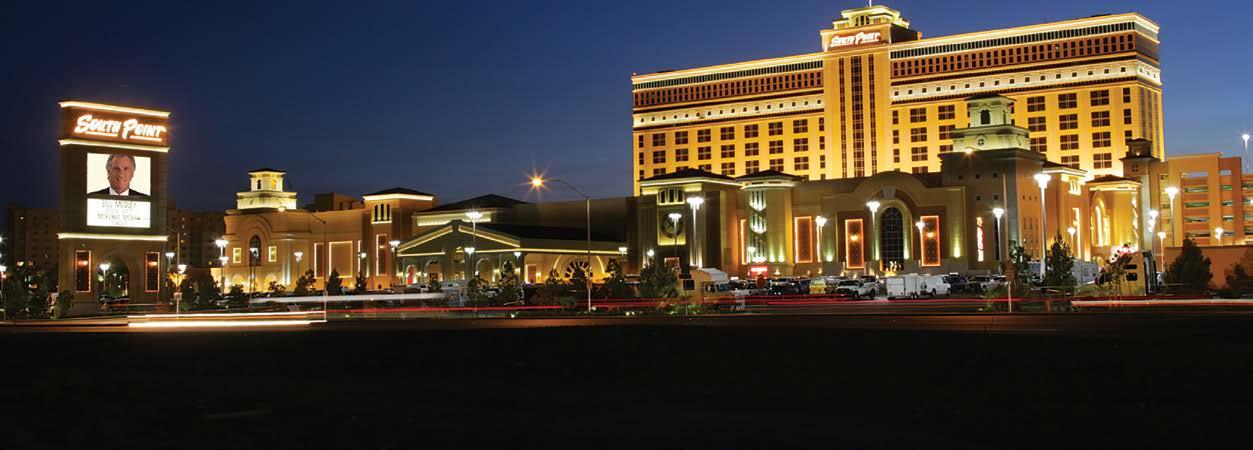
















These new releases are going to have a permanent place on your Spotify playlist.
4.“Pour Me a Drink” (featuring Blake Shelton)
5.“Have the Heart” (featuring Dolly Parton)


Post Malone’s F-1 Trillion album marks a bold evolution in his music, blending his signature genre-bending style with futuristic and introspective themes while also venturing into country music. The album explores the highs and lows of fame, wealth, and personal growth, all set against innovative beats, catchy melodies, and a surprising but seamless integration of country influences. With F-1 Trillion, Post Malone pushes the boundaries of his sound, offering fans a fresh and compelling look at his artistic journey, making it one of the most anticipated releases of the year. In addition, Malone surprised fans by releasing the “Long Bed” version of this album with nine more songs. TRACK LIST
1.“Wrong Ones” (featuring Tim McGraw)
2.“Finer Things” (featuring Hank Williams Jr.)
3.“I Had Some Help” (featuring Morgan Wallen)
6.“What Don’t Belong to Me”
7.“Goes Without Saying” (featuring Brad Paisley)
8.“Guy for That” (featuring Luke Combs)
9.“Nosedive” (featuring Lainey Wilson)
10.“Losers” (featuring Jelly Roll)
11.“Devil I’ve Been” (featuring Ernest)
12.“Never Love You Again” (featuring Sierra Ferrell)
13.“Missin’ You Like This” (featuring Luke Combs)
14.“California Sober” (featuring Chris Stapleton)
15.“Hide My Gun” (featuring Hardy)
16.“Right About You”
17.“M-E-X-I-C-O” (featuring Billy Strings)
18.“Yours”
- WHIRLWIND (BBR / BMG)
Wilson’s knack for storytelling and her deep connection to her Southern roots. Whirlwind takes listeners on an emotional ride through themes of love, resilience, and life in the fast lane, solidifying Lainey Wilson as one of country music’s most compelling voices today.
1.“Keep Up with Jones”
2.“Country’s Cool Again”
3.“Good Horses” (featuring Miranda Lambert)
4.“Broken Hearts Still Beat”
5.“Whirlwind”
6.“Call a Cowboy”
7.“Hang Tight Honey”
8.“Bar in Baton Rouge”
9.“Counting Chickens”
10.“4x4xU”
11.“Ring Finger”
12.“Middle of It”
13.“Devil Don’t Go There”
Dreamers, has fulfilled its promises to be another timeless addition to the King of Country’s legendary discography. The album blends Strait’s classic country storytelling with his signature smooth vocals, offering fans a journey through tales of rugged cowboys and heartfelt dreams. With its authentic Western themes and masterful songwriting, Cowboys and Dreamers resonates with both longtime fans and new listeners alike, further cementing George Strait’s legacy in country music.
TRACK LIST
1.Three Drinks Behind 2.Cowboys And Dreamer
3.To The Moon
4.MIA Down In MIA 5.Wish I Could Say 6.Calling From The Car 7.People Get Hurt Sometimes 8.Honky Tonk Hall Of Fame
9.The Little Things
10.The Book
11.Rent
12.Waymore’s Blue 13.The Journey Of Your Life
signature blend of Southern rock and country, infused with a deep sense of place and storytelling. With its roots firmly planted in the landscapes of the South, the album explores themes of love, loss, and life along the Gulf Coast. The Coastal Plain delivers a collection of tracks that resonate with authenticity, drawing listeners into the unique world of Muscadine Bloodline. Their distinct harmonies and powerful lyrics make this album a compelling addition to their growing discography.
TRACK LIST
1.Two Tattered Tulips
2.Daffodils
3.Earle Byrd From Mexia
4.One Man War
5.Pay Me No Mind
6.Tickets to Turnpike (feat. Kyle Nix)
7.Airport & McGregor
8.High On The Ridge
9.Rattlesnake Ridge 10.10-90
JENNA PAULETTEHORSEBACK (LEO33)


Lainey Wilson’s newest album, Whirlwind, captures the essence of her bold and authentic approach to country music. With its blend of gritty lyrics, powerful vocals, and a fresh yet traditional sound, the album showcases
14.“Whiskey Colored Crayon”
GEORGE STRAIT - COWBOYS AND DREAMERS (UMG)
The King’s most recent album, Cowboys and

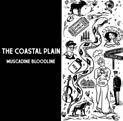
Muscadine Bloodline’s newest album, The Coastal Plain, showcases the duo’s

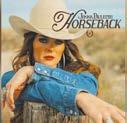
Jenna Paulette’s new album Horseback, which came out September 6, is a celebration of her authentic country roots, blending modern sensibilities with traditional Western themes. The 13-track album features
previously released singles such as “Darlin’” and “Hang Your Hat”, along with new, never-before-heard songs. With a music video for “Darlin’” released just last month, Horseback paints a vivid picture of life on the range, showcasing Paulette’s deep connection to the land and her commitment to keeping the spirit of the American West alive. The album captures the essence of the Western lifestyle, making it a mustlisten for fans of all genres of country music.
1. Wild Is Her Favorite Color (Lori McKenna, Liz Rose, Hillary Lindsey)
2. 3 Kings (Jenna Paulette, Parker Welling, Casey Brown)
3. The Devil Is An Angel (Jenna Paulette, Parker Welling, Casey Brown)
4. Run The Damn Ball (Rodney Clawson, Casey Beathard, Hunter Phelps)
5. The Dirt (Jenna Paulette, Will Bundy, Hillary Lindsey)
6. Chasin’ Whiskey (Joe Fox, Tony Lane)
7. The Prophet (Granddaddy’s Song) (Ashley McBryde, Matraca Berg, Lori McKenna)
8. Outside (Kelley Lovelace, Ashley Gorley, Dallas Davidson)
9. Prairie Primrose (Jenna Paulette, Will Bundy, Lydia Vaughan)
10. Darlin’ (Jenna Paulette, Jess Cayne, Matthew Morrisey)
11. Horseback (Jenna Paulette, Will Bundy, Lydia Vaughan)
12. Hang Your Hat (Jenna Paulette, Smith Ahnquist, Jim Beavers, Rhett Akins)
13. A Hill To Die On (Jenna Paulette, Smith Ahnquist, Lynn Hutton)
Rodeo fans across the country were disheartened to learn that Stetson Wright, one of the most celebrated cowboys of this generation, will be sitting out for the remainder of the 2024 rodeo season due to recovering fully from an injury that he suffered last year. Wright, an eight-time World Champion known for his prowess in both bull riding and saddle bronc riding, let fans know via his social media at the end of July that the rest of the season just wasn’t in the cards.
“Nobody wants to sit out a full season when it’s something you’ve always wanted to do growing up,” Wright said. “I’m going to attack the rest of this recovery process just like I do every time I get on a bucking horse or a bull. I’m going to push myself but also be cautious knowing it takes time. My hope is to be back by Denver to kick off the 2025 season.”
for another standout year but we can all agree that health and wellbeing tops winning any day. Wright’s absence will undoubtedly be felt this year at the National Finals Rodeo, where his athleticism and competitive spirit have made him a fan favorite. As he continues his recovery journey, the rodeo community is rallying behind him, sending well-wishes and hoping for a full and speedy return to the arena.

Who Will Take His Place in Saddle Bronc for the Top Fifteen at the NFR?
This news came as a major blow to Wright’s fans and the rodeo community, as he was on track
Right now, it is still anyone’s game for who will be heading to the Thomas and Mack Center in Las Vegas. Rodeo contestants still have until the end of September for regular season rodeos to increase their earnings to make it in the top fifteen. Right now, we are seeing both Ryder and Statler Wright in the top 15, and with the consistency we have seen from the rest of the Wright family, there is a good chance their spots are solid. A few other wildcards are the Hay brothers, Logan and Dawson. Currently, Dawson is coasting around the top ten mark, and Logan floating around that fifteenth spot. At this point, it’s a race to get the most earnings, and the guys in spots 10-15 could easily bump up or down depending on the rodeos they attend and the kinds of rides they have.
Young Living’s Last Chance Rodeo | Sep 27 - Sep 28 | Mona, UT
Fort Bend County Fair & Rodeo | Oct 4 - Oct 6 | Rosenberg, TX
NILE Pro Rodeo | Oct 11 - Oct 12 | Billings, MT
Arcadia Fall Rodeo | Oct 19 - Oct 20 | Arcadia, FL
Cinch Roping Fiesta | Oct 26 - Oct 27 | San Angelo, TX
Helldorado Days Rodeo | Nov 8 - Nov 9 | Las Vegas, NV
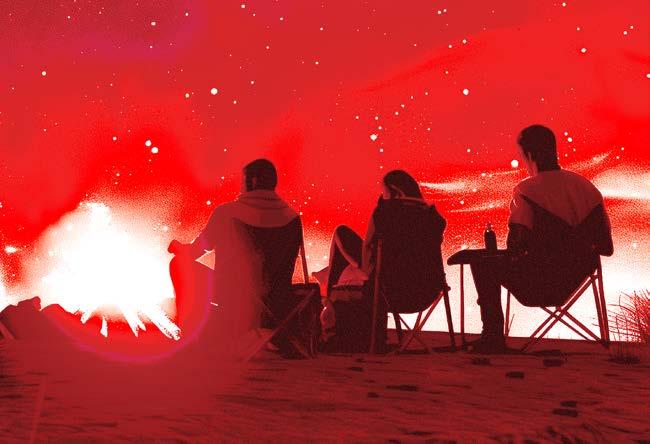
The Western industry is steeped in a rich history of grit, tradition, and the pioneering spirit of the American frontier. For generations, these stories have been passed down through tales of cowboy legends, epic rodeo moments, and the rugged beauty of ranch life. Today, a new generation of storytellers is emerging, breathing fresh life into the narratives that define the Western way of life. These modern voices—ranging from rodeo announcers to country singers, content creators, and ranch advocates—are ensuring that the legacy of the West continues to thrive in an ever-evolving world.

In the age of social media, storytelling has taken on new forms, and content creators like Katie Van Slyke are leading the charge in bringing the Western lifestyle to a global audience. As a content creator and influencer, Van Slyke uses platforms like Instagram and YouTube to share her life as a modern-day cowgirl. Her posts offer a glimpse into the daily challenges and triumphs of ranch life, from caring for livestock to competing in rodeo events. With her down-to-earth personality and genuine love for the Western lifestyle, Van Slyke has built a loyal following that spans far beyond the traditional Western community, inspiring countless others to embrace the cowboy spirit.
Country music has always been the soundtrack of the Western lifestyle, and rising star Zach Top is one of the new generation’s leading voices. With a sound that blends traditional country influences with modern flair, Zach Top’s music captures the heart and soul of life on the range. His songs tell stories of love, loss, and the open road, echoing the timeless themes that have always defined country music. Whether he’s performing at a honkytonk or headlining a rodeo, Zach Top’s music connects deeply with listeners, reminding them of the values and experiences that make the Western way of life so unique.
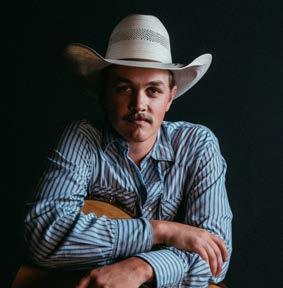
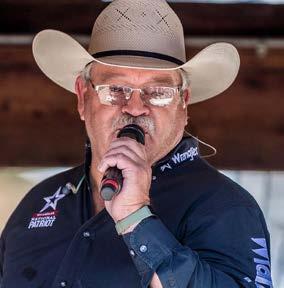
Among the most revered storytellers in the Western industry is Steve Kenyon, a rodeo announcer whose voice has become synonymous with the sport itself. Kenyon has spent decades behind the microphone, bringing the excitement and drama of the rodeo to life for audiences across the country. His deep knowledge of the sport, combined with his passion for the Western way of life, allows him to capture the essence of each ride, each roping, and each cowboy’s journey. Kenyon’s narration goes beyond mere commentary; it’s an art form, painting vivid pictures with words that resonate with fans and participants alike.
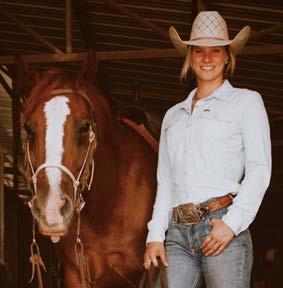
While the romanticized image of the cowboy riding into the sunset remains iconic, the reality of ranch life is complex and challenging. Emma Coffman, a passionate ranch and beef advocate, is one of the voices dedicated to educating the public about the realities and importance of the ranching industry. Through her advocacy, Coffman highlights the critical role that ranchers play in sustainable agriculture, environmental stewardship, and feeding the world. Her storytelling extends beyond the ranch, addressing the challenges and triumphs that come with the territory, and ensuring that the hard work of ranchers is recognized and respected.
These storytellers, from Steve Kenyon’s electrifying rodeo calls to Zach Top’s heartfelt ballads, Katie Van Slyke’s modern-day cowgirl chronicles, and Emma Coffman’s passionate advocacy, represent just a few of the many voices that are preserving and promoting the Western way of life. In a world that is rapidly changing, these modern storytellers play a crucial role in keeping the traditions of the West alive. Through their work, they ensure that the values, history, and culture of the Western industry continue to inspire future generations, reminding us all of the enduring spirit of the American frontier. As long as there are voices to tell the tales, the legacy of the West will never fade.
BY KRYSTA PAFFRATH
From a small-town radio disc jockey to one of the most recognizable voices in rodeo, Steve Kenyon’s journey is nothing short of remarkable. With over two decades of experience in rodeo announcing, Steve has not only mastered the art of storytelling but has also played a pivotal role in connecting fans with the sport. In this interview, Steve shares his humble beginnings, the unexpected turn that led him to rodeo, and the wisdom he’s gathered from mentors like the legendary Bob Tallman. Through his words, we gain insight into the importance of the announcer’s role, the power of storytelling, and the passion that drives him to continue shaping the future of rodeo.
Q: Steve, you started your career in radio long before you became a rodeo announcer. What did your early days in radio look like?
Steve: I started as a small-market disc jockey. When I was 17 years old, I worked part-time at a local radio station in Klamath Falls, Oregon, which was the closest station to the small town where I grew up. I worked Saturday nights, signed off the station, and then crashed at my sister’s house or nearby, only to return Sunday morning to open up the station. Through those experiences, I learned the ropes—how to present myself and develop skills that would serve me well later. I did everything from high school and college sports playby-play to hosting morning shows, newscasts, and talk shows. It was a time of growth and learning, which rounded me off for the rest of my broadcasting career.
Q: How did your career in rodeo start?


Steve: We were living in McMinnville, Oregon, when a group of high school kids wanted to put on a high school rodeo. These were the same kids I knew from broadcasting their football and basketball games. They weren’t happy with the rodeo announcer they had, and since my wife and I had been riding horses with them, they asked if I’d be interested in announcing. I thought, “Sure, why not?” I honestly didn’t expect to get paid—I just wanted to help out the kids. I was upfront with them, telling them I had never done this before
and, to be blunt, I was terrible at it. But, whatever I did, I did well enough to get hired for another high school rodeo and a few open jackpots. One thing led to another, and I found myself on a new path. It was fun, and I knew so little at the time. In fact, when I received my first check and was compared to Bob Tallman, I thought, “Who the heck is Bob Tallman?” Later, I got to know Bob well, and he became a significant influence in my career. Without him, I wouldn’t be where I am today.
Q: Diehard rodeo fans know how important an announcer’s role is, but for those who might not, just how crucial is your role as a rodeo announcer?
Steve: The rodeo announcer is the link between everything happening in the arena and the fans. Many fans may not fully understand the rules of the events. I usually ask how many people are attending their first rodeo, and I’m always surprised by the number of first-timers. Our job is to make sure they understand what’s happening. I remember reading an interview with Mel Lambert, who always assumed the audience knew nothing about rodeo, so he explained the events thoroughly. I strive to be that connection between the arena and the stands, ensuring fans understand and enjoy the experience. Whether it’s a small local rodeo or a major event, my goal is to be informative, entertaining, and relatable. I hope that by the end of the night, those who were new to rodeo leave as fans, just as Mel Lambert did for me.
Q: Your storytelling goes beyond the announcer’s stand. Why is it important for you to share the stories of rodeos?
Steve: We need to relate to people. It’s not enough to just rattle off stats or say things we think are funny. We have a great opportunity to be storytellers. When I did play-by-play for traditional sports like baseball, I admired the great announcers who were storytellers at heart. They shared the lives of the players and brought the game to life. In rodeo, you have to pick your moments because it can move quickly, but when you do get the chance, telling the story of who someone is, where they came from, and why they do what they do adds depth to the sport. It helps fans connect on a deeper level.
Q: You’re currently at the Gooding Pro Rodeo in Gooding, Idaho, and if I’m not mistaken, this is your 23rd year at that rodeo. What is it like to be a part of an event like that for over two decades?
Steve: Gooding has been quite the journey. When I first started, I brought the speakers and played the music while announcing. It was okay, but it wasn’t great. The crowd was somewhat engaged but not fully. Over time, we began adding energy and life to the event. Don Gill, the fair manager, and a passionate advocate for the rodeo, brought in new ideas. He hired Jill Franz, now Jill Logan, who became a threetime Music Director of the Year in the PRCA. Jill brought a sense of energy and electricity to the arena. We also introduced a tailgate show, interviewing contestants before the rodeo started, which engaged the fans even more. This rodeo has evolved into one of the most electric events of the year, despite being in a small town. The atmosphere is incredible, and it’s been a lot of fun to be part of it.
Q: What advice would you give to the next generation of rodeo professionals?
Steve: My advice to the next generation is to take care of the sport. Rodeo has seen phenomenal growth, with sell-out crowds and high TV ratings, especially on the Cowboy Channel. The sport is on an upswing, and it’s important to be good stewards of it. The country is hungry for what we offer—the Americana, the traditional values, the colorful presentation of the flag, and the prayer before the rodeo. If you’re a rodeo announcer, remember that you’re the voice of the industry. Be a storyteller, a positive force, and recognize the power for good that this industry has. Rodeo gives back millions to charities and is produced by volunteers. Take care of this industry, let it continue to grow, and we’ll all benefit from it.
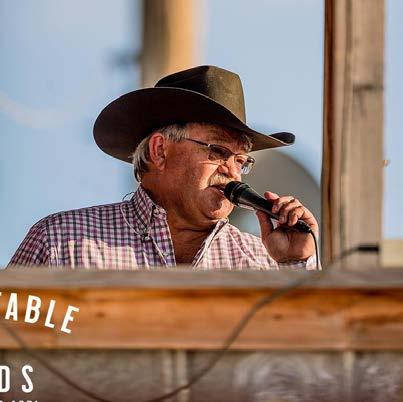

Q: You’ve become one of the most recognizable voices in rodeo. What else do you hope to achieve in the coming years?
Steve: I’m 64 years old and will be 65 soon, but I’m nowhere close to retiring. I love what I do too much. I hope to continue working for several more years. I’ve been honored by the Women’s Professional Rodeo Association twice as Announcer of the Year, and I’d love to be nominated by the PRCA. But honestly, I just want to keep working, telling stories, and helping fans enjoy the rodeo. If I can do that, I’ll feel like I’ve accomplished something. Whether it’s announcing better rodeos, doing more TV work, or just making fans happy, that’s what I hope to continue doing.
Steve’s Closing Thoughts
How cool is it for a kid who grew up on a potato farm in Southern Oregon to have this career? There are so many things I’ve been able to do and people I’ve met because of this sport. It’s humbling. I wanted to be a play-by-play announcer for the Portland Trail Blazers, but that didn’t work out. Instead, I found something even better. I’m grateful for the opportunities this industry has given me. It’s been a legacy, and I’m truly humbled by it.
As Steve Kenyon reflects on his career, it’s clear that his passion for rodeo and storytelling remains as strong as ever. From his early days in radio to becoming a celebrated voice in the rodeo arena, Steve’s journey is a testament to the power of perseverance and dedication. He continues to inspire the next generation of rodeo professionals to uphold the values and traditions that make the sport so special. As Steve looks to the future, his commitment to sharing the stories of rodeo and connecting with fans ensures that his voice will remain a vital part of the rodeo world for years to come.
You can keep up with Steve on the rodeo road by following him online.
FACEBOOK: @8SecondsMedia
WEBSITE: 8secondsmedia.com
YOUTUBE: @8SecondsMedia
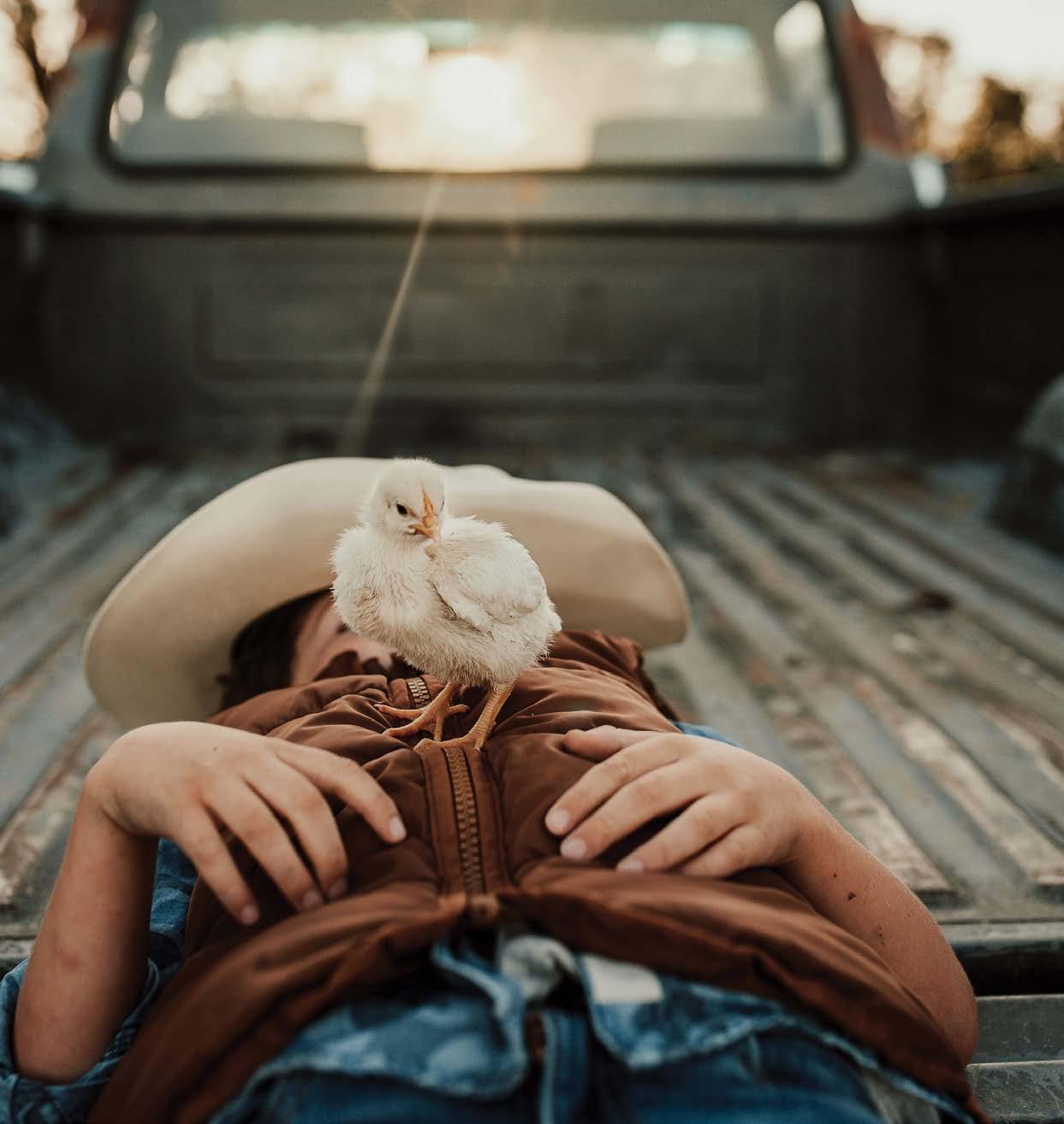

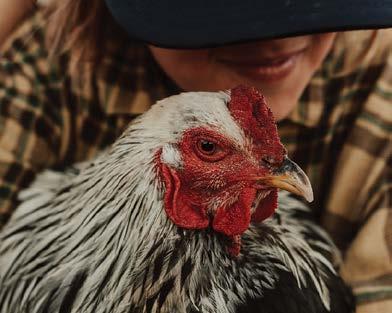

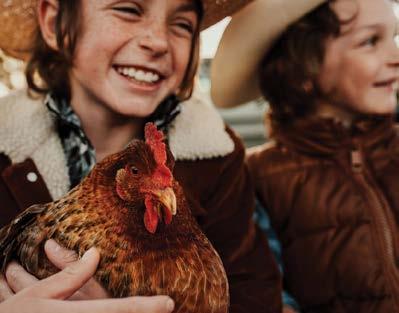

Balancing Passion and Purpose: How Katie Van Slyke Became an Outdoor and Equestrian Influencer by Staying True to Herself
BY KRYSTA PAFFRATH

Iwas thrilled to have the chance to sit down with content creator and influencer, Katie Van Slyke. Katie is a multi-talented influencer and content creator who has made waves in the outdoor and equestrian worlds. From humble beginnings to a flourishing online presence, Katie’s journey is a testament to the power of authenticity, passion, and dedication. As a hunter, horse enthusiast, and advocate for the Western lifestyle, she’s cultivated a following that resonates with people from all walks of life. Today, she opens up about her unexpected rise to social media fame, the balancing act of multiple hobbies, and her mission to make the equestrian community more accessible to newcomers.
Krysta: I’ve been following you for quite some time now on social media but can you dive a little deeper into how you’ve grown into the presence you currently have online?
Katie: It was very much an accident. It started back in 2017, and I’m sure there were big influencers back then, but I wasn’t aware of them, how brand deals worked, or even how you could make money off of social media. I posted an outdoorsy picture that got reposted on a bunch of different Instagram pages, who then tagged me, and a bunch of people started following me. That was my first big jump, but until then, I had only really shared horse stuff. I was fresh out of college and over the summer, going into fall, I started sharing a little bit more about hunting and the outdoor lifestyle. Then that was my next big push, people really resonated with that content so my following really grew fast after that. In 2017 I started with, probably, 3000-4000 followers in April, and then by September, I had 50K, then by that next April, I had 250K and then it just kind of kept going from there. All of the growth at that time was almost strictly from content in the outdoor space.
It’s funny because I came from a background of showing horses when I was growing but at the time, no one wanted to hear about it. Back then, being a horse girl was not a cool thing and it wasn’t anything that anyone wanted to learn about. Which is why I kind of just leaned into the outdoor space, in addition, my show horse had just retired, and I wasn’t showing very much because I was in college. I didn’t really start sharing horse and farm content until the 2021 foaling season. That was about the time when I started my TikTok and I had a couple of videos blow up with the horses. That was the year I started showing the horses a lot more but still very heavy in the hunting space. I still didn’t think people cared that much about horses. but then it started growing like wildfire. Then the biggest boom that got everything going was the addition of the mini cows, Poppy and Petunia. If we went back five or six years ago, is this where you thought you would end up?
Oh my gosh, no. I had no clue and I still very much just kind of try to leave things as open as possible, because every time I try to make a plan, it doesn’t work out. It’s definitely in God’s hands and his plan is so much better than mine. Whenever I leave it up to that, it ends up working out so much better. But I never could
have fathomed what the situation is right now, and I couldn’t be more grateful for it. You’ve had your hands in a lot of buckets with everything from hunting to showing horses and several things in between. Can you speak a little bit about what it’s been like to balance and grow all of those hobbies? And maybe touch on some of the challenges you’ve come across as well.
I think there’s something to say about being in different seasons of life. I had my very heavy show horse season, which I would hope to have again. Then in college, I leaned into my other interests like hunting. And that was something that my husband and I bonded over when we first started dating. So I didn’t leave the horses behind, but I put a little more time into those interests while I could. Then it got to the point where the business side of things was leaning farther into the farm and horse side. So I still hunt, but I don’t do as much in the hunting industry these days. Right now, I’m in the horse breeding season and I kind of hope that continues.
One thing that’s important to note is that I couldn’t have this many interests without the help that I have and without a supportive family. For example, I used to be the one helping my husband put in all the food plots for hunting, and I still do a little bit, but he takes over a lot more of setting the deer stands and putting the trail cameras out. So if I didn’t have him sharing that interest with me and having him help me in that way, I wouldn’t be able to have my hands in so many other buckets. So a big part of it is all the amazing help that I have as well, not only in life but in the barn with the horses and my stallions as well.
With having so much influence online, is there anything in particular that you hope to get across through your content?
There are a couple of answers to that because the one thing I think I’ve always focused on throughout the entirety of my presence on social media is to be yourself and not mold yourself into what other people want you to be. That was a big thing in the hunting space, I always had on fake lashes and had my makeup done and people had such an issue with that. Then if you’ve been in the equestrian community for five minutes, you know how critical it can be.

It can be such a hard world to come into if you did not grow up in it, have super supportive parents when you were younger, or if you weren’t financially able to at the beginning. But in my videos, I like to create a foundation for people who don’t know horses or don’t have the tools and access to knowledge about horses or the industry. So sometimes my videos might seem very simple, but I want to make that knowledge accessible and encourage people who want to get into it because that’s the only way the industry will survive if new people get into it. That’s a very big mission of mine. You share a ton of real-life moments in your journey, including the births of many of your horses, vet visits when things don’t go as planned, and emotional moments such as when you won the auction for
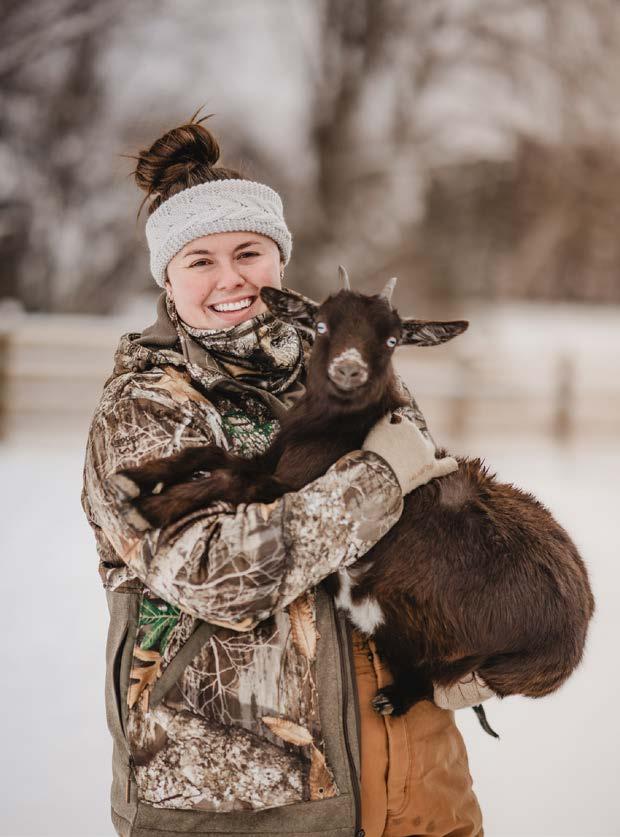
your stallion, VS Code Red. Where do you draw the line as far as sharing online goes? How do you determine what gets shared and what doesn’t?
I do share just about everything and so it’s hard to say what I don’t, but I would say the one thing that I can think of as an example. We had a tragedy this last foaling season, and we lost a mare and her foal. We actually had to do an infield C-section, and that wasn’t going to be the most respectful thing for me to show. So online, I very much glazed over it and told my audience that she passed, and then it was horrific, but it was not, in my mind, respectful or needed to show more details than that. I felt like I could get across that it was horrific without all those extra details, so I try to keep the respect of the animal at the forefront. I really do share a
lot of details, but sometimes it’s better just to make a video saying, “Here’s what happened..” but not necessarily show all the details.
At this point in your journey, you’ve expanded to having your own merch, your own line of silicone rings with Groove Life, expanding your mini farm, and owning a multi-million dollar stud. Is there anything else on your bucket list that you’d like to pursue?
Honestly, right now, I’m giving all my time and effort into those things. I think if you get too greedy, instead of focusing on what you have, that’s when the danger zone hits. So I am just focusing on what I have right now and being so grateful for it. I am open to new adventures, but I do not have anything in mind right now, just

kind of leaving it up to God and whatever he has planned.
As we wrap up today, I just want to acknowledge how brave you’ve been in pursuing your passions, regardless of what’s been thrown your way. With that being said, what would you say to someone who might also have several hobbies or passions that they are balancing and are feeling pressured to pick one thing or the other?
I would just say, follow what’s important to you and if only one thing is important to you, then that is totally fine, you shouldn’t have to be good at everything. But if you want to wear more than one hat, then more power to you. I think you can do it, but I would say don’t try to do it by yourself. If you have the
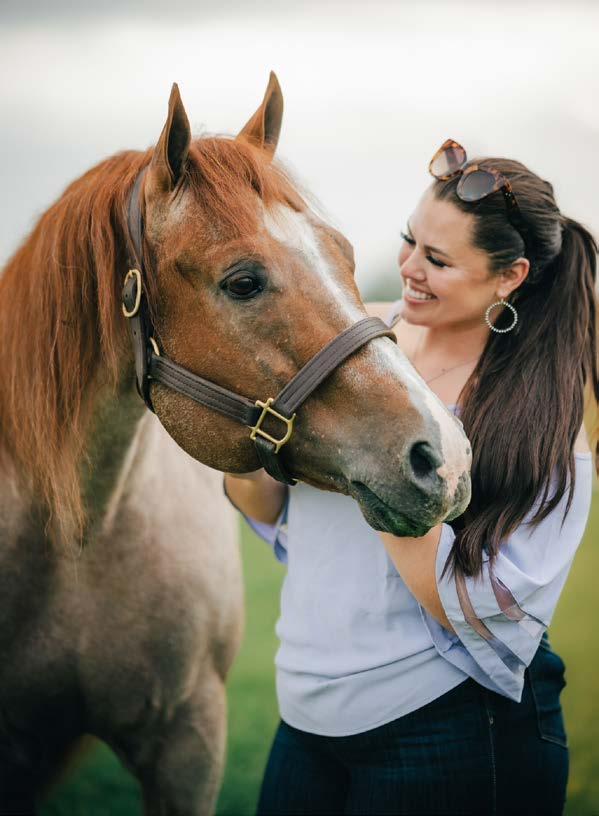
ability, if you have friends, if you have a supportive family, if you have a spouse, if you have partners, lean into them and build a strong core, because that’s really the only way you can do it.
If one thing is clear from this conversation with Katie, it’s that her journey is far from over. With a commitment to staying true to herself, a passion for sharing her knowledge, and a deep respect for the animals she works with, Katie continues to inspire her followers every day. Whether she’s hunting in the great outdoors, tending to her mini farm, or showcasing the many facets of horse ownership, Katie’s message remains consistent: follow your passions and embrace the unexpected twists along the way. Her story is a powerful reminder that with the right support system and an open heart, you can pursue multiple dreams without compromise.
If you’re looking for a wholesome content creator that you can feel good about following, I highly recommend giving Katie a follow on your favorite platform. I’ve listed her social media handles below and you can learn more about Katie and her farm adventures at KatieVanSlyke.net.
Daniel Cain grew up with music in his soul but it took him going home to find his voice.
BY KRYSTA PAFFRATH
Daniel Cain is a singer-songwriter based deep in the roots of his Appalachian heritage. His story is not the typical path that musicians take to suc cess. It’s been filled with plenty of twists and turns that he’s relied on faith to guide him through. A similar theme you’ll find throughout this interview is that sometimes the thing that we are seeking the most isn’t actually where we are headed or even end up. Daniel wasn’t on a path to becoming a musician, but the cards he was dealt told a different story. Now, I’m thrilled to be able to share that story with you. Enjoy!
Q: What was it like growing up in a musically inclined fam ily? Were you encouraged to pursue music as a career?
Daniel: I guess it was pretty musical ha! My dad ran a guitar store, and he was also a regional musician. My mom sang in the choir. So, music was definitely part of my life but my parents often nudged I shouldn’t pursue a career in music. Mom was a career educator, so naturally I was encouraged to focus on academics. I remember my dad would say things like, “You’ve got so many other options than being a musician, son.” My dad, who was my hero despite being tough, was ironically the same person telling me not to pursue it, which was always hard for me to accept.
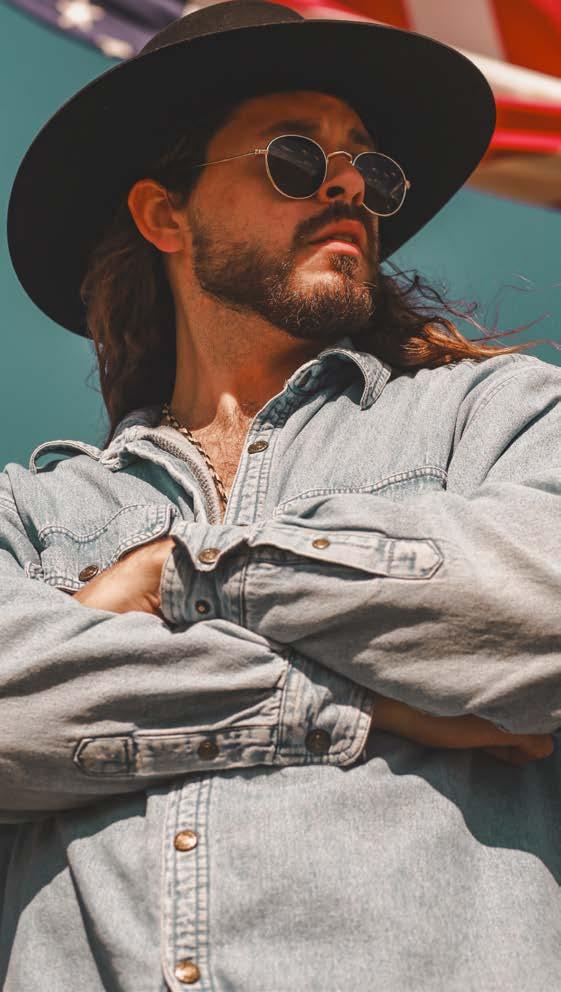
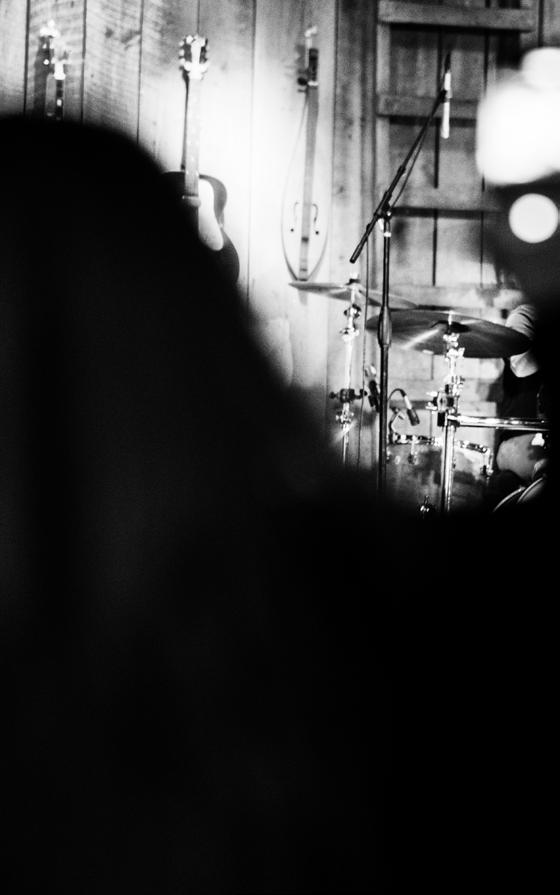
I started playing guitar for fun in middle school. I had a natural talent for it—I could figure out how to play something in a day, but I never stuck with it, probably because of the conflicting messages I received growing up. Then, during my first year of college, I injured my shoulder while training in track and field, which led me to start playing guitar seriously for the first time without any external influence. That’s when I realized how much I truly loved it—at that time, it was like a closeted dream to be a musician.
My alma mater allowed me to study abroad in Europe, and it was there that I was asked to join a band by a foreign exchange student at the same school. She heard my voice and asked, “Are you American?” When I said yes, she invited me to be in her band and sing some covers by The Doors, The Kinks, and maybe the Stones, but I can’t remember all that well.
It was a pivotal moment for me—my first time singing on stage was actually in England out of all places for a satellite kid from rural Kentucky. I was shy and timid, but the English audience wasn’t shy at all about telling me to be more confident. After that experience, I was fired up about pursuing music. When I returned to Kentucky, I joined the school’s Kentucky Folk Ensemble. It was during that time that I gained a great music mentor in the director of the group and played my first song as an aspiring singer/songwriter for an audience. After college, I decided in my heart to pursue music in career, but I didn’t have any money and wasn’t sure how to get started. I saved money for a year bartending and serving and eventually moved to Nashville with a couple thousand dollars to follow my dream.

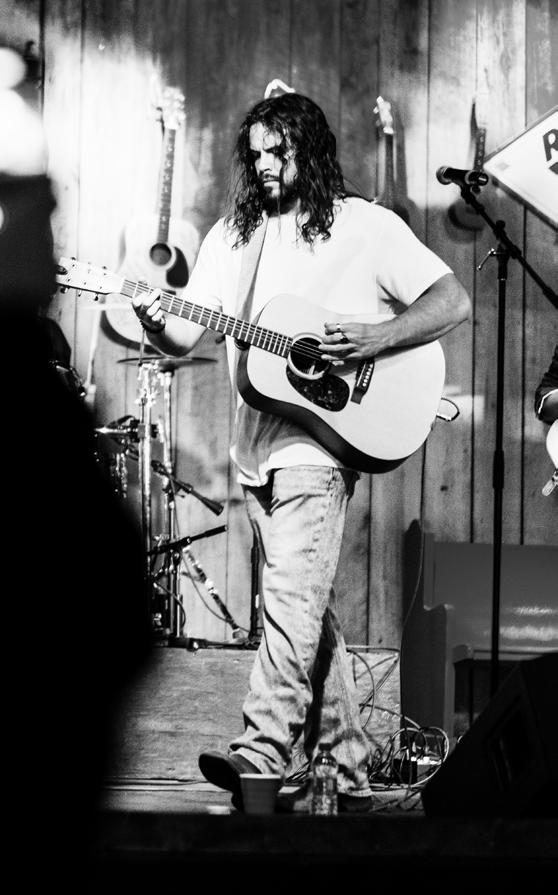
Q: Can you describe what it was like for you to find your unique voice and place in the country music industry?
Daniel: It was not a linear path. When I moved to Nashville, I ran out of money within two months. In my time there, I never got on stage and ended up working three jobs for about two years just to get by. Then 2020 came around, and everything changed for me. Up until then, I had been making rap beats on my computer at home and had dabbled in music, like participating in the Kentucky Folk Ensemble, as I mentioned above, and then my short stint singing with the cover band in England. But that was the extent of my musical expression up until that point. 2020 began with recent heartbreak, a high dose of lonesome, and with seemingly no real friends around—just me, my dog Biggie, and my guitar.
Then, in February, my grandma passed away, and a month later, the East Nashville tornado hit my house. Ten days after that, COVID hit, and suddenly, my part-time job hours were cut, and I was displaced from my home. Everything felt chaotic—my world was falling apart. Then to top all of that off, I got a call from my mom telling me that my dad was just diagnosed with terminal cancer. He and I weren’t really seeing eye to eye in life, but when I got that news, everything changed. I can still remember the day my dad got that diagnosis. I walked outside, and the whole world just went gray. The color of the world literally just left my eyes. It was a surreal moment, and it was there I pretty much realized I had to grow up and make some big changes. I ended up moving back to Kentucky to be closer to my family. I decided to focus on smoothing out rough ends with my dad until the end. That decision was transformative for me—it made me dig into my roots. I’m a child of the digital age, born in 1995, but I also have a deep Scots-Irish Appalachian heritage in my last name, Cain, given to me by my daddy, Jeff Cain. It was something I used to be really ashamed of. The world really did that to me as a kid. But when my dad got sick, I realized I had a responsibility to learn about my heritage and embrace who I really am.
One pivotal moment was when I was sitting on the back porch playing an old “Mother” Maybelle Carter song, “Wildwood Flower,” on the guitar. My dad joined in, and we recorded a video—it was the last time we played together. Afterward, he asked me, “Why haven’t you worked up a set yet?” That was the moment I realized I had always sought his approval, even if I resented him at times. I didn’t want to fight him to do what I wanted; I wanted his support. That moment lit a fire in me, and I started working on music with intense focus from that point forward.
By October 2020, I did my first open mic show at Austin City Saloon in Lexington, Kentucky. I played three songs, and afterward, someone came up to me, asking who I was. That small moment felt just about as good if not better than any bigger performance I’ve done since. It was like that first time successful feeling that you just keep chasing. It led to more opportunities—my first opening slot at another venue, and eventually, my own show. By January 2021, I was fully committed to becoming a full-time performer.
Q: In another interview, you mentioned that “God gives us our talents to share with others; if anything, it is selfish when we do not.” How has this philosophy shaped your decisions in your career?
Daniel: Well, I think this philosophy has been something I’ve relied on to get over so many fears and anxieties that stop me in my tracks, almost daily. Usually, reminding myself of who put me here and gave me this hand also gives me perspective to see that the things stopping me are rooted in the wrong reasons to even do this in the first place. Fears of being rejected, aka the need to be validated by others. That’s a battle you’ll never win. People can never be enough to fill that void. Only God. My opinion is that we all have a God-sized hole. And so, if you can look at your natural talents as a gift from God, then you see how expressing those for others isn’t necessarily to be accepted or not by them. Not for vanity. Not for self-righteousness. It’s a gift from God for you and for others. It’s to please God, hopefully others as well, and that pleases me. Make a joyful noise.
I try my best to make sure I’m spiritually convicted in my decisions. It’s led to a unique, one-on-one path with God. That path doesn’t always have to be something society deems spectacular. Even if it were something seemingly undesirable —a job some might look down on—it wouldn’t matter to me, because if that’s the path God has for me, then that’s the path I’ll take, and I’ll hopefully make a positive impact on others along the way.
Q: Are there any artists that you’ve drawn inspiration from?
Daniel: My biggest inspiration is my dad. He lived life on his own terms, working for himself and finding fulfillment in the small things. Growing up around him and his love for music shaped me deeply—not just in style, but in approach to this life as a whole.
Musically, I’ve had many influences over the years, ranging from Elvis, Led Zeppelin, and The Beatles to post-grunge bands like Nirvana. I mean really, I have a new hyper-fixation at least weekly with a band, genre, decade, you name it. Music to me is like Willy Wonka’s never-ending gob-stopper. When I first started openmics, artists like Charlie Crockett, who captures the modern cowboy lifestyle, really resonated with me. His song “Welcome to Hard Times” came out in 2020, and it struck a chord. I also leaned on Mac Miller songs during that time, and worked up my own rendition of “Good News” which helped me develop my skills.
In the Lexington scene, Tyler Childers had a big influence on me, especially in how he writes about the harsh realities of Appalachian life. Other Kentucky legends like Sturgill Simpson and Chris Stapleton have also inspired me with their commitment to doing things their way. In general, they all hit me like a brick when I was going deeper into finding who I am in the lens of my heritage and trying to accept what I was born into.
Lately, my ears have been drawn to rock and roll and the more-so acoustic grunge of the ‘90s. My goal is to blend all my influences however and whenever I want—rock, blues, folk, classic country, bluegrass, you name it—into something unique, without ever compromising my own voice or poetic expression. Really just whatever moves me, I want to breathe something back out into the world that amplifies that.
Q: Music is a form of connecting and telling stories. How do you incorporate storytelling into what you do and the music you create?
Daniel: As a solo artist, I like to make each show unique. Jimi Hendrix is one of my idols because he never played a song the same way twice. When I’m on stage, I try my best to be true to how I feel that night.
When it’s just me and my guitar, especially at a listening-room venue, I enjoy telling stories about how my songs came to be, either before or after playing them. Storytelling is a big part of my solo performances.
Then, in my songwriting, I focus on creating songs with a message or a story. Almost all my songs are autobiographical for now, so I can always explain how they were inspired, why I wrote them, and the events behind the lyrics.
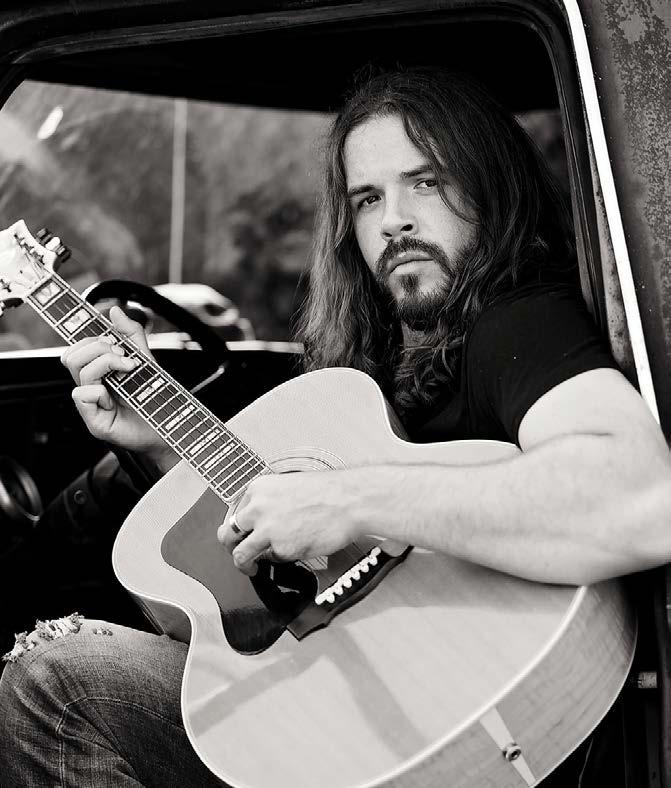
Q: When people see you perform live, listen to your music, and watch your videos, what do you hope they come away with?
Daniel: Music is both healing for me and a way to give others something meaningful. I want to create music that makes people reflect and provides them with something to lean on. Someone once said, “You can either pacify or electrify with your music.” I aim to do both in a positive way—pacify those who are negatively charged and electrify those who are feeling down. I also make music to find purpose for myself, as I’m naturally inclined to want to help others. Ultimately, I just want to serve people through my music and give people something to identify with.
Q: You have a six-song EP that came out on June 14th, can you tell us a little more about that collection?
I recorded about 9-10 songs out in the hills of West Virginia over the past year with my friend John Price of Appalachia Untold, a channel he created to spotlight original songwriters from our region. I decided to pick out 6 of those songs and put them together as an EP called Appalachia Untold Sessions. It’s an acoustic EP recorded on field microphone just live, raw, and uncut as you can make it. Those birds in the background are the real thing and they just happened to do a great job singin’ background harmonies that day.
Q: What can people expect from your debut album?
Daniel: The album I’m working on is called Songs for My Father. If I’m blessed to live a long, healthy life and have a lasting career, I’ll always be proud that this is my first album. Unlike my acoustic EP, it will be a full-production album with a complete band.
Before I decided to pursue music as a full-time career, my initial goal was simply

to play songs for my father while he was sick, to give him something to vicariously live through. Our family is doing okay, but we’re not wealthy I wouldn’t say, and my dad doesn’t have a gravestone yet, which has weighed heavily on me. I feel spiritually convicted that this album, at the very least, will serve as a personal gravestone for him. If I can share that with the world, it would mean a lot.
The idea in one sense is truly have a gift for him that I’m hoping he can somehow see and hear. In another sense, it’s to reflect how he influenced the sound you hear from me. It’s like saying, “This is my heritage; I’m a chip off the old block.” The music is the next generation of what my dad might have put out if he had released albums. Q: I think we’ve seen a surge of people turning away from mainstream country and more to music that means something and touches people differently. What are your thoughts on this shift?
Daniel: It’s been both refreshing and inspiring. Before this surge combined with the divine timing of my own personal journey, I don’t know if I’d have ever felt an opportunity to take a stand in this approach to playing music. Early on, I felt this sense of opportunity to be myself, especially with the spotlight being put on my region by artists like Tyler Childers and Sturgill Simpson.
I do have mixed feelings about it. While it’s true that this attention is a good thing, I’ve seen what happens when a movement becomes too popular. It happened with grunge, which started with bands like
Soundgarden and Nirvana but got watered down by label-created bands until it’s just a caricature of the real thing and it spoils and fades. The same thing happened with punk. Arguably it’s happened over and over with every good musical movement really. When a genre becomes oversaturated, it often loses its authenticity and fades away. That’s one thing I do not want to be apart of.
I fear that the same thing is happening now with the current sentiment, where anti-pop is becoming pop. Once something becomes mainstream, it risks losing its essence that gave it the critical attention in the first place. That’s why I try not to define my identity too closely with what genre I’m involved in at the moment. The artists who endure, like Johnny Cash, transcended trends and go through a lot more dark times and times of being laughed off than gets written down on the record when it’s all said and done. He spanned decades because he evolved with the times while also remaining undefinable. While I acknowledge the shift, I also believe that the realness of what’s happening now won’t last forever, at least in this way and it’s important to appreciate it while it does.
You can find Daniel’s latest EP wherever you listen to music. Make sure to also follow Daniel on Facebook and Instagram for updates on his debut album.
Facebook: Daniel Cain // Instagram: @danieltoddcain
What it means to share the story of agriculture online and how we can better advocate for our farmers and ranchers.
BY KRYSTA PAFFRATH

Krysta: Can you tell us a little more about your background, history, and passion for agriculture and ranching?
Emma Coffman: Although my parents were not producers, I was always drawn to agriculture and that way of life. I enjoyed working with my hands, seeing progress, and being around God’s creatures. In my youth, I competed in stock shows in 4-H, worked on ranches, and spent every moment I could learning about the field. This early-discovered passion led me to attend Texas A&M University, where I majored in animal science. I knew I needed production experience, so I worked in the beef cattle, sheep, and equine fields to gain as much exposure as possible. I did internships, worked four jobs, participated in student organizations and judging teams—whatever I could do to learn more.
A study abroad program took me to Australia, where I discovered how much I loved learning from other countries and sharing how we do things in the United States. I accepted a job there to work on a cattle station, but COVID changed my plans. I ended up in Virginia, working as a livestock production specialist, which was a blessing in disguise. I learned so much in that role and later moved to Texas, Oklahoma, and New Mexico to work with feedyards and grow yards as a sales representative for Zoetis. This role allowed me to manage data, build relationships, and continue my passion for day work.
During this time, my online agriculture advocacy began to take shape through my platform, Double E Ranch. When the Zoetis division I was part of was acquired, I had the opportunity to explore consulting and advising for companies and producers. I later took on a manager’s position at a cow-calf operation in the Texas Panhandle,
reconnecting with my passion. Today, I work as a regional sales manager for Vytelle, covering five states in the Southwest, while continuing to advocate for agriculture through Double E Ranch. I’ve met so many incredible and influential people along the way, and I’m excited to see what the next chapter holds.
You’ve gained a lot of traction on social media with your advocacy videos. Can you tell us more about how you got started and what your mission is now?
The social media momentum happened by accident! What started as a marketing plan to advertise my stock images quickly turned into agriculture advocacy when I began seeing anti-agriculture videos on my feed. I started creating educational content to share the truth about agriculture and debunk common misconceptions. I wholeheartedly believe it was God who took it to the next level. Before I knew it, Double E Ranch was born, and I was on podcasts, radio shows, speaking at events, and gaining followers to numbers I still can’t fathom.
My follower base is small compared to some of the other incredible agriculture advocates out there, but I am beyond blessed to have the followers I do. My mission is to educate both everyday consumers and producers—whether they’re first-generation or 10thgeneration—about the truth behind our food production and its practices. Every producer’s operation is unique, allowing us to share stories, learn from one another, and help each other out. We must be knowledgeable to educate the public about why we do what we do. If we don’t, someone else will, and that might not be in our favor.
Social media is the quickest way to spread information these days. While I never thought I’d be sitting in front of a camera learning

social media trends, I am thankful the Lord put me here. I’ve learned so much, met so many great producers, and now I get to pursue my passion for sharing agriculture every day. My dream is to establish a podcast or show dedicated to educational on-farm tours in all sectors of agriculture, showcasing the stories and operations of everyday producers across the country and eventually around the globe. For someone who might not know, why is advocacy important to the western and agriculture industry? What challenges are we facing?
Once upon a time, we were all involved in agriculture. But over the past few decades, the separation from farms and ranches has grown so much that less than 2% of the nation’s population now feeds the other 98%. People no longer understand how their food is grown, leaving the door open for special interest groups to step in and “educate” consumers. Unfortunately, this so-called “education” often relies on fear-mongering and fallacies, where emotion trumps logic.
Big corporations are stepping in, and if they put small farmers out of business, we risk falling into a monopoly of food production. Right now, consumers have options, but if we don’t educate them, those options will disappear. Competitive prices will vanish, and we could go from a country where people spend about 6% of their annual income on food to one where percentages are pushing into the 70s, like in other countries.
If we don’t educate our representatives about why certain bills need to be approved or denied, consumers can say goodbye to farmers’ markets, farm-to-table operations, homesteading, or even having a garden in their backyard. Big corporations want every cent out of your pocket, and consumer education is crucial for protection.
Protection allows for independent producers, and independent producers provide consumer options. These options take money out of the big corporations’ pockets.
It is vital that we maintain our rights and way of life to feed our families, feed the world, and keep God at the center of our lives. If we don’t share our story and take the time to explain our way of living, our children and grandchildren will never know the feeling of witnessing the miracle of birth, the beauty of a setting sun over a horse’s back, the smell of a good rain, or the sound of the Lord’s creation living in harmony. It is our duty to preserve this way of life for our future, just as our forefathers preserved it for us. What is something we could all be doing to promote and advocate for agriculture and the western industry?
Understanding labels is probably the most important and economical way to advocate for the industry. Marketing departments in big companies have found a way to make up labels that don’t apply, using fear-based marketing to increase prices by claiming a product is “safer” when, in reality, it’s the same product. For example, all meat is antibiotic-free, yet consumers are paying more for a label that says so. If consumers funnel their money into this kind of marketing, it shows companies they can profit off ignorance, and they’ll keep doing it. Unfortunately, morals and ethics rarely play a role in these corporate decisions.
Understanding the difference between organic and non-organic products is also crucial (though that’s a debate for another day). Being educated is the best defense for the economy, your body, and your pocketbook. If you don’t know something, ask a producer, a rancher, or a farmer, and listen to what the industry says. You are our best advocate—be a voice for those who aren’t in the room. What are some of the current projects or goals you are working on?
I’ve been praying about a dream that’s been on my heart for a while. I’m currently in the funding process for creating a virtual farm tour channel that showcases the stories, heritage, and operation methods of everyday producers. By producing both audio and visual content, I aim to share this on social media, YouTube, and through podcasts.
The goal is not just to educate people about agriculture but to reveal the true faces behind it—their struggles, their experiences— and to show that agriculture is more than just a tractor or a cow. It’s research, technology, environment, community, family, and God.
If you’re interested in sharing your operation or becoming a sponsor, please reach out to me!
Never stop chasing your dreams, no matter how far-fetched or silly they may seem. Your dreams are often your calling; it’s up to you to take action. There will be mountains and valleys in your life, but as long as you dedicate your work to the Lord, He will establish your plans. (Proverbs 16:3)
Make sure to follow Emma on your favorite social media platform.
Instagram: @double_e_ranch_ YouTube: @thedoubleeranch TikTok: @doubleeranch

BY ROB LANG
Good music stands the test of time. Good styles of music never go out of style. That is the case with 90s country music, which brought us the superstars Garth Brooks, Alan Jackson and Brooks & Dunn. A new artist is emerging who will make you feel like it’s 1994 all over again: Zach Top. One look at him and you could believe he belongs in the 90’s
Many are referring to him as the new King of the Honky Tonk. With his distinctive blend of traditional country roots and a fresh, contemporary twist, Zach has emerged as a dynamic force in the genre, captivating audiences with his soulful voice and heartfelt lyrics.
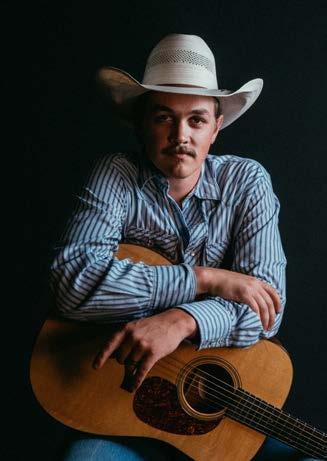
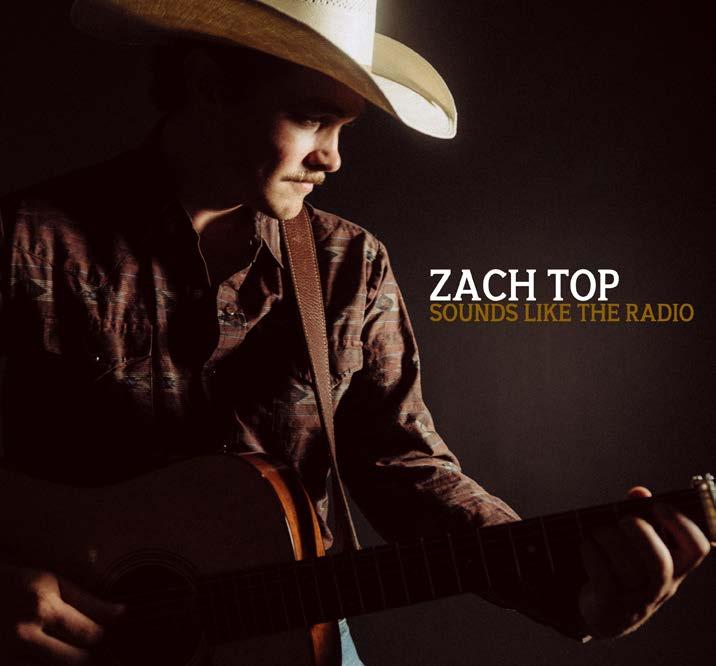
“Sounds Like the Radio” not only sounds like a fresh version of a 90’s radio classic, it pays tribute to that era and the artists. “Cold Beer & County Music,” the title track to his album, relates the story of a guy who just wants to sit in a bar and relax and only needs his two favorite things. “I Never Lie” shares about a man’s heartbreak and how he is doing just fine - sort of. Recently, Zach released the song “Beer for Breakfast,” an anthem for the quintessential beverage that meets all needs.
The Cold Beer and Country Music Tour
Growing up on a ranch in Washington State, Zach’s journey to country music stardom began with him listening to country music around the house. He started playing guitar at five years old and asked his guitar teacher to help him play “Amarillo by Morning” by George Strait. He began his own bluegrass band at age seven and continued his love of music by performing in various bluegrass groups. Moving to Nashville in 2021, he made his Grand Ole Opry debut in July 2022 and has performed at the Opry several times.
He pivoted to recording country music in 2023. His debut single to country radio, “Sounds Like the Radio,” was released on January 8, 2024, and has literally made air waves. He released his first country album in April 2024, Cold Beer & Country Music.
He’s already toured with Ashley McBryde and opened shows for Luke Bryan and Brothers Osborne. This year, Zach is the opening act, along with Ian Musick, for Lainey Wilson’s “Country is Cool Again” Tour, performing in many iconic venues, including Radio City Music Hall. During the show, he joins Lainey on stage to sing Johnny Paycheck’s classic “Take This Job and Shove It.”
It appears he is not slowing down anytime too soon. With 152K followers on Facebook, 472K followers on Instagram, and 44K followers on YouTube, he continues to gain momentum.
So grab your nearest barstool, an ice-cold beer, and crank Zach up. To learn more about Zach, check him out on all social media platforms, including zachtop.com.
1/31/25 Royal Oak, MI
2/1/25 Cincinnati, OH
2/6/25 Des Moines, IA
2/7/25 Tulsa, OK
2/14/25 Durant, OK
2/16/25 San Antonio, TX
2/27/25 Chattanooga, TN
2/28/25 Nashville, TN
3/6/25 Jacksonville, FL
2/8/25 Atlanta, GA
3/21-23/25 Willowbank, AUS

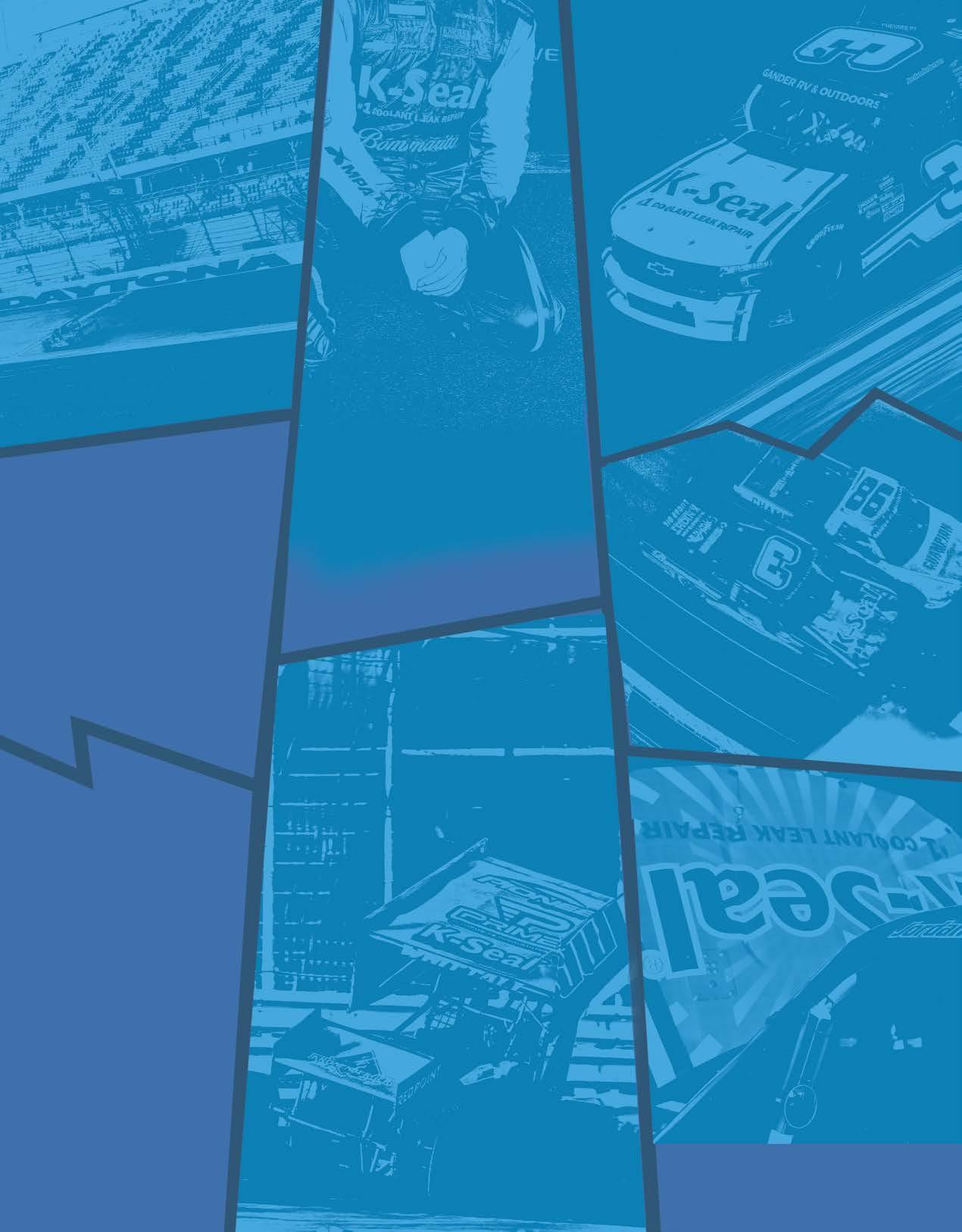
Permanently Fix Leaks in the:
• Radiator
• Water Pump Casing
• Heater Core
• Freeze Plug
• Block / Head
• Head Gasket
Also Seals Cracked Heads & Cracked Porous Blocks
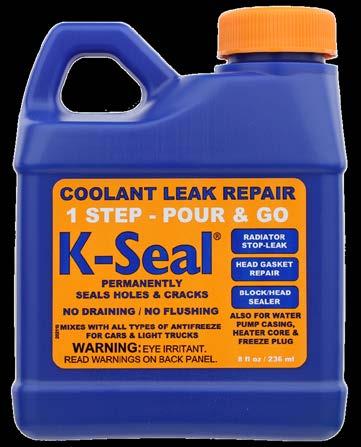







• Can be added to a hot or cold engine*
• NOT liquid glass / sodium silicate
• Can be added to the overflow tank
• Safe for use in all water cooled engines
• Mixes with all types of antifreeze
Saddle up for an unforgettable Western experience in Arizona at one of these six dude ranches.
BY KRYSTA PAFFRATH
If you’ve been dreaming about a dude ranch vacation for as long as you can remember, now is the time to make your dreams a reality! These five Arizona guest ranches are the best of the best. Are you ready to plan your vacation?

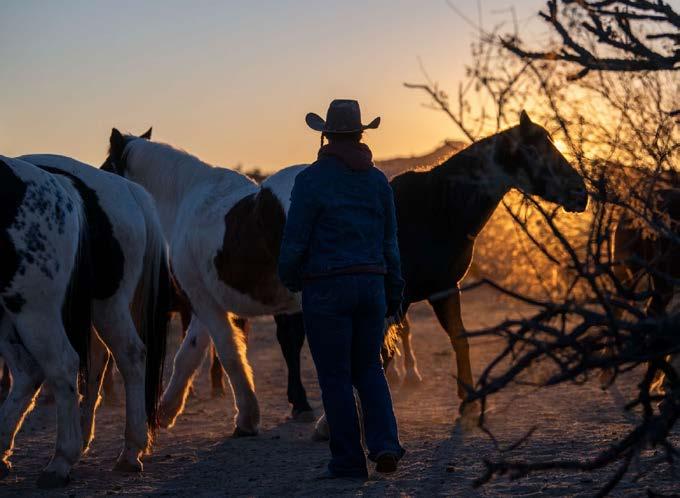
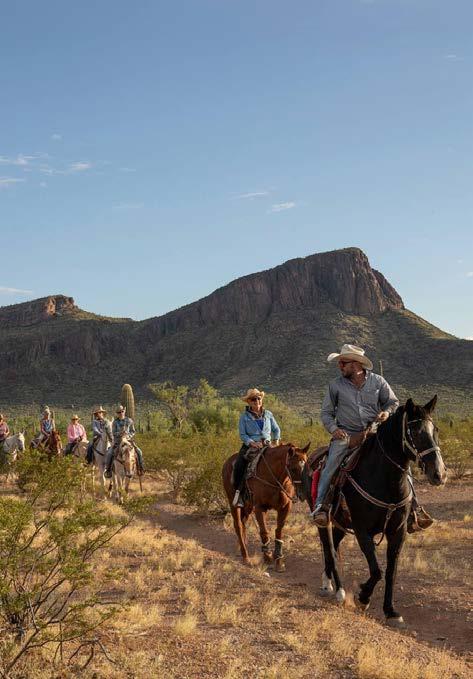
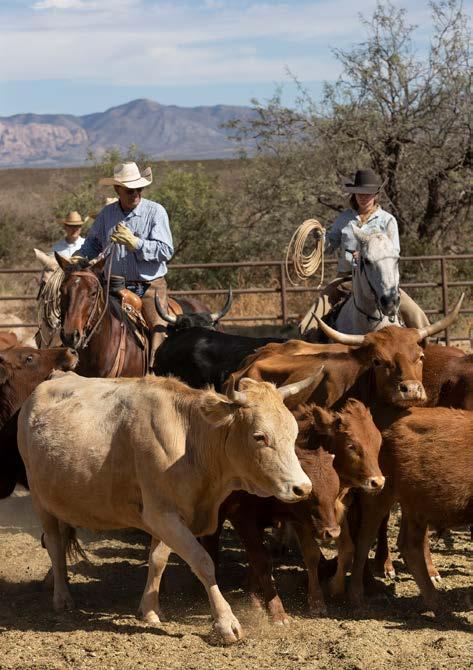
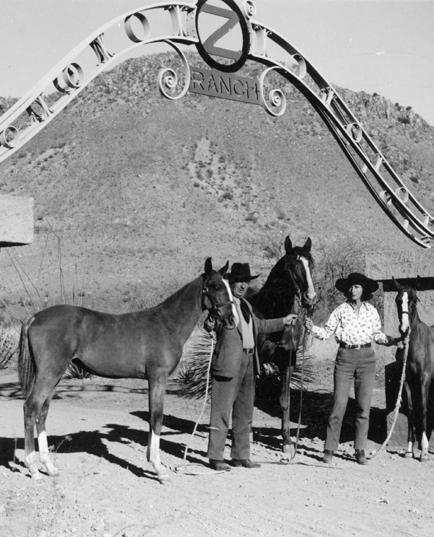

The Kay El Bar should be at the top of your list for visiting if you’re looking for dude ranches in Arizona. On the drive north from Phoenix, you’ll turn off the main highway and head west, and you will be greeted with rolling desert hills. Once you get to Wickenburg, you will go all the way through town, which takes you right by one of the largest team-roping arenas in the state. It isn’t called the team roping the capital of the world for nothing. Once outside of town, you’re greeted with rolling hills as you pull into Arizona’s oldest guest ranch. Steeped in history, this ranch has activities for the whole family and takes special pride in their horse program.
• Learn more and book your stay at Kayelbar.com.
Wickenburg, Arizona
Rancho De Los Caballeros, situated in The Team Roping Capital of the World, Wickenburg, Arizona, has wowed guests with its beauty and luxurious amenities for decades! Whether you’re staying for a weekend or staying for an entire week, you’ll enjoy activities such as horseback riding, team penning, ATV and Jeep tours, tennis, swimming, and hiking, just to name a few!
• Visit ranchodeloscaballeros.com for more information.
If you’re searching for the ultimate dude ranch vacation experience, set your sights on White Stallion Ranch, located in Tucson, Arizona. The award winning ranch most recently was named as one of the 12 Best-All Inclusive Resorts in the United States for 2019. Guests at White Stallion Ranch enjoy a wide range of activities, including rock climbing, horseback riding, shooting, and a weekly ranch rodeo.
• Visit whitestallion.com for more information.
Visiting Tombstone is a right of passage for any Western movie fan, and what better way to celebrate the days of Wyatt Earp and Doc Holliday than with a trip to Tombstone Monument Ranch? The greatest aspect of this ranch is that guests have the chance to feel like they actually live in the days of cowboys and outlaws as the ranch is designed to replicate an Old West town. There’s no shortage of fun to be had at Tombstone Monument Ranch, from live music and trail rides to learning how to play Texas Hold ‘em in the ranch’s “Old Trappmann Saloon,” there’s something for everyone to enjoy.
• Visit tombstonemonumentranch.com for more information.
Arizona is so beautiful, and a visit to Circle Z Ranch in Patagonia, Arizona, is a great way to see all of the sights this gorgeous state has to offer. While the ranch has amazing amenities for guests to enjoy, one of the most exciting features is the specialized vacation packages that are offered, such as the “Holidays on Horseback” package that allows guests to trade in the stress of holiday planning for some saddle-time!
• Visit circlez.com for more information.
An award winning vacation destination, Stagecoach Trails Guest Ranch is another great option for guests who want to feel as if they are staying in a true Western town. The ranch, located only two hours away from the Grand Canyon West Rim, offers some of the most scenic horseback rides in the state, including more advanced excursions where riders can trot and lope through some of Arizona’s most gorgeous landscape.
• Visit stagecoachtrailsranch.com for more information.
Check out some of our favorite YouTubers who are exemplary examples of a Modern Cowboy. BY
KRYSTA PAFFRATH

Startup Cowboy is your ultimate guide to becoming a modern cowboy. Whether you’re just starting out or looking to refine your skills, this YouTube channel covers all the essentials. From mastering the art of roping and horsemanship to shaping hats and training colts, you’ll learn the core techniques that define a true cowboy. Discover the nuances of cowboy etiquette and even get hands-on lessons in driving teams. With Startup Cowboy, you’ll gain the confidence and know-how to thrive in the cowboy lifestyle, all delivered in an engaging, accessible format. Follow him on YouTube @StartupCowboy

How LOCALS Win Against the SUPER RICH!” on Life in the West, hosted by Trinity Vandenacre, offers an authentic glimpse into the Montana ranching lifestyle. As shows like Yellowstone and 1883 stir interest in the West, Trinity goes beyond the Hollywood glamor to expose the true lives of real ranchers. Whether you’re planning a trip to Montana or simply want to experience the Western spirit from home, this channel is your go-to source. Join Trinity as he unveils the resilience and determination of locals, highlighting how they maintain their way of life despite the challenges posed by the super-rich. Follow him on YouTube @ LifeintheWest
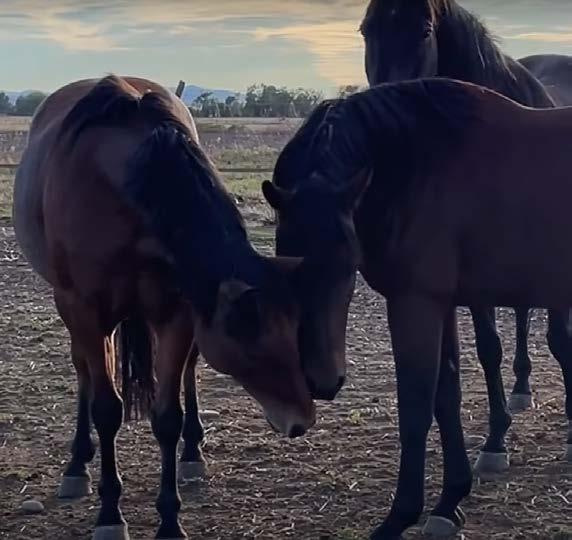


Dry Creek Wrangler School is your go-to resource for everything related to horses, saddles, and the wrangler lifestyle. Hosted by Dewayne, who has over 30 years of experience in the horse world, this channel offers practical insights into riding, training, wrangling, and packing. Dewayne’s rich life experiences, including being a devoted husband, father, and grandfather, as well as his background in ministry and law enforcement, add depth to his teachings. Rather than prescribing “the” way to do things, Dewayne shares his wisdom, guiding viewers to find their own paths in the world of horsemanship. Follow him on YouTube @ DryCreekWranglerSchool

The Clever Cowgirl is the perfect YouTube channel for anyone passionate about horsemanship and discovering the hidden potential in horses. Host, The Clever Cowgirl, seeks out horses in unexpected places, particularly at auctions, where she finds diamonds in the rough. Through her journey, she shares valuable tips and tricks on how to transform these horses into their best selves. While she occasionally rescues horses in need, her mission goes beyond rescue work—she’s dedicated to making a difference, one horse at a time. Join her as she brings out the best in every horse she encounters, offering inspiration and practical advice along the way. Follow her on YouTube @TheCleverCowgirl

Footprints of the Frontier is your ultimate destination for exploring the rich and tumultuous history of the American Wild West. This channel covers everything from the early days of manifest destiny and wagon trails to the notorious train robbers and armed conflicts that defined the era. Whether you’re fascinated by the economics of westward expansion, intrigued by infamous outlaws, or curious about the experiences of Indigenous tribes, Footprints of the Frontier offers unique content crafted by passionate history enthusiasts. Saddle up and join us on a journey through the wild and wonderful world of America’s frontier, where history comes alive. Follow the channel on YouTube @footprintsofthefrontier
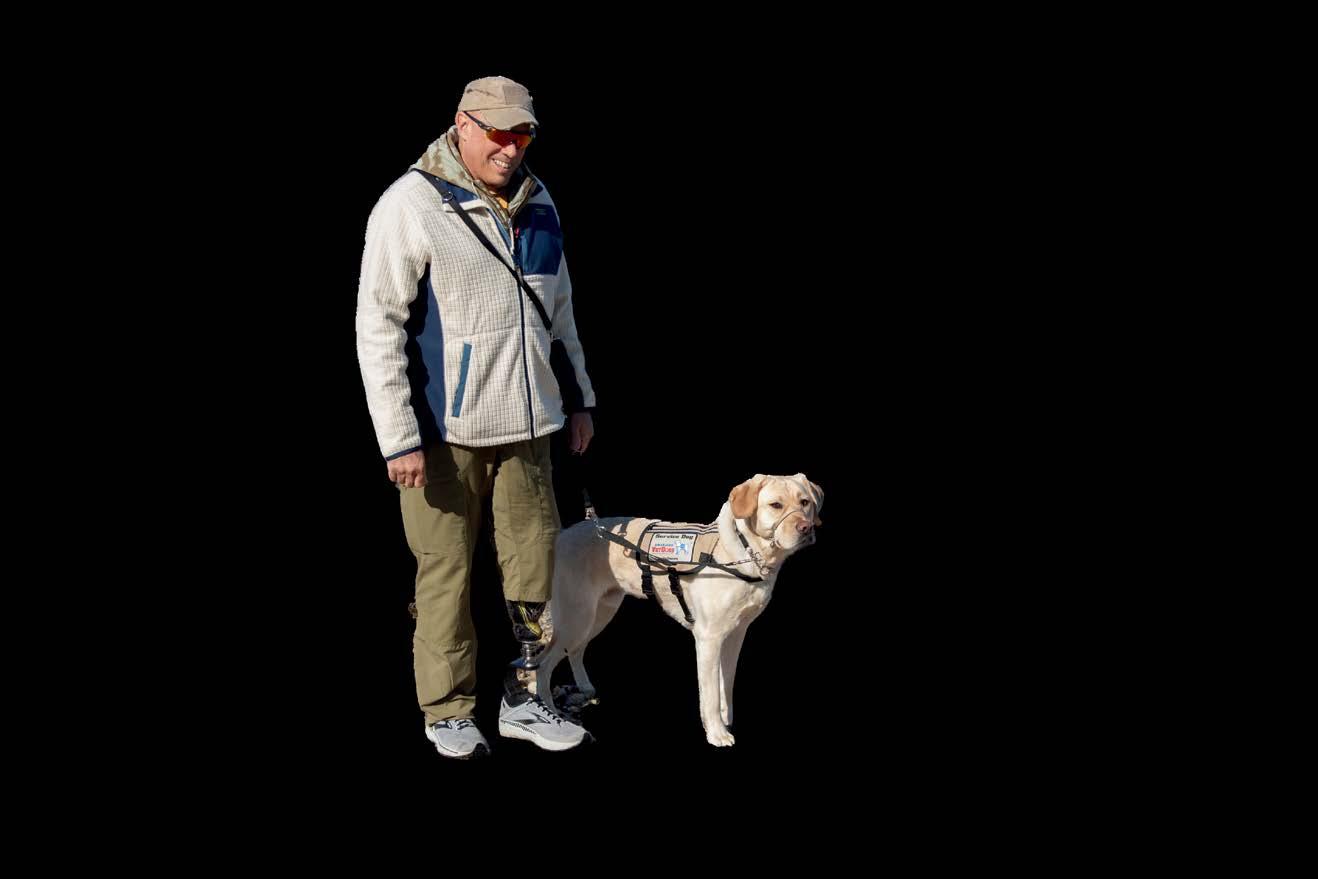
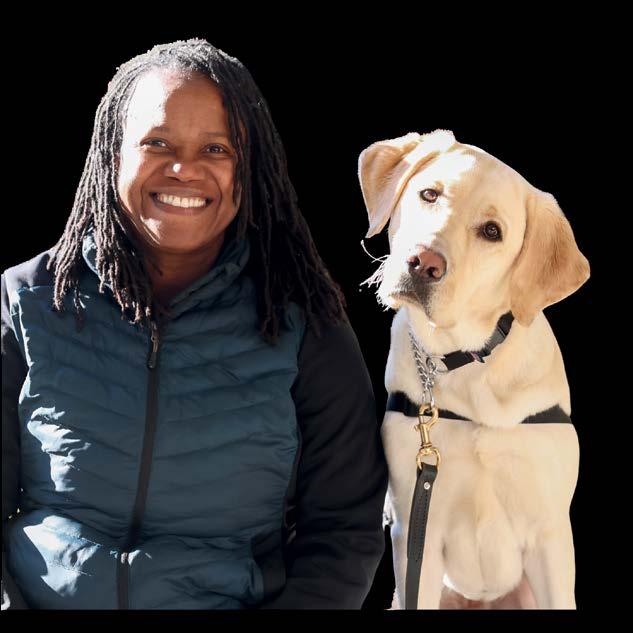



This September, the Traditional Cowboy Arts Association and The Cowboy celebrate 25 years of holding onto the West together.

The Traditional Cowboy Arts Association (TCAA) returns to the National Cowboy Museum for the 25th annual Traditional Cowboy Arts Association Exhibition & Sale on Saturday, September 28.
Celebrating the finest examples of cowboy craftsmanship in the traditional disciplines of bit and spur making, rawhide braiding, saddlemaking and silversmithing, the TCAA weekend is a full two days of seminars as well as luncheons, dinners and cocktail celebrations. Along with the centerpiece exhibition and sale — which draws collectors and Western art enthusiasts from throughout North America and, indeed, the world, the Traditional Cowboy Arts Association Exhibition & Sale has become a cornerstone of the National Cowboy Museum’s annual schedule and, along with the annual Prix de West Invitational Art Exhibition & Sale, one of the signature events for which The Cowboy is known.
Although it may seem preordained when looking back today, the success that the TCAA has achieved over the past 25 years was far from certain during its very first exhibition at the National Cowboy Museum in 1999.
Just a short year before, the idea of forming an association of artists working in the four classic cowboy traditions was merely a fantasy shared by a few established craftsmen.
The older generation of experienced craftsmen was dying away, and with them the cumulative knowledge of centuries of cowboy artisans.
Among the novice class of individuals eager to carry on the mantle of the traditional cowboy arts, finding a mentor under which to train had, for many, become close to impossible.
Unless decisive action was taken, the cowboy arts would fade into oblivion, with mass-produced gear the only option for those who once would have proudly owned custom pieces of functional art.
In 1998, the fledgling TCAA was established by a group of 14 original members: rawhide braider Mike Beaver, bit and spur maker Mark Dahl, silversmith Mark Drain, bit and spur maker John C. Ennis, silversmith Scott Hardy, saddlemaker Dale Harwood, bit and spur maker Bill Heisman, saddlemaker Don King, bit and spur maker Ernie Marsh, silversmith Al Pecetti, saddlemaker Cary Schwarz, rawhide braider Bob Stone, saddlemaker Chuck Stormes and bit and spur maker Al Tietjen; plus affiliate members Don Bellamy and J. Kent McCorkle.
From TCAA’s earliest meetings, the members agreed that a trio of issues facing the cowboy arts world must be confronted: an aging core of master craftsmen unable to pass their encyclopedic knowledge onto the next generation due to a shortage of youth entering the cowboy arts; a lack of appreciation and understanding of the highest levels of craftsmanship; and the lack of a venue in which to showcase the finest craftsmanship to both collectors and the public at large.
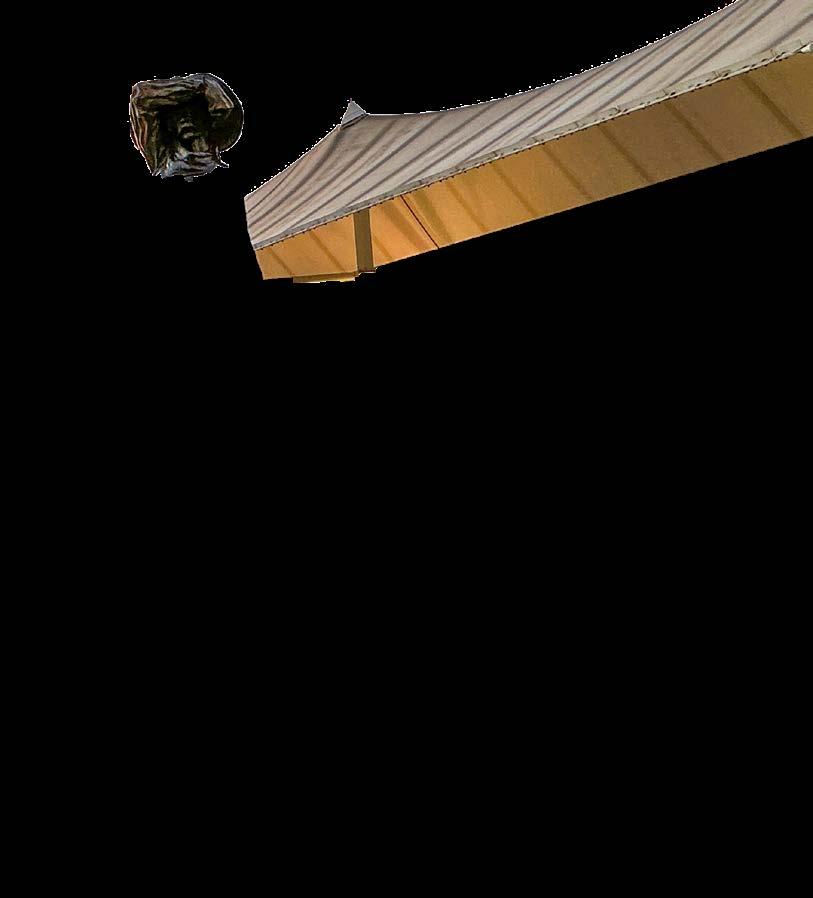
Soon after the TCAA’s establishment in 1998, the group reached out to the National Cowboy Museum. With the help of the staff at The Cowboy, the inaugural TCAA exhibition and sale was scheduled for the next year, to coincide with the grand opening of a major expansion at the Museum.
In September 1999, the first-annual Traditional Cowboy Arts Association Exhibition & Sale debuted at The Cowboy. That night, the Museum celebrated not only the TCAA exhibition, but also the ribbon-cutting ceremony for a new 140,000-square-foot expansion.
For the first time, each of the items meticulously handcrafted by these cowboy craftsmen was displayed in a manner befitting a work of art. In this way, the items created by this group weren’t merely for those looking to outfit a horse; they were for anyone wanting to celebrate the pure artistry one could obtain through the traditional cowboy crafts. And like any work of art, these were worthy of displaying in one’s home.
Over the ensuing 25 years, the TCAA has continued to return annually to the National Cowboy Museum, exhibiting works created specially by each member to reach the pinnacle of artistic form in their chosen discipline. Crowds of patrons, collectors, art lovers and Western enthusiasts, too, continue to return annually to see what the future holds for the traditional cowboy arts, and perhaps own for themselves an example of the West’s original form of art.
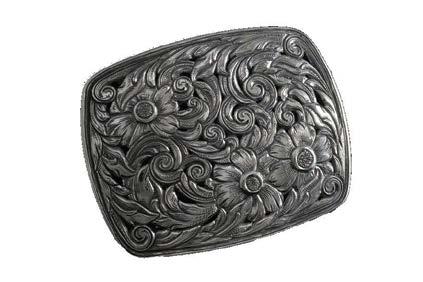
SEPTEMBER 27 - 28, 2024 ART SALE WEEKEND ON EXHIBIT SEPTEMBER 27 –NOVEMBER 17, 2024 RESERVATIONS & PROXY

Larry Lorang
Lorang named this bit Sonora for a variation on the style of cheek piece used. A longtime fan of big concha style bits, Lorang wanted to create a piece that would capture a person’s attention from a distance — then, moving closer, the small details begin to appear and form the complete story. Fine silver inlays along with bold engraving accent the soft, French grey finish, creating a beautiful result. Lorang says this bit is influenced by both Ernie Marsh and Wilson Capron, as well as his own experiences in the Western landscape of Montana.
Pablo Lozano
In crafting this unique set of four candle holders — each consisting of three steel and three wood components — Lozano incorporated myriad braiding techniques to contour 48 strands of natural rawhide around the sculpted wood bodies and 96 strands of natural rawhide around each base. Ernie Marsh contributed the sterling silver inlaid and engraved metal components, applying a plum brown finish to create contrast with the natural rawhide. Each candle holder is engraved with the words “Pablo Lozano,” “TCAA 25th 2024” and “E Marsh.”

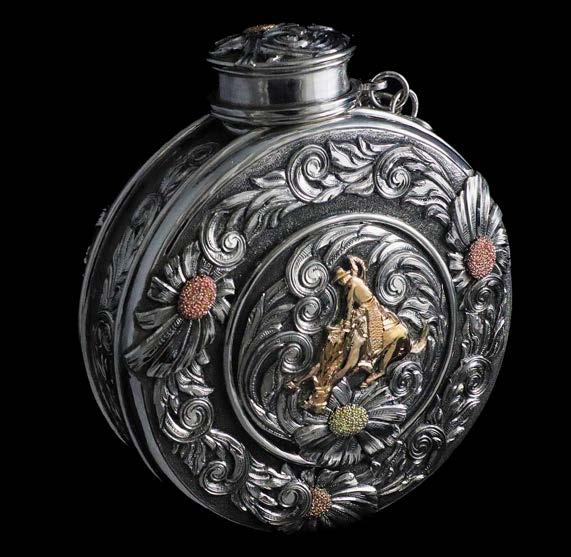


Beau Compton
This unique buckle has no hardline borders; instead, the filigree scrollwork helps contain the contents of this heavy gauge silver buckle. The steer head and flowers are hand sculpted from yellow and rose gold, while the flopper on the back of the buckle bears the TCAA 25th anniversary logo in gold.
Scott Hardy
Looking back over five generations of family cattlemen inspired Hardy to create this palm flask. From the comfortable feel in one’s hand (3 1/2-inches across, 1 1/2-inches deep) to the story told with the 14k yellow gold broncs (different on each side), along with the heavy sterling silver body, abundant scrolls and flowers framing red, yellow and green 14k gold centers, this flask is best accompanied with celebrations and friendship, passing from generation to generation.

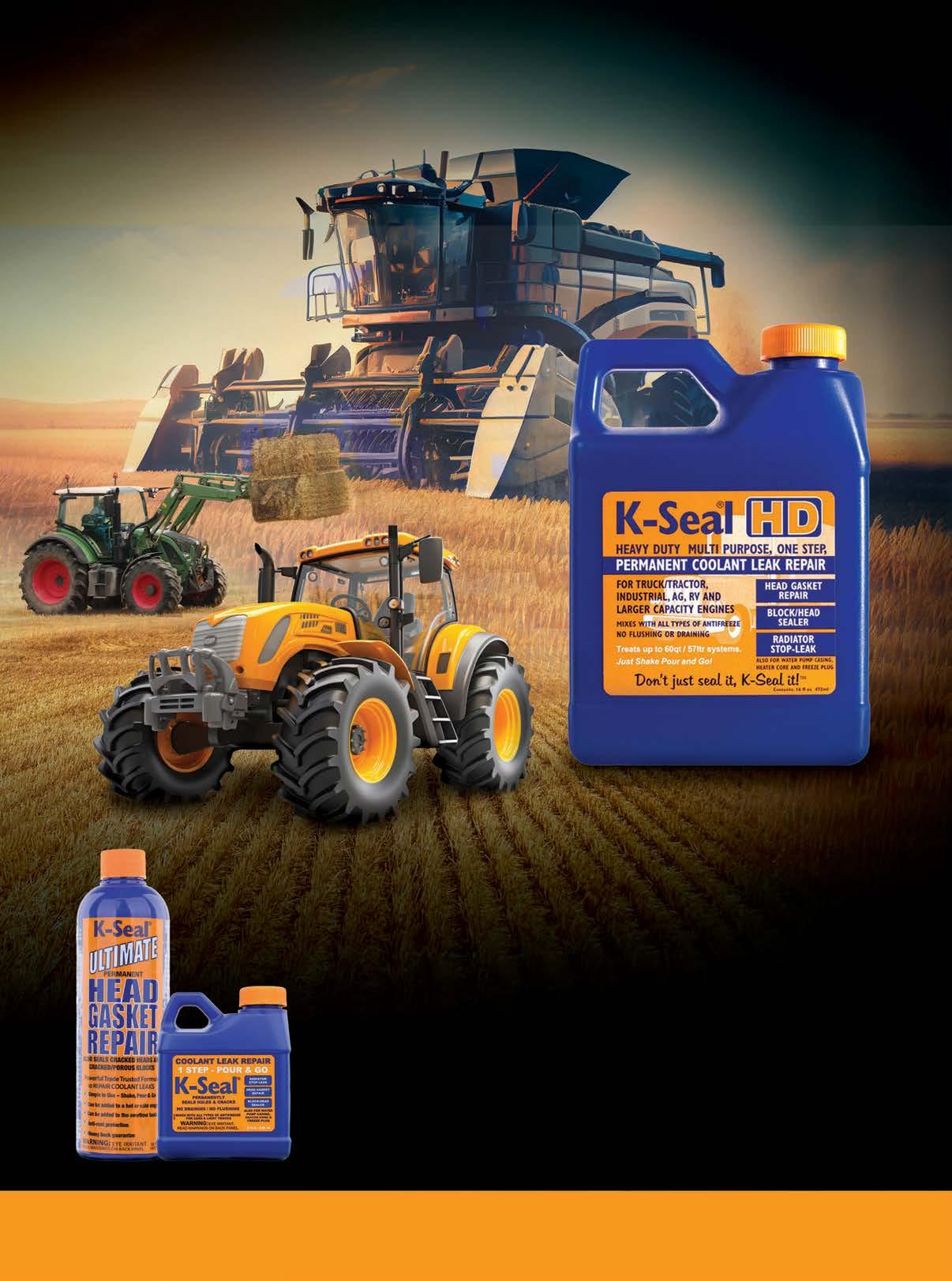

BY KRYSTA PAFFRATH
When we think of the American West, images of wide-open plains, rugged cowboys, and frontier towns often come to mind. However, you don’t have to travel west of the Mississippi to experience that authentic western charm. Several towns east of the Mississippi River embody the spirit of the West with their rich histories, architectural styles, and cultural traditions. From Kentucky to Georgia, these towns offer a unique blend of Southern hospitality and western flair.
Bardstown, Kentucky, often referred to as the “Bourbon Capital of the World,” is a town steeped in history and tradition. While its fame comes from its deep connection to bourbon, Bardstown also offers a western feel with its historic downtown, featuring 18th-century architecture and old-time saloons. The Old Talbott Tavern, dating back to 1779, is a prime example of this western influence. With bullet holes from outlaw Jesse James still visible in its walls, the tavern transports visitors to a time when Bardstown was a frontier town. Visitors can explore the nearby My Old Kentucky Home State Park, which offers a glimpse into the life of early settlers in the region. Bardstown’s combination of history, bourbon, and western charm makes it a must-visit for those seeking a taste of the Old West in the heart of Kentucky.
Natchez, Mississippi, is known for its grand antebellum homes and its location on the mighty Mississippi River. But beyond its Southern elegance, Natchez has a western side rooted in its history as a trading post and frontier town. During the early 1800s, Natchez was a bustling hub for traders and settlers moving westward, earning a reputation for both wealth and lawlessness. The Natchez Trace, a historic trail that connected the town to Nashville, was traveled by traders, soldiers, and outlaws alike, adding to its wild west mystique. Today, visitors can walk along the Natchez Bluff, explore the Natchez Trace Parkway, and visit historic sites like the Grand Village of the Natchez Indians to experience the town’s western heritage.
Dahlonega, Georgia, is best known as the site of the first major gold rush in the United States, predating even the California Gold Rush. This small town nestled in the foothills of the Blue Ridge Mountains was once a bustling mining town filled with prospectors eager to strike it rich. The town’s western spirit is alive and well today, with attractions like the Dahlonega Gold Museum and the Consolidated Gold Mine offering visitors a chance to pan for gold and learn about the town’s mining past. Dahlonega’s charming downtown, with its historic buildings and old-time general stores, evokes the feel of a western town, making it a perfect destination for history buffs and adventurers alike.
Eufaula, Alabama, located on the banks of the Chattahoochee River, is a town where southern charm meets frontier grit. Founded in the early 1800s, Eufaula quickly became a thriving center for trade and commerce, attracting settlers from across the region. The town’s historic district is filled with antebellum mansions and historic buildings that tell the story of its frontier past. The annual Eufaula Pilgrimage, a historic home tour, celebrates the town’s heritage and gives visitors a glimpse into the life of early settlers. With its blend of southern elegance and frontier traditions, Eufaula offers a unique western experience in the heart of Alabama.
Camden, South Carolina, is a town rich in Revolutionary War history, but it also has a distinct western feel that sets it apart from other Southern towns. Camden was a key battleground during the American Revolution, and today, visitors can explore historic sites like the Camden Battlefield and the Revolutionary War Visitor Center. The town’s western charm is evident in its annual events, such as the Battle of Camden Reenactment, which draws participants and spectators from across the country. Camden’s mix of history, tradition, and western flair makes it a standout destination for those seeking a unique blend of Southern and western culture.
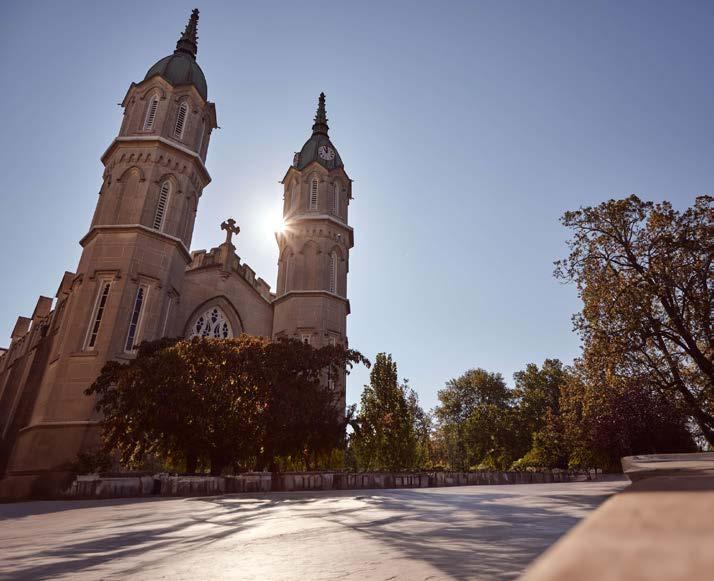
Bardstown, Kentucky, often referred to as the “Bourbon Capital of the World,” is a small town with a rich history and a vibrant cultural heritage. Nestled in the heart of the Bluegrass State, Bardstown is a place where the past and present harmoniously blend, offering visitors a unique experience that combines Southern hospitality, historic charm, and, of course, the world-renowned bourbon industry.
Founded in 1780, Bardstown is one of the oldest towns in Kentucky. Its early years were marked by the arrival of settlers who established the town as a thriving center of commerce and culture. The town’s historic downtown area, with its wellpreserved buildings and quaint streets, is a testament to its storied past. Among the notable historic sites is St. Joseph Proto-Cathedral, built in 1819, which is the first Roman Catholic cathedral west of the Allegheny Mountains. Another iconic landmark is My Old Kentucky Home, a beautiful mansion that inspired Stephen Foster’s famous song of the same name. This historic site offers a glimpse into the antebellum South and serves as a reminder of Kentucky’s rich cultural heritage.
Bardstown’s most famous claim to fame, however, is its association with bourbon. The town is at the heart of Kentucky’s bourbon trail, home to some of the most renowned distilleries in the world. The production of bourbon has been a significant part of Bardstown’s identity since the 18th century when the area’s settlers began distilling corn whiskey, taking advantage of the region’s ideal climate and natural resources.
Today, Bardstown is home to several legendary distilleries, including Heaven Hill, Maker’s Mark, and Jim Beam, as well as a growing number of craft distilleries. Visitors can tour these distilleries, learning about the intricate process of bourbon production, from the selection of grains to the aging process in charred oak barrels. The Kentucky Bourbon Festival, held annually in Bardstown, is a celebration of this rich tradition, drawing bourbon enthusiasts from around the world to enjoy tastings, events, and the warm hospitality of the local community.
Bardstown is a town that knows how to celebrate its heritage. In addition to the Kentucky Bourbon Festival, the town hosts a variety of other events throughout the year that showcase its culture, history, and community spirit. The annual My Old Kentucky Home State Park Jamboree, for example, features live music, traditional Kentucky crafts, and performances that capture the essence of the region.
The Arts, Crafts, and Antiques Fair, held in October, transforms Bardstown’s downtown into a bustling marketplace where visitors can browse handmade goods, antiques, and local artwork. These events, along with the town’s many other festivals, make Bardstown a vibrant and welcoming place to visit any time of year.
Beyond its historic sites and bourbon distilleries, Bardstown is surrounded by the natural beauty of central Kentucky. The rolling hills, lush forests, and picturesque countryside provide ample opportunities for outdoor activities. The nearby Bernheim Arboretum and Research Forest offers miles of hiking trails, wildlife observation, and beautiful botanical gardens, making it a perfect destination for nature lovers.
Bardstown’s proximity to the Kentucky Bourbon Trail also allows visitors to explore the scenic backroads and rural landscapes that are quintessential to the state’s identity. Whether you’re taking a leisurely drive through the countryside or enjoying a picnic in one of the town’s parks, Bardstown’s natural beauty is always on display.
Bardstown, Kentucky, is more than just the Bourbon Capital of the World; it is a town that invites visitors to experience its rich history, warm hospitality, and vibrant culture. Whether you’re a bourbon enthusiast, a history buff, or simply someone looking for a charming getaway, Bardstown offers something for everyone. Its blend of historic sites, lively festivals, and stunning natural surroundings make it a destination that captures the heart and imagination of all who visit.
In Bardstown, the past is always present, and the spirit of Kentucky is alive in every glass of bourbon, every historic building, and every smile from a friendly local. It’s a place where traditions are cherished, and new memories are made, ensuring that Bardstown will continue to be a beloved destination for generations to come. To plan your visit and learn more about everything Bardstown has to offer, visit VisitBardstown.com.
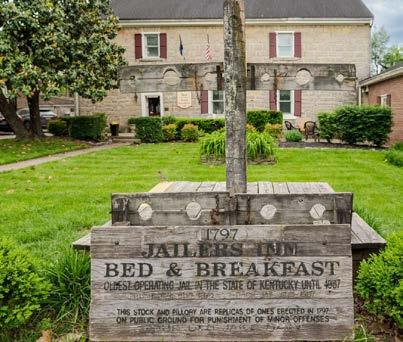

Nestled on the banks of the mighty Mississippi River, Natchez, Mississippi, is a city steeped in history, culture, and music. With its well-preserved antebellum homes, scenic views, and vibrant cultural scene, Natchez stands as a testament to the rich history of the American South. But what many may not know is that Natchez is also a vital part of the Americana Music Triangle, a region known for its profound influence on the development of American music. The city is a key stop on the Gold Record Road driving tour, where visitors can immerse themselves in the musical landmarks that helped shape the sounds of a nation.
One of the first things that strike visitors to Natchez is its stunning array of historic structures. The city boasts more than 1,000 antebellum buildings, many of which have been meticulously preserved and are open to the public. These structures, ranging from grand mansions to humble cottages, offer a window into the lives of the people who lived in Natchez during its heyday as a bustling river port.
Among the most famous of these historic homes is Longwood, the largest octagonal house in the United States. Known as the “Unfinished Masterpiece,” Longwood’s construction was halted due to the outbreak of the Civil War, leaving its interior incomplete. Despite this, the home’s unique architecture and fascinating history make it a must-see for any visitor.
Another highlight is Stanton Hall, a Greek Revival mansion that epitomizes the grandeur of the Old South. Built in 1857, Stanton Hall is a National Historic Landmark and offers guided tours that provide insight into the life of a wealthy Natchez family before the Civil War. The home’s opulent interiors and sprawling gardens transport visitors back to a time of southern elegance.
Natchez’s historic district is also home to several charming bed-and-breakfasts, many of which are housed in beautifully restored antebellum homes. Staying in one of these B&Bs allows visitors to fully immerse themselves in the city’s history and experience the hospitality that Natchez is known for.
Beyond its architectural treasures, Natchez plays a significant role in the Americana Music Triangle, a region that stretches from Nashville to Memphis to New Orleans and is often referred to as the birthplace of American music. The city is part of the Gold Record Road driving tour, which guides visitors through a series of musical landmarks that highlight the cultural heritage of the area.
Natchez’s contribution to the music scene is deeply rooted in its history. The city
was a melting pot of cultures, with influences from African, European, and Native American traditions. This cultural diversity gave rise to a rich musical tradition that includes blues, gospel, and jazz.
The Gold Record Road tour in Natchez includes stops at iconic locations such as the Natchez City Cemetery, where the famous blues musician Robert Johnson is rumored to be buried. The tour also highlights the Rhythm Night Club, a former dance hall where a tragic fire in 1940 claimed the lives of over 200 people, many of whom were prominent members of the local African American community. The site now serves as a museum dedicated to preserving the memory of the victims and the vibrant music scene that once thrived there.
What really drew us to exploring Natchez as one of the most “western” towns east of the Mississippi was the fact that it had its very own “western” district along the banks and “under the hill” of Natchez proper.
“Under the Hill” in Natchez, Mississippi, is a historic district that was once a notorious riverfront neighborhood along the Mississippi River. In the 19th century, it was known for its rowdy atmosphere, bustling with saloons, gambling dens, and brothels, attracting steamboat crews, traders, and adventurers. Despite its rough past, today “Under the Hill” is a charming area that preserves its historic character, offering visitors a glimpse into Natchez’s colorful history while enjoying modern-day shops, restaurants, and river views.
Natchez, Mississippi, is more than just a city frozen in time; it is a living, breathing testament to the enduring spirit of the American South. Its historic structures provide a glimpse into the past, while its role in the Americana Music Triangle ensures that its cultural legacy will continue to resonate for generations to come. Whether you’re a history buff, a music lover, or simply someone looking to explore a unique and beautiful part of the country, Natchez offers something for everyone. Take a drive down the Gold Record Road and discover the heart and soul of Natchez, where history and music come together in perfect harmony. To plan your trip and learn more about this historic, quaint town, visit: VisitNatchez.org
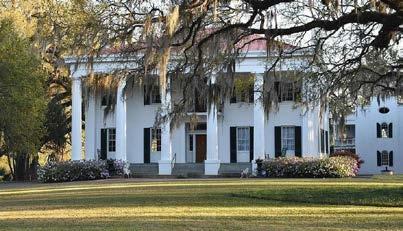
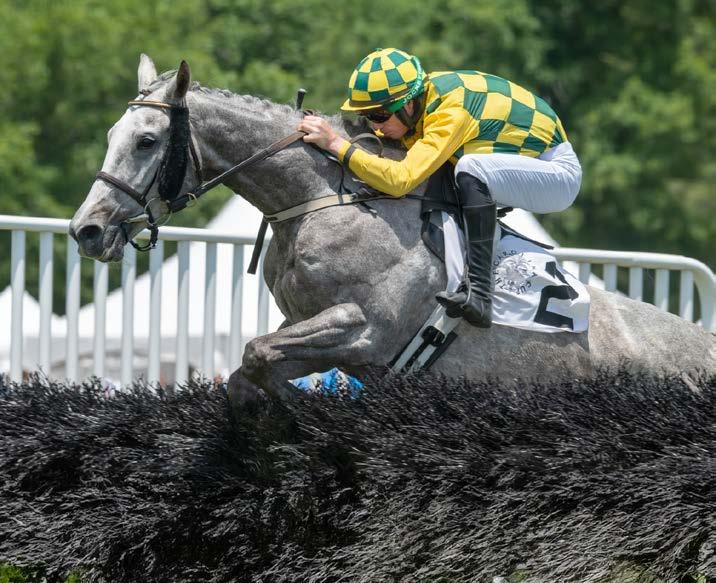
CCamden, South Carolina, is a town that proudly wears its history on its sleeve. As the oldest inland city in the state, Camden is a destination where the past and present intertwine, offering visitors a unique blend of Southern charm, historical significance, and modern-day hospitality. Whether you’re a history enthusiast, an equestrian lover, or simply in search of a charming Southern getaway, Camden is a destination that promises a rich and memorable experience.
Founded in 1732, Camden played a significant role in the early history of South Carolina and the American Revolution. The town’s historical legacy is preserved in its well-maintained sites and museums, which offer a window into Camden’s storied past. A visit to Historic Camden Revolutionary War Site is a must for history buffs. This 107-acre outdoor museum includes reconstructed colonial buildings, walking trails, and the remains of a British redoubt. The site provides a vivid picture of life during the 18th century and the pivotal battles that took place in the region.
One of the most significant events in Camden’s history is the Battle of Camden, fought in 1780 during the American Revolution. Though a defeat for the Continental Army, the battle was a turning point that eventually led to American victory. Visitors can explore the battle site, where interpretive markers and exhibits bring the events of that fateful day to life. Nearby, the Camden Archives and Museum offers further insights into the town’s history, with exhibits on the Revolutionary War, Civil War, and Camden’s evolution over the centuries.
Camden is also renowned for its deep-rooted equestrian heritage, earning it the nickname “Steeplechase Capital of the World.” The town is home to the Springdale Race Course, where the annual Carolina Cup and Colonial Cup races attract horse racing enthusiasts from near and far. These steeplechase events, held each spring and fall, are much more than just horse races; they are grand social occasions that draw thousands of spectators for a day of thrilling races, tailgating, and Southern pageantry.
The National Steeplechase Museum, located in Camden, is dedicated to preserving and promoting the history of steeplechase racing in the United States. The museum offers exhibits on famous horses, jockeys, and races, providing a comprehensive overview of the sport’s legacy in Camden and beyond.
For those who want to experience the equestrian culture firsthand, Camden offers opportunities to ride or tour local stables. The town’s love for horses is evident in its beautiful bridle paths, training facilities, and the strong community of horse enthusiasts who call Camden home.
Beyond its historical and equestrian significance, Camden is a town that embodies the warmth and hospitality of the South. Strolling through its downtown area, you’ll find charming boutiques, antique shops, and locally-owned restaurants, all set against the backdrop of tree-lined streets and historic architecture. Whether you’re enjoying a leisurely lunch at a café, shopping for unique Southern crafts, or simply taking in the ambiance, Camden’s downtown offers a welcoming atmosphere that invites you to slow down and savor the moment. Camden’s vibrant community life is reflected in its many events and festivals throughout the year. The Camden Antiques Fair, for example, attracts collectors and enthusiasts with its impressive array of antique furniture, art, and collectibles. Meanwhile, the town’s Christmas Candlelight Tour of Homes offers a magical experience, as historic homes are adorned with holiday decorations and opened to the public.
In addition to being known for their steeplechases, Camden is also known for several other events throughout the year. One of those is Camden Revolutionary Days. Every November Camden proudly celebrates its pivotal role in the Southern Campaign of the American Revolution with a week-long event. Step back in time at the Colonial Village in Historic Camden, explore the battlefields, and immerse yourself in the stories of our struggle for Liberty. Savor mouthwatering BBQ at the Battle of Camden BBQ Fest. And don’t miss the Southern Campaign 1780’s Battle of Camden Annual Revolutionary War reenactment—the largest Forceon-Force Revolutionary War reenactment in the nation!
For those who enjoy the outdoors, Camden offers plenty of opportunities to connect with nature. Goodale State Park, just a short drive from downtown, is a peaceful retreat where visitors can canoe, fish, or hike amidst the serene beauty of South Carolina’s landscapes. The park’s 140-acre lake is perfect for paddling, and its nature trails provide a tranquil setting for birdwatching and wildlife observation. Camden, South Carolina, is more than just a stop on the map; it’s a destination where history, culture, and Southern hospitality come together to create an unforgettable experience. Whether you’re exploring its rich Revolutionary War heritage, attending a worldclass steeplechase race, or simply enjoying the charm of its downtown, Camden offers a unique slice of Southern life that is sure to leave a lasting impression. In Camden, the past is always present, the traditions are cherished, and every visitor is welcomed with open arms. It’s a town that invites you to step back in time, immerse yourself in its equestrian culture, and experience the true spirit of the South.

EEufaula, Alabama, is a charming town that embodies the essence of Southern grace and hospitality. Located on the banks of the Chattahoochee River, this picturesque town is rich in history, natural beauty, and cultural heritage. Whether you’re a history enthusiast, an outdoor adventurer, or simply seeking a peaceful retreat, Eufaula offers a unique and inviting experience that captures the heart and soul of the South.
Eufaula is perhaps best known for its well-preserved antebellum architecture, which serves as a testament to the town’s storied past. Established in the early 19th century, Eufaula quickly became a thriving port town, playing a significant role in the cotton trade that fueled the economy of the Old South. The wealth generated during this period is evident in the grand mansions and historic homes that line the streets of Eufaula’s historic district.
One of the most striking features of Eufaula is its array of antebellum homes, many of which are listed on the National Register of Historic Places. The Shorter Mansion, with its majestic columns and sweeping verandas, is a prime example of the Greek Revival architecture that defines the town. Visitors can tour this historic home and others during the annual Eufaula Pilgrimage, a spring event that opens the doors to these private residences, offering a rare glimpse into the past.
The Seth Lore and Irwinton Historic District is another must-see for history buffs. Spanning over 700 acres, this district is one of the largest historic districts in Alabama and includes a variety of architectural styles, from Victorian to Gothic Revival. Walking through these tree-lined streets, visitors can easily imagine what life was like in Eufaula during its heyday.
Eufaula also proudly holds the title of the “Big Bass Capital of the World,” thanks to its renowned fishing opportunities on Lake Eufaula, also known as Walter F. George Lake. This 45,000-acre reservoir is famous for producing trophy-sized largemouth bass, drawing anglers from around the globe. The lake’s ideal conditions—abundant vegetation, shallow waters, and a thriving ecosystem—create the perfect habitat for bass to flourish. Hosting numerous national fishing tournaments each year, Eufaula has become a mecca for competitive anglers and fishing enthusiasts, cementing its reputation as a premier destination for world-class bass fishing.
For those who prefer land-based activities, Eufaula National Wildlife Refuge is a haven for wildlife enthusiasts and birdwatchers. Covering nearly 12,000 acres, the
refuge is home to a diverse array of species, including alligators, deer, and hundreds of bird species. Visitors can explore the refuge through its network of trails, observation towers, and scenic drives, immersing themselves in the tranquil beauty of the Alabama wilderness.
Eufaula’s downtown area, with its boutique shops, cozy cafes, and family-owned restaurants, is the perfect place to experience this hospitality firsthand. Whether you’re enjoying a meal at a local eatery or browsing through the unique offerings of a downtown shop, you’ll find that the people of Eufaula are as charming as the town itself.
Eufaula also hosts a variety of festivals and events throughout the year that showcase its rich cultural heritage and community spirit. The Eufaula Pilgrimage, in addition to its home tours, features art shows, live music, and other activities that bring the town’s history and culture to life. The Indian Summer Arts and Crafts Festival, held in October, is another highlight, offering visitors the chance to shop for handmade goods and enjoy live entertainment in a beautiful setting.
Eufaula, Alabama, is a destination that offers something for everyone. Its blend of history, natural beauty, and small-town charm makes it a unique and inviting place to visit. Whether you’re exploring its historic homes, enjoying the great outdoors, or simply soaking in the Southern hospitality, Eufaula promises an experience that will leave you with lasting memories.
In Eufaula, the past is preserved with pride, the natural surroundings are celebrated, and every visitor is welcomed like an old friend. It’s a place where history comes alive, nature beckons, and the spirit of the South shines brightly, making it a must-visit destination in Alabama. To plan your visit and learn more about Eufaula, please visit Eufaulachamber.com

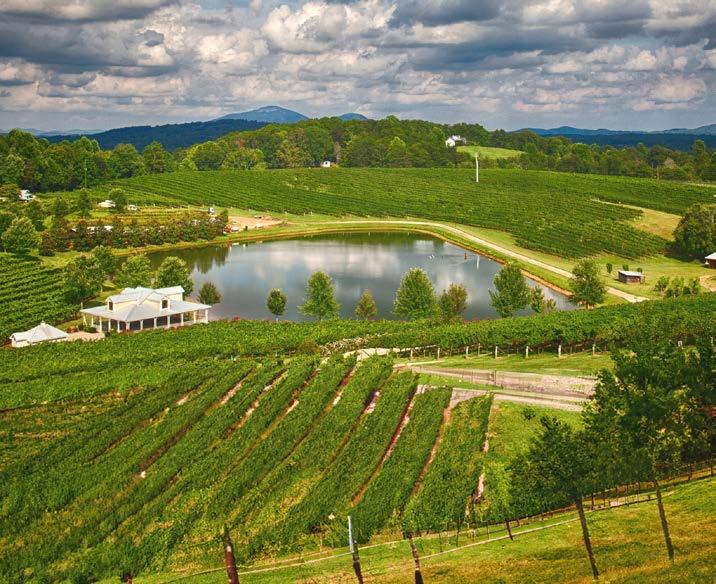
Nestled in the foothills of the Blue Ridge Mountains, Dahlonega, Georgia, is a town steeped in history, charm, and gold. Known as the site of the first major gold rush in the United States, Dahlonega played a pivotal role in the nation’s early mining history, earning its place as the heart of the Eastern Gold Rush. But beyond its golden past, Dahlonega offers a variety of attractions and activities that make it a perfect destination for visitors seeking both history and adventure.
Long before California’s famous gold rush, Dahlonega was the epicenter of a gold fever that swept through the Eastern United States. The story begins in 1828 when a young man named Benjamin Parks stumbled upon a glimmering rock while walking through the woods. This accidental discovery set off a frenzy that brought thousands of prospectors to the region, all hoping to strike it rich. By 1829, the gold rush was in full swing, with Dahlonega quickly transforming from a quiet settlement into a bustling mining town.
The discovery of gold in Dahlonega had profound effects on both the town and the state of Georgia. As word of the gold spread, prospectors flocked to the area from all over the country, creating a diverse and rapidly growing population. The influx of miners led to the establishment of numerous businesses, including hotels, saloons, and supply stores, all catering to the needs of the hopeful gold seekers.
Dahlonega’s gold boom also had significant economic implications for Georgia. The state’s economy, which had previously been dominated by agriculture, began to diversify as gold mining became a major industry. In 1838, the U.S. government recognized the significance of Dahlonega’s gold production by establishing a branch of the United States Mint in the town. The Dahlonega Mint produced over $6 million in gold coins during its operation, a testament to the wealth that flowed from the region’s mines.
Life in Dahlonega during the gold rush was both exhilarating and challenging. The town’s population swelled almost overnight, with prospectors living in makeshift camps and temporary housing. The gold rush attracted people from all walks of life, including seasoned miners, entrepreneurs, and those simply seeking a fresh start.
The mining process itself was labor-intensive and often dangerous. Early miners used simple tools like pans and picks to sift through riverbeds and dig into the earth. As the easily accessible gold was depleted, more sophisticated methods, such as hydraulic mining, were introduced. However, the lure of gold was often overshadowed by the harsh realities of mining life, including long hours, unpredictable results, and the constant threat of injury or illness.
Despite the challenges, Dahlonega thrived during the gold rush years. The town’s unique blend of Southern hospitality and gold fever created a vibrant, if at times chaotic, community. Churches, schools, and other institutions were established, and the town began to take on the characteristics of a more permanent settlement.
While the gold rush in Dahlonega eventually subsided, its legacy is still very much alive today. The town remains a popular tourist destination, attracting visitors who are eager to learn about its rich history and explore its many attractions.
Dahlonega Gold Museum: Housed in the old Lumpkin County Courthouse, the museum offers a fascinating glimpse into the town’s gold mining past, with exhibits that include gold nuggets, mining tools, and a working gold stamp mill.
Wine Tasting: After exploring the gold mines, unwind at one of Dahlonega’s award-winning wineries. The town is the heart of Georgia’s wine country, offering stunning vineyard views and a variety of local wines to sample.
Outdoor Adventures: Enjoy the natural beauty of the region with hiking, kayaking, or fishing in the nearby Chattahoochee National Forest. The Appalachian Trail also begins just a short drive from town, offering endless opportunities for outdoor enthusiasts. Historic Downtown Dahlonega: Stroll through the charming downtown area, where you’ll find boutique shops, art galleries, and delicious Southern cuisine. Don’t miss the Dahlonega Square, where historic buildings blend seamlessly with modern amenities.
Gold Rush Days Festival: Held every October, this festival celebrates Dahlonega’s heritage with a weekend of parades, crafts, and music, drawing thousands of visitors to the town. The festival is a testament to the enduring spirit of the gold rush and its impact on the community.
Local Dining: Indulge in Southern hospitality at local eateries, with dishes ranging from classic comfort food to farm-to-table creations. Try some Southern fried chicken, Georgia peach cobbler, or fresh trout caught in local streams.
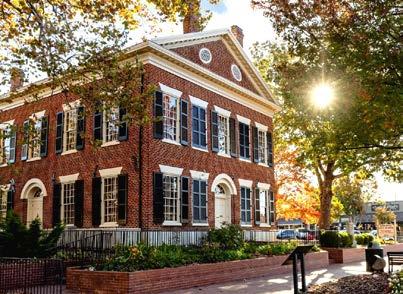
At Forney Industries, safety is our top priority. Whether you’re a seasoned welder or just starting out, it’s crucial to prioritize safety measures to protect yourself and those around you. Here are the top 10 welding safety tips recommended by Forney’s Expert Tech Services:
When it comes to welding, what you wear matters. Opt for cotton clothing as opposed to polyester. Cotton burns, whereas polyester melts and can stick to your skin, causing severe burns. Forney’s flame-retardant jackets are a must-have for welding professionals. Trust in the superior quality and functionality of Forney’s® welding jacket to keep you safe and comfortable on the job.

Welding exposes you to intense UV radiation similar to the sun, but without the Earth’s atmosphere to filter it. Protect your skin by covering all exposed areas to avoid sunburn-like effects.
Electricity follows the path of least resistance, so ensure your welding setup has a solid grounding path to prevent electric shocks. To achieve this, find clean metal that is not painted, primed, or rusty, and place the actual clamp as close to the weld as possible. Additionally, check all connections for tightness.

Sparks and slag can easily get trapped in folds or creases of clothing, leading to smoldering and potential fire hazards. Wear fitted clothing without creases to minimize this risk.
Regularly clean and maintain your welding equipment to keep it in good working condition. This practice enhances safety and improves the quality of your welds. For instance, use Forney’s nozzle gel to eliminate erratic operation with a film that won’t clog the orifices and threads on MIG nozzles and contact tips. Additionally, blow out the internals with compressed air using the Forney 2.5 CFM Air Compressor.


Welding produces harmful smoke and fumes that can damage your lungs. Work in well-ventilated areas or use respiratory protection like a respirator or fume extractor.
Remove flammable materials such as wood, cardboard, or dry leaves from your work area. Keep a fire extinguisher nearby in case of emergencies.
Auto darkening welding helmets are convenient but require proper maintenance. Test them periodically using a flashlight or exposure to natural light to ensure the batteries are functional and will darken appropriately during welding.
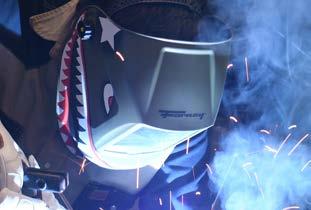
Store auto darkening welding helmets in a location where the solar charge panel is exposed to ambient light. This helps maintain battery life and ensures the helmet is always ready for use.
Lastly, never stop learning about welding safety. Stay updated on the latest safety protocols, techniques, and equipment to ensure you’re always working as safely as possible.
By following these welding safety tips from Forney’s Expert Tech Services, you can protect yourself from potential hazards and enjoy a safer, more productive welding experience. Your safety is paramount, and investing in proper safety practices is investing in your well-being. For more information and to explore our range of welding safety products, visit https://www.forneyind.com.
Stay safe and weld on!
Disclaimer: Remember, these tips are general guidelines. Always consult specific safety guidelines and regulations for your welding processes and equipment.
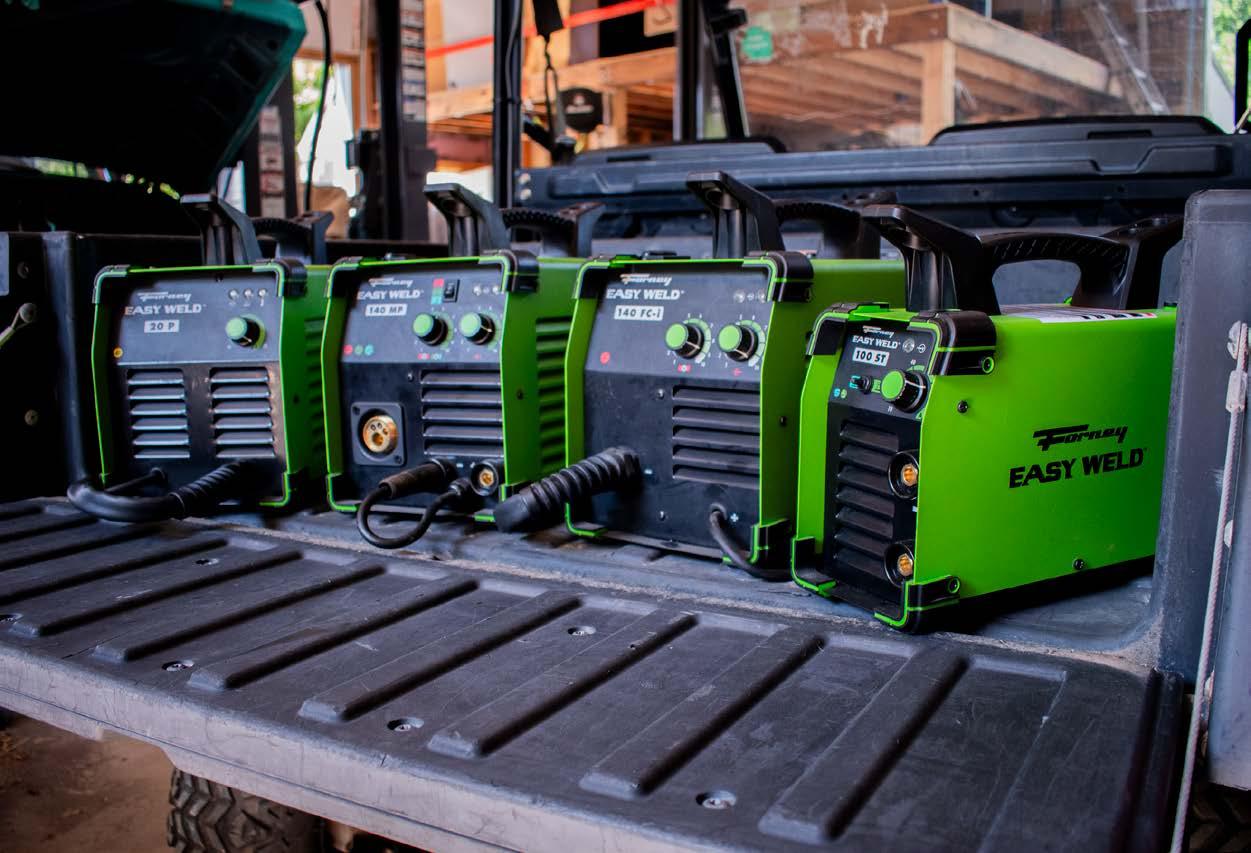
When the job demands the best, Forney stands ready. Crafted to meet the unique challenges of farm and ranch life, Forney products offer the reliability and toughness needed to handle any task. Whether you’re repairing essential equipment or building from scratch, Forney’s innovative solutions give you the confidence to tackle every project. Trust a name that’s been a part of American life for generations.

BY KRYSTA PAFFRATH
In the heart of Texas, the Brahman breed reigns supreme, and no one embodies this more than BRC Ranch. Founded on a rich legacy of cattle ranching, BRC Ranch has become synonymous with high-quality Brahman cattle. The ranch is dedicated not only to raising some of the best Brahman cattle in the country but also to educating others about the breed and the lifestyle that surrounds it. This commitment to education and community is perfectly encapsulated in the “Over the Hump” podcast, which brings listeners inside the world of the Brahman breed and shares stories of those who are raising the best animals in the industry. Hosted by Brandon Cutrer, Rachel Cutrer, and Keaton Dodd, they cover all things Brahman while also making the content accessible to those who might just be starting their Brahman journey.
THE LEGACY OF BRC RANCH
BRC Ranch, owned and operated by Brandon and Rachel Cutrer, has built a reputation for excellence in Brahman cattle industry. With decades of experience between the two, BRC has a proven record of cattle that excel in both form and function. With accolades and awards from Brahman Shows around the country including Championship titles from Houston Livestock Show, the ranch focuses on producing cattle with desirable traits, such as superior muscle structure, fertility, and adaptability to various climates.
BRC Ranch’s commitment to the Brahman breed goes beyond breeding and
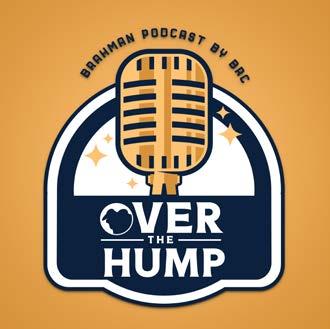
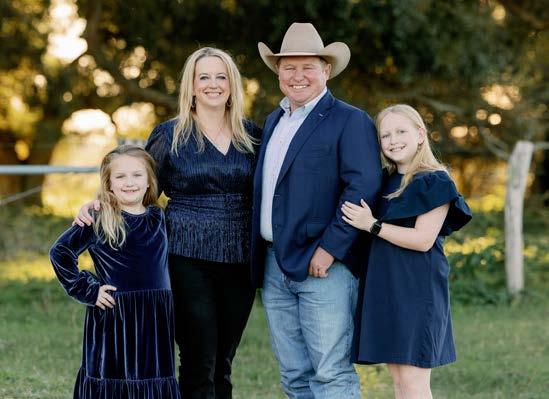
You can find the Over the Hump Podcast on all major listening platform or learn more about the BRC Ranch at BRCRanch.com.
raising cattle. The ranch is also heavily involved in promoting the breed through various channels, including their active participation in cattle shows, educational programs, and most notably, their podcast, “Over the Hump” where they bring on Brahman producers from around the country to dive deeper into the breed they all know and love.
THE OVER THE HUMP PODCAST
Launched as a way to connect with a broader audience, the “Over the Hump” podcast offers a unique look into the world of Brahman cattle. Hosted by members of the BRC Ranch team, the podcast covers a wide range of topics, from cattle breeding strategies and ranch management to the history of the Brahman breed and the day-to-day challenges of running a cattle operation.
Each episode of “Over the Hump” is designed to be both informative and engaging, appealing to seasoned ranchers and those new to the world of Brahman alike. The podcast often features guest appearances from industry experts and fellow ranchers, who share their knowledge and experiences. This diversity of voices and perspectives helps to paint a comprehensive picture of the Brahman cattle industry and the dedication it takes to succeed in it.
One of the standout aspects of the “Over the Hump” podcast is its focus on authentic storytelling. The Cutrer team and their guests not only share outstanding information on the Brahman breed but also share personal anecdotes and stories from their own experiences which gives listeners a glimpse into the life of a Brahman Producer. These stories not only entertain but also educate, highlighting the hard work, resilience, and passion that go into raising Brahman cattle.
In an age where agriculture is often misunderstood or overlooked, the “Over the Hump” podcast serves as an important bridge between the Brahman community and the general public. It helps to demystify the processes involved in cattle ranching and emphasizes the importance of preserving agricultural traditions. Moreover, by focusing on the Brahman breed, the podcast shines a light on a unique and valuable part of the cattle industry that deserves more recognition.
For BRC Ranch, the “Over the Hump” podcast is more than just a way to share information; it’s a platform to inspire and connect with people who share their love for Brahman cattle. Whether you’re a rancher looking for tips on improving your herd or a listener who simply enjoys learning about agriculture, “Over the Hump” offers something for everyone. Through this podcast, BRC Ranch continues to lead the way in promoting and preserving the legacy of Brahman cattle, ensuring that this iconic breed thrives for generations to come.
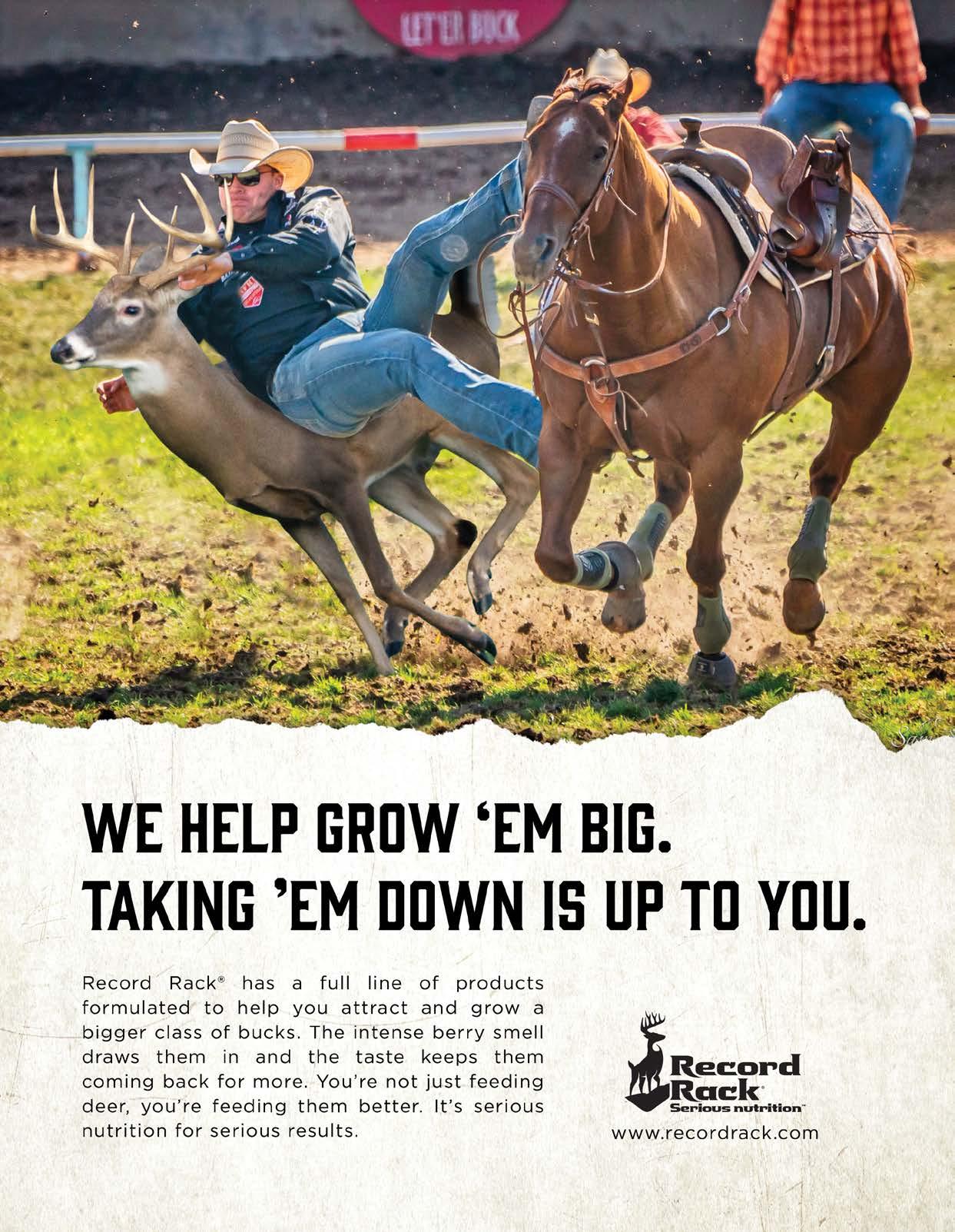

From working on dairy farms to writing ballads, Jeremiah is on a mission to put storytelling at the forefront of country music and content creation.
BY KRYSTA PAFFRATH
Jeremiah Craig is a modern-day troubadour with a passion for storytelling through both his music and his love of cowboy boots. Growing up in the rustic landscapes of Western New York, Jeremiah was immersed in the sounds of bluegrass and folk music from an early age. His journey from working on dairy farms and construction sites to becoming a celebrated musician and content creator is nothing short of inspiring. Today, Jeremiah combines his love for traditional ballads with a deep appreciation for well-crafted cowboy boots, sharing his passions with a growing online audience. In this interview, we dive into his unique background, his love for music, and how he turned a simple interest in cowboy boots into a thriving brand.
Q: Can you give our audience a brief introduction to yourself and your background?
I grew up in the country in Groveland, which is in Western New York, south of Rochester. Growing up, I loved bluegrass music, worked on farms, and did landscaping—there were a lot of dairy farms where I grew up. I was on a hoof-trimming crew, where we’d trim the hooves of dairy cows. Later, I took on construction jobs, and eventually, I got into marketing in college. That’s where I discovered songwriting, started playing guitar, and joined a band. From there, it was pretty much history. That’s where everything really began for me—when I joined my first band in college.
Q: Did becoming a musician and content creator happen at the same time for you?
A: I definitely started with music first, but I think it depends on what you consider “content.” Music is content— and I think it can be anything people use to escape their current situation, to take a break. Music, movies, books—they’re all content, and the internet has made them readily available. So, when people ask what I do, I include music in my job as a content creator. I started playing music when I was 14, beginning with the banjo, and I played and sang a lot before I ever recorded anything on the internet. The internet was still pretty new back then. It wasn’t until I got to college that I realized the power of
YouTube, and I put up my first video around 2007. I’ve since deleted it, which I wish I hadn’t—just for the history aspect of it.
Q: What is it about ballad-style music that caught your interest enough to incorporate it into your music?
A: It was something I heard a lot growing up. My father played guitar, so we’d sing old folk songs like “Darlin’ Cory” around the campfire or in the cabin. I also listened to bluegrass, and I loved songs with stories. Folk ballads are different from 80s rock ballads. A folk or bluegrass ballad can be really fast; it’s not dependent on the time signature. What matters is that there’s a story in the song. Songs like “Wreck of the Old ‘97” or “John Henry”—these old songs that told stories were captivating to me. So, when I started writing music, I wanted to write stories, to be part of that tradition of storytelling in folk music. Whether my stuff is listened to or not, it feels like being part of something historic. There are songs collected by the Library of Congress that you can still listen to, even though nobody plays them anymore. It’s just history, and I think it’s cool to be a part of that.
Q: You’ve got a really classic sound to your music, are there any artists that you’ve drawn inspiration from?
A: Yeah, definitely. Johnny Cash is a big one. My godfather loved Johnny Cash, and we’d always have him playing, whether we were on vacation in the Adirondacks or somewhere else. In addition to him, the Stanley Brothers, a bluegrass duo, Flatt and Scruggs, another bluegrass duo, and of course, Bob Dylan—he really pushed me in
my songwriting. Once I heard him, it opened up the possibilities of what songwriting could be for me. I also really like Alison Krauss and the imagination and storytelling of Tom Waits.
Q: You recently released “Home on the Range” with Claudia Hoyser, are you currently working on any new music or have plans to do so in the near future?
A: That collaboration with Claudia came about through a boot video I did. Since I had her attention, I suggested we collaborate on a song as well. That’s something I want to do more of—collaborate with other musicians on classic traditional folk songs. It’s really fun. I also have about 10 songs that I’ve written, so I’m ready for another album. This one’s more of an adventure music album. For example, I’ve got a new version of the old folk ballad “Buffalo Skinners,” a song about traveling through Montana in the winter called “Montana Moon,” and another one about traveling out west called “Wandering Way Out West.” There are a lot of adventure songs on this album. My last album, Life is for Taking Chances, was mainly about chancetakers and risk-takers, but this next one is more about adventures. I’m looking forward to getting them recorded.
Q: Where did your passion for cowboy boots come into play for your brand?

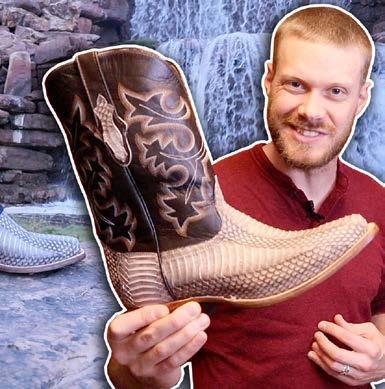
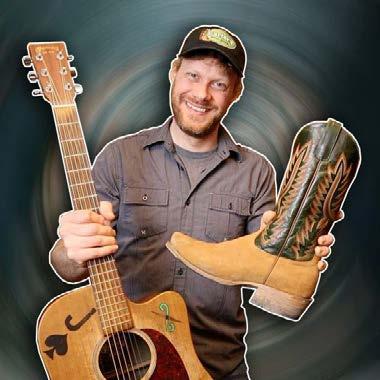
Growing up in the country, I’d run through sneakers and all sorts of shoes so fast—they couldn’t handle running through the woods and doing the things I did around the property. One day, my brother got a pair of cowboy boots, and I was really interested in them. I think it was either my senior year of high school or the summer before I went to college that I got my first pair. I loved how they were built, and that they could be repaired. They weren’t like sneakers that I’d have to throw out after six months. They’d break in and form to my feet. I just loved how durable they were and that they could be repaired if they got damaged. Eventually, I got more pairs—one with a rubber sole, a fancy black pair—and I started taking my friends to go boot shopping. I fell in love with an exotic pair of caiman belly cowboy boots, and that was the start of my collection.
Later, when I was on tour trying to make a living off my music, I couldn’t make enough money on the road. The old advice to play as much as possible in as many places as possible just didn’t
hold true anymore. So, I went back to the drawing board, did some marketing research on my interests, and realized there was a huge demand for content about cowboy boots online, but not many people were making it. I made my first cowboy boot video in April 2018, and it did really well. I kept making cowboy boot videos, including my music at the end of each one, and the rest is history. Now, my channel is about cowboy boots and music, and it’s increased my listenership more than I ever imagined.
Q: When people listen to your music and watch your videos, what do you hope they come away with?
I hope they experience the stories in the songs, and that they imagine what I’m singing about. It’s about escaping, taking a break from whatever they’re doing, and imagining something else. If I can get someone to see what I’m singing about, to feel like they’re watching a movie—that’s my main goal. I want to help them, maybe through a difficult time, or just help them relax or think about something else. The imagery in storytelling is everything when it comes to telling stories.
Q: Do you have any closing thoughts that you’d like our audience to know?
I’m working on a big video project that I’ve never done before—a documentary-style video. This past April, I went to a custom boot-making school in Dillon, Montana, with Schwarz Custom Boots. I spent two weeks there making a pair of boots, learning the process with the two teachers, Dan and Julia. This video is going to be really cool; it’s still in the works. It really changed my perspective on cowboy boots, how they’re made in factories versus how custom bootmakers make them. They’re rooted in cowboy culture and make boots for cowboys. That’s something I’m working on right now, and I’m excited for everyone to see it.
To follow Jeremiah’s journey of ballads and boots, make sure to follow him on your favorite social platform
Facebook: @JeremiahCraig.Music
Website: JeremiahCraig.com
Instagram: @jeremiahcraigmusic
YouTube: @JeremiahCraig
There’s something undeniably comforting about a pot pie, with its rich, savory filling encased in a flaky, golden crust. This Guinness Braised Venison Pot Pie takes that comfort to the next level, combining tender
• 1 tbsp high-heat oil
• 2 lbs venison (or beef brisket or boneless chuck roast) cut into 1-inch pieces
• 4 medium to large carrots, peeled and sliced
• 1 large onion, diced
• 3 stalks of celery sliced into half into pieces
• 2 medium to large potatoes, peeled and diced into 1-inch pieces
• 2 tbsp all-purpose flour
• 2 tbsp fresh thyme leaves
• 3 garlic cloves, minced
• 1-½ tsp coarse kosher salt
• 1 tsp ground black pepper
• 2 cups beef broth
• 11 oz Guinness beer
• Egg wash
• 1 box of puff pastry
pieces of venison with the deep, malty flavors of Guinness stout. The long, slow braise ensures that the meat becomes incredibly tender, while the vegetables soak up all the delicious, savory goodness of the sauce. Topped with a
1.) Preheat the oven to 350°F and place an oven rack in the middle part of the oven.
2.) Heat the oil in a Dutch oven over medium-high heat. Working in batches, brown the meat on all sides. Once browned, remove the beef and set aside.
3.) Add in the carrots, onions, and celery and cook for 8 minutes, until they begin to soften.
4.) Add the flour, thyme, garlic, salt, and pepper and cook for 30 seconds
5.) Deglaze the pot with the beef broth, stout, and sugar, scraping up any browned bits on the bottom of the pot. Add your potatoes and bring the mixture up to a boil, cover with a tight-fitting lid, and transfer to the oven. Let braise until the meat is tender and the sauce has thickened, about 1-½ to 2 hours.
6.) When the meat is tender, taste and adjust the seasoning. If too much liquid has reduced and the sauce is salty, add water to balance it out.
7.) Transfer the braised meat filling to a shallow container and let it cool at room temperature until no longer hot, for about 1 hour. Transfer to the refrigerator and chill for at least 2 hours.
perfectly crisp puff pastry, these pot pies are a hearty, soul-warming meal that’s perfect for a cozy night in. Whether you’re a venison aficionado or new to game meats, this recipe is sure to impress this fall.
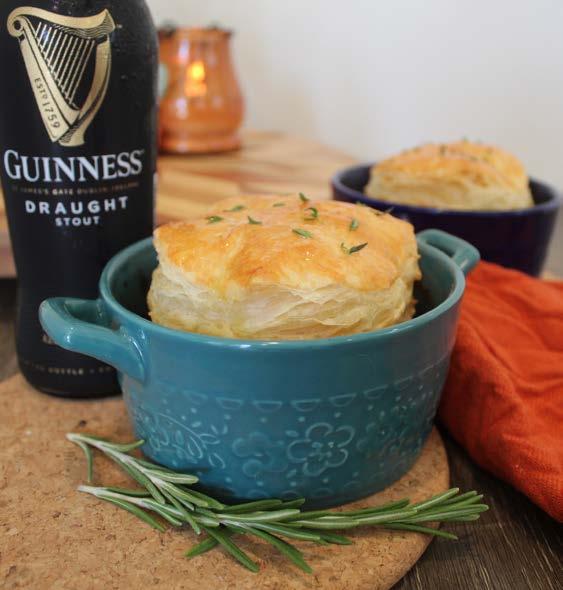
1.) Preheat the oven to 400ºF and place an oven rack in the lowest part of the oven. Place six 8-ounce ramekins on a sheet pan. Roll out the pastry thin and cut circles to fit over the tops of the ramekins.
2.) Divide the chilled filling between the ramekins and place the pastry circles on the top. Brush the pies with egg wash and cut a slit in each crust to allow the steam to vent.
3.) Bake the pies on the lowest rack until the crust is golden brown, about 30-35 minutes. Transfer to a wire rack to cool for 5-10 minutes before serving.


Western fashion has always represented more than just style—it’s a lifestyle rooted in rugged independence, hard work, and a deep connection to nature. While classic cowboy boots, widebrimmed hats, and denim have long been wardrobe staples, 2024 has seen a refreshing evolution of Western-inspired fashion. New subgenres like Coastal Cowgirl, Corporate Cowgirl, Casual Cowgirl, and Vintage Cowgirl are offering a modern twist on a timeless aesthetic, each bringing its own flair while staying true to its Western roots.
BY KRYSTA PAFFRATH
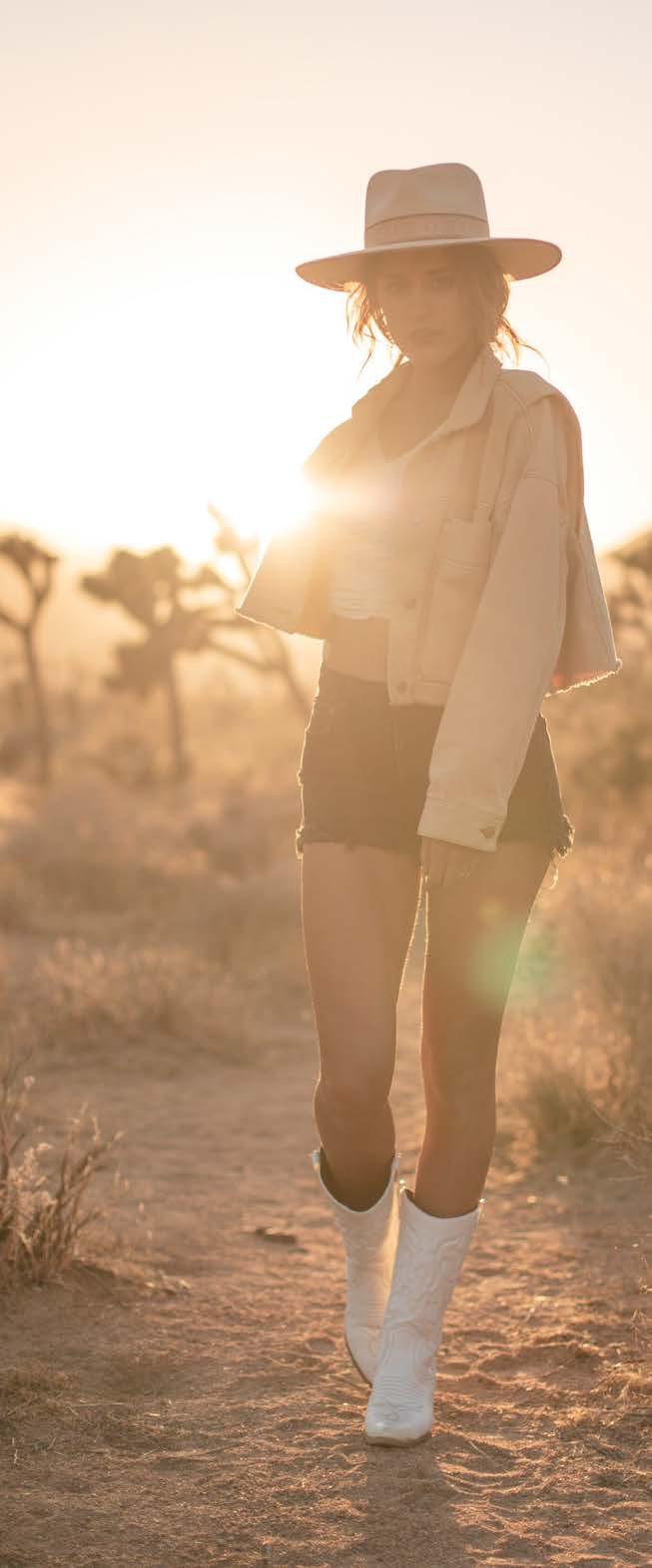

The Coastal Cowgirl trend blends the laidback vibe of coastal living with the bold, rustic elements of Western fashion. Think light, breezy fabrics like linen and crochet paired with staple Western pieces such as distressed denim shorts, knit tank tops, and of course, a cowboy hat to complete the look. The color palette is all about neutrals—white, beige, and sandy tones—reflecting the beachside aesthetic while staying true to Western tradition.
Mix and match your tops and accessories for the perfect Coastal Cowgirl vibe. What’s great about this look is that you can dress it up or dress it down depending on your plans. Want to make this style your own? You really can’t go wrong with anything free-flowing, light, and airy. Pair it with your favorite pair of light-colored cowboy boots and you’re good to go!
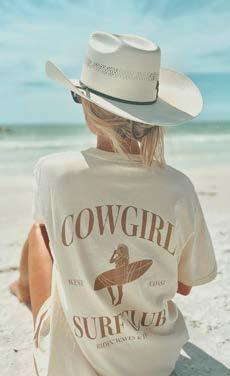


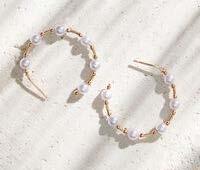
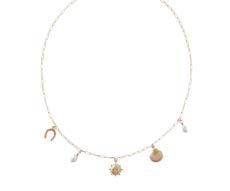
For women who want to embody their cowgirl spirit in the workplace, the Corporate Cowgirl trend is here to blend Western charm with officefriendly attire. This trend incorporates tailored blazers, button-ups, and your favorite pair of trousers with touches of Western accessories to bring the look together like your favorite piece of turquoise jewelry or a neck scarf or wild rag. This trend has been popular for quite a few
Pair a sharp black blazer with a silk blouse, dark denim trousers, and polished Western boots. Add a turquoise necklace for that extra pop of cowgirl charm.
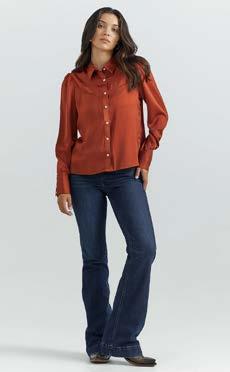
years and we don’t see that changing any time soon as more and more women are incorporating Western style into the workplace. Expect to see a combination of denim mixed with silk scarves and vintage jewelry that reflect the cowgirl ethos in a more polished, upscale way. It’s bold but professional, perfect for today’s modern-day cowgirl who isn’t afraid to make a statement in the boardroom.
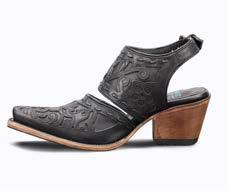
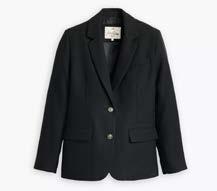
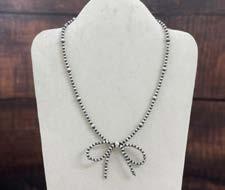
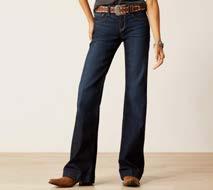
Casual Cowgirl fashion is where Western meets everyday wear, perfect for women who love Western style but want to keep things laid-back and functional. It’s all about comfort without sacrificing style, so you’ll see plenty of relaxed denim, oversized graphic tees, functional accessories, and lived-in comfort.
Don’t be afraid to layer with this look. Depending on the season, you could add an oversized flannel instead of a sweater, pair it with your favorite relaxed denim jeans, and either a western-inspired sandal, or for those chillier fall mornings, you could opt for a cute ankle boot. Finish the look with minimal accessories for a look that’s put together but relaxed.
This trend is perfect for the weekend or a casual day out. What’s nice about this trend is that you can wear just about anything in your closet and dress it down with your accessories or shoe choice. More often than not, you will find cowgirls achieving this look with their favorite pair of Hey Dudes or any popular driving moccasin.
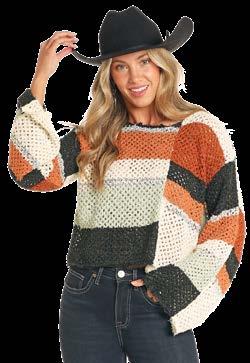
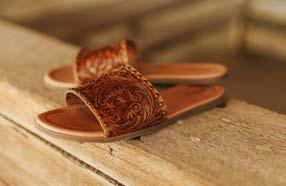
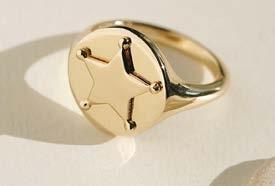
The Vintage Cowgirl trend pays homage to the golden era of Western fashion with that blend casual and retro elements together to create a seamless look. Expect to see plenty of distressed denim, graphic tees, and neutrai colors paired with pops of color. This trend taps into nostalgia while
Throw on a distressed denim trucker jacket with your favorite pair of jeans and vintage cowboy boots. Top it off with a vintage piece of jewelry thrifted from your favorite vintage reseller.
still feeling fresh and relevant today. Vintage Cowgirl fans love thrifting for authentic Western pieces or repurposing classic items like denim jackets, cowboy boots, and bolo ties. It’s a celebration of Western heritage, perfect for those who love the iconic look of yesteryear.
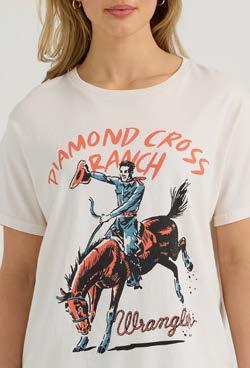

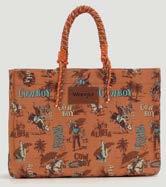
The Concert Cowgirl trend brings the Western look to life with vibrant, eye-catching pieces perfect for a night of live music under the stars or your favorite outdoor music festival. This style combines bold style, statement pieces, and flashy cowboy boots. This this look, you could focus on one bold aspect of your outfit and plan the rest around that. Featured here we do a bold boot paired with a graphic and faux leather shorts. Accessorize with layered jewelry and a black leather jackett, and you’re ready to dance the night away while turning heads.
Think edgy with a little bit of cowgirl flair. You could combine a simple graphic tee with a pair of high rise, faux leather shorts and statement boots. If you’re not into the statement boots, then you could opt for a more bold top or jacket and then build your outfit around that.
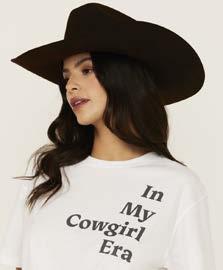
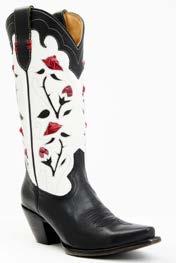
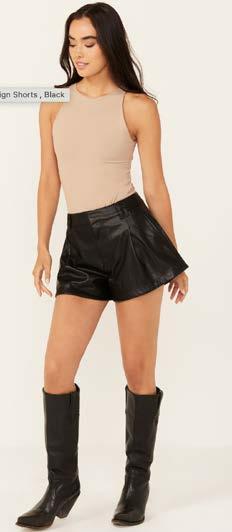



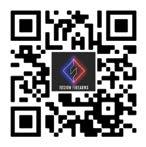

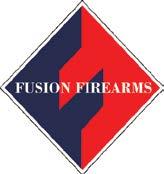



BY KRYSTA PAFFRATH
From the moment Megan Wimberley could cling to a saddle horn, legs barely long enough to sit a horse, she was in love. Her fascination with the wild and domestic animals of the American West has dominated much of her life- a preoccupation with drawing and learning about these animals following her wherever she went. Through her work, Wimberley contemplates our connection to, and partnerships with, the animals around us. She draws on her experiences growing up working with horses, dogs, and cattle.
Wimberley also brings her experience in the western/ranch lifestyle to her art, exhibiting the hard work of ranchers and bringing awareness to the work women do in these spaces. She is the founder of Cowgirl Artists of America, which strives to increase opportunities and recognition for female artists and makers working in the Western genre through community, education, promotion, and collaboration. Wimberley’s work has been exhibited in the Mountain Oyster Show, Cowgirl Up! at Desert Caballeros Western Museum, The Cowgirl Gathering, and Women’s Work at the A.R. Mitchell Museum of Western Art, among others.
Wimberley received a BA in Fine arts from Wayland Baptist University and an MA in Art Education from Boston University. After starting her career in 2016 Wimberley took some time away from her art practice when she became increasingly ill. After being diagnosed with Rheumatoid Arthritis and finally receiving treatment she spent time focusing on renewed health and life improvements. Thanks to a caring rheumatologist and a holistic approach to her health she’s back to work. She currently resides in Tulsa, Oklahoma.


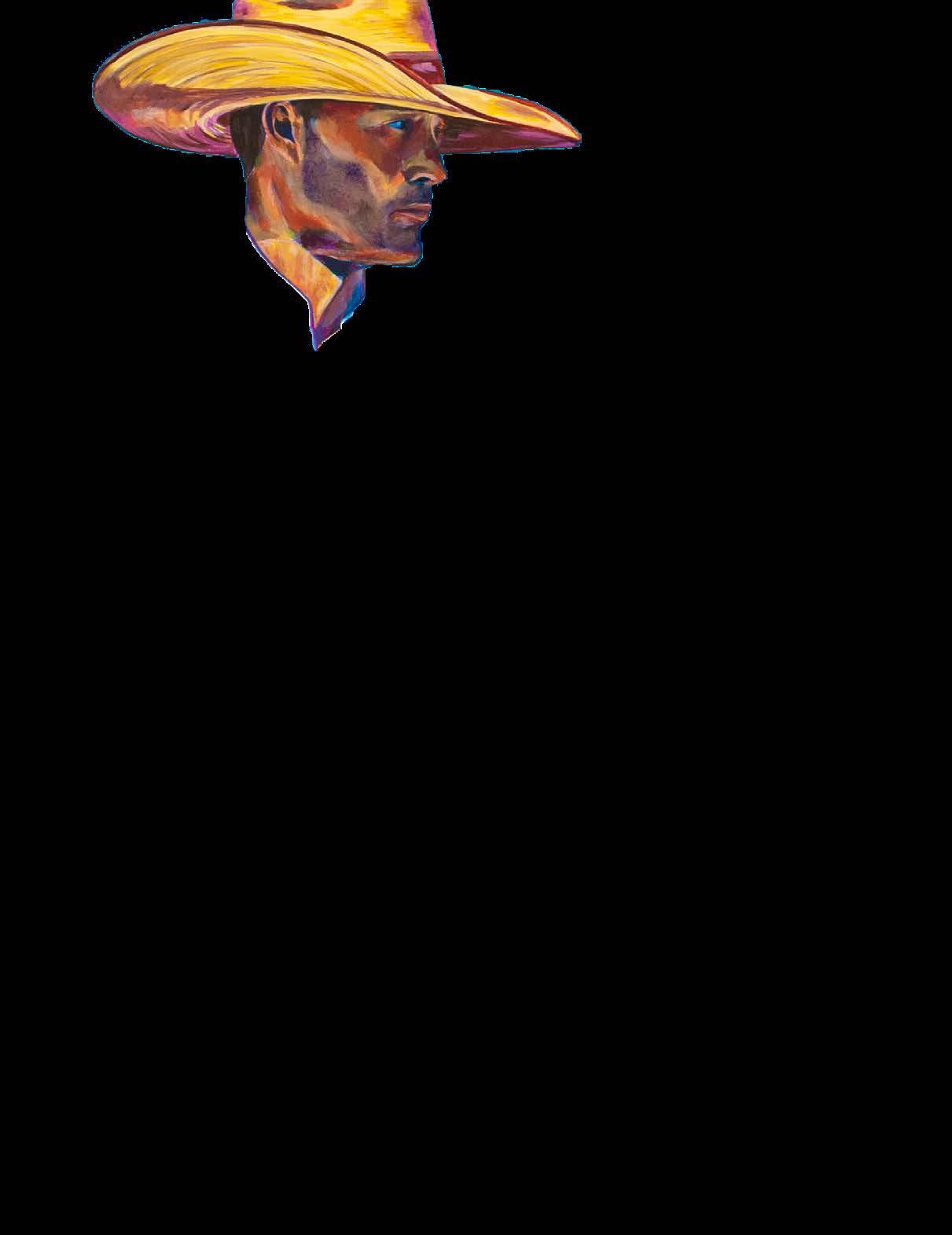

was going to be spent at the computer editing photos, which really did not bring me joy. I switched back to my first love, drawing, and then eventually back to painting. It’s kind of interesting, thinking about this now, because my paintings still take quite a bit of time, but over the years I’ve developed a style that I love and even though I may spend weeks or months working on something, there really is joy in it. Sure, sometimes it can get a little boring, but that’s true of so many things we put a lot of time into. More than that though there are so many moments of delight while working on a painting. The subdued beauty of an underpainting, the spark of exhilaration when the colors start to sing, and those moments of tension when you are putting the finishing touches on and deciding when to say it’s done.
Q: What do you do or where do you go to find inspiration for your pieces?
A: I have always been drawn to animals. I am mesmerized by their anatomy and the way they move, their intelligence, the various (and amazing ways) in which they are adapted for their environment. Whether a mountain lion with its power and stealth, or a tiny bug able to outmaneuver a bat in flight- animals are incredible. Growing up in the Western/Cowboy lifestyle has given me so many opportunities to build deep bonds and partnerships with horses and dogs, and to see those partnerships be built with others. I was put on the back of a horse before I could walk, but it will never cease to amaze me that the 1,000 lb + animals will not just work for us, but with us.
I often put my photography skills to work for gathering reference photos. My cousin is a great horse trainer, her specialty is getting horses started, and I really enjoy going out and photographing her at work. Watching people who are good with horses work with horses is like watching a ballet-- there is so much grace, refinement, and subtle communication happening. It makes for great reference photo
“Ready To Work”
Q: Are there other Western artists who have inspired you in your own work? Or who do you look up to in the Western art industry?
A: I get asked this question a lot and I think it means something different than the way I think about it. I think people often want to know if someone’s artwork inspires me, and for that, I think every piece of art I’ve ever viewed has been inspiring and has been a learning opportunity in one way or another. In my mind, the real inspiration comes from the people who keep you going and help make you better.
Being an artist, for most of us at least, is a very solitary job. We spend a lot of time alone in our studios, and a lot of time alone working on our computers for the business. Not only can it feel lonely, and isolating, but
you can get in your head sometimes, or just feel... I don’t even know how to describe it... “gray” maybe. The work can be a delight, but it is work and it is solitary, and we are made for community. Having a community is so important and every time I connect with my art community I feel invigorated for my work. I almost hate to name anyone because if I listed everyone who deserves to be on the list it would be a long one but Peggy Judy, Coila Evans, Morgan Buckert, Raven Skye, Paige Weber, and Lauren Florence are all artists who have all been a powerful influence in my personal art life and career.
As far as artists whose work I love- Teresa Elliott, Peggy Judy, Beverly (Bear King) Moran, Carrie Ballantyne, Kathy Ellem, Thomas Blackshear, Phil Epp, and Eric Bowman are some of my favorites.
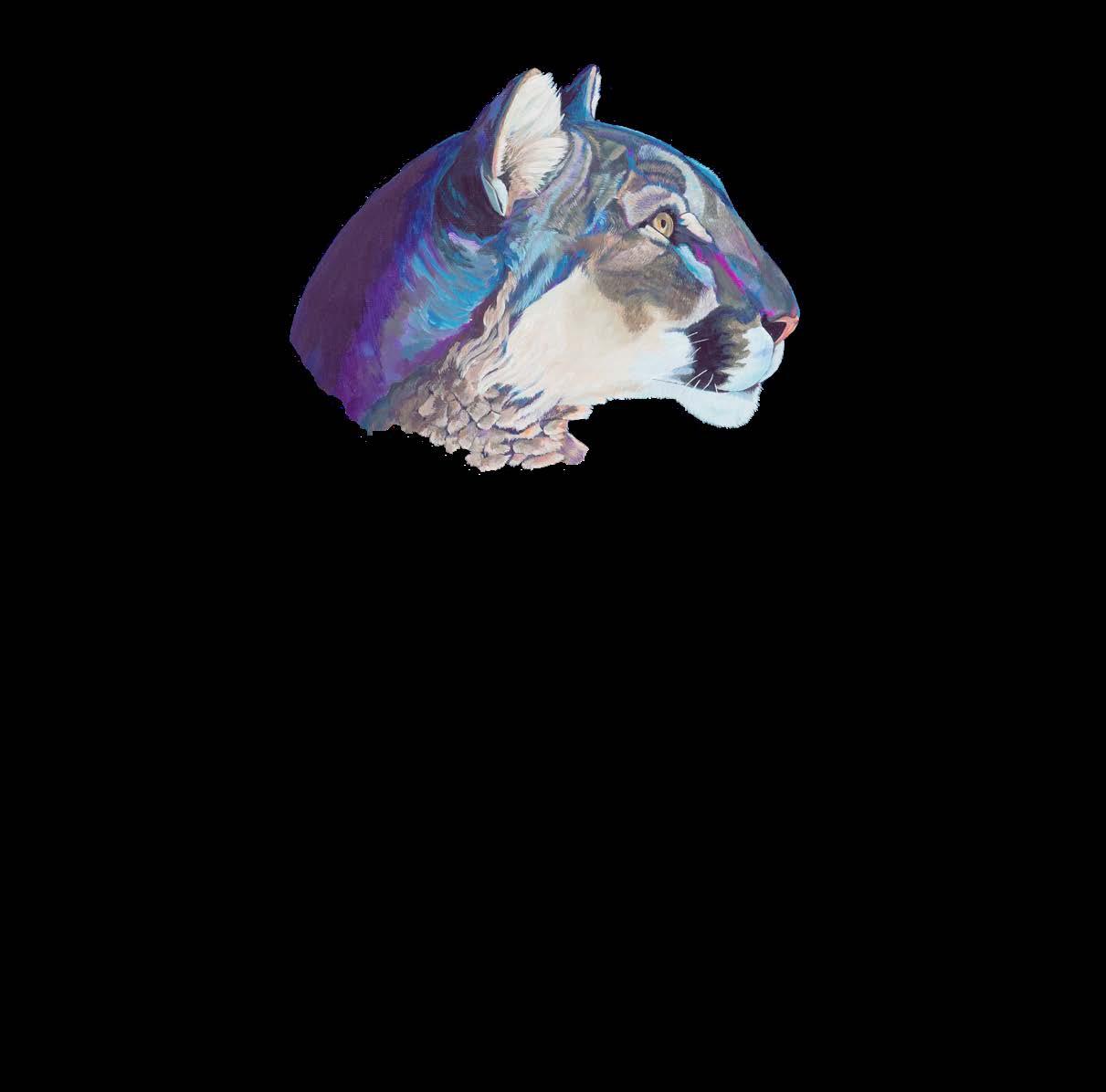
Q: What does your creative process look like for one of your pieces?
A: Ideally I’ll capture my own photo, and spend some time observing the animal. I’ve also worked with photographers and used licensed images when that is not possible. Once I have the image or images I want to use as a reference, I decide what canvas size I want to use to make the most interesting composition. Most usually I plot out the composition in pencil, but sometimes I sketch it out in paint. Next, I lay down my underpainting, focusing on shadows and highlights. My underpaintings are not the traditional monochromatic type and can be quite colorful. After that, it’s a matter of slowly building up layers of color and (implied) texture.
I use very vibrant colors in my work. Often when artists employ bold, vivid colors like this the work becomes more abstract, but for
me, anatomy and texture are also important. Keeping this much detail and also so many colors it can go wrong pretty fast, so I really have to be cognizant of how all the colors are working together. It’s taken years to develop this style and learn how to make all of this work together, but when it works, the colors sing! Even one small area can have so much beauty and life to it!
It’s also cool because when I’m painting a lot, my brain is constantly playing with colors and how they connect with and influence each other. I see so many more colors in the world around me, and when I close my eyes at night I’m often automatically visualizing color combinations. One of the really great side-effects of being an artist is that you develop your ability to “see” in ways that a lot of people never learn. There’s beauty around us that we miss out on, simply because we aren’t looking or haven’t developed our ability to really see what is around us.
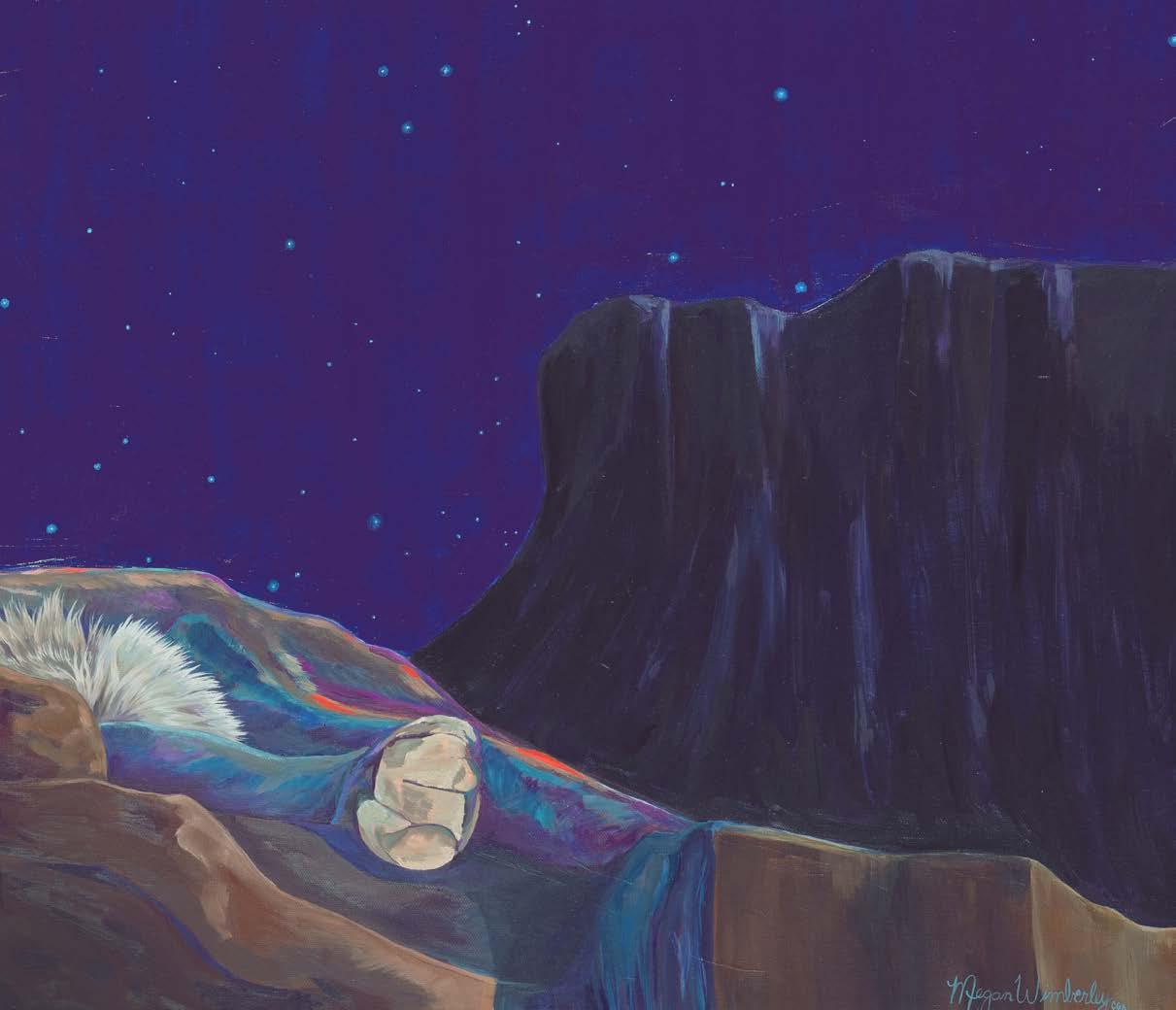

“Stargazer”
Q: How did the creation and founding of Cowgirl Artists of America come about for you?
A: In 2018 I went to an incredibly beautiful Western art show. Every piece was amazing. As I looked around I also noticed that there were very few female artists. I knew this was not uncommon, but something about it just hit me harder that day. I just kept thinking, “Where are the women?” Even within the artwork, there were very few women, and when they were there they were often young, just a pretty face. “Where are the women?” I grew up with so many strong, talented Western women. They were horse trainers and ran cattle. They were artists and makers. Why didn’t I see any of them in this show-- or others? There are so many incredibly talented women and I knew I wanted to do something to help.
In 2021 I decided to take the leap with Cowgirl Artists of America. I started out sharing the work of female Western artists and sharing some basic resources. Pretty quickly people were asking how they could find out more information, so I started a website to give more information, host an educational blog, and create online events. Women kept asking how they could join, so the next step was to have an official membership option. As they say, the rest is history. CGA has been able to offer so many resources- from monthly meetings to exhibitions with industry leaders, and online learning resources. It has been an incredible honor to be able to be a part of this, to see it grow, and to see
it make an impact in the lives of Western artists and makers, and the industry. And best of all-- this amazing community of women! Wow! They are incredible!
Q: Why is it important for you to bring together other Western women artists in the community through Cowgirl Artists of America?
A: We (CGA) believe in the power of community. It is one of our four foundational beliefs. We don’t live in a vacuum and nothing happens in a vacuum. It might sound cliche, but community is where the magic happens. We lift each other up, we learn from each other, we celebrate with each other, we share, and we grow together. Our community isn’t just in CGA either. Our community is the Western art world and industry at large. We are better together. “A rising tide lifts all ships.”
When it comes to my art, people can find my work through my website. I also love commissions. So if you want to see your horse in my style let’s connect. It’s a fun process and people really love to get that piece made especially for them or their loved ones. Commissions do take time though, and there is a wait list so don’t delay. Learn more about Megan, her work, and her commissions at MeganWimberley.com or find her on social media under “Megan Wimberley Fine Art”.
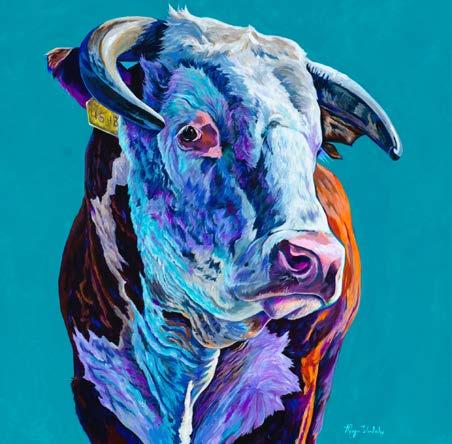
Cowgirl Artists of America is open for membership three times per year, April, August, and December. Basic membership is not juried, which is a bit unusual for an art organization like this, but the goal is to be able to help women from the ground up. It’s better to get started out right than to have to go back and fix things. CGA also knows that artists further along in their career need things that help bolster their career, and require more rigor. In April applications are open for “Pro” and “Signature” membership. These tiers are juried. Signature Membership is the highest distinction and is incredibly hard to get. Their biggest yearly show is “Women’s Work” at the A.R. Mitchell Museum of Western Art in Trinidad, Co. and they have a few other exhibition opportunities as well. For more information visit CGA online at CowgirlArtistsofAmerica.org and follow them on social media.
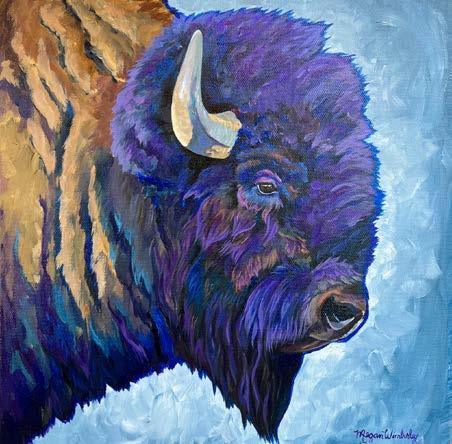
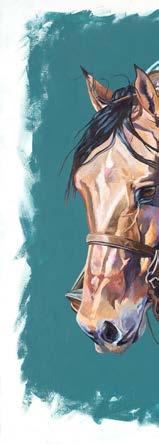


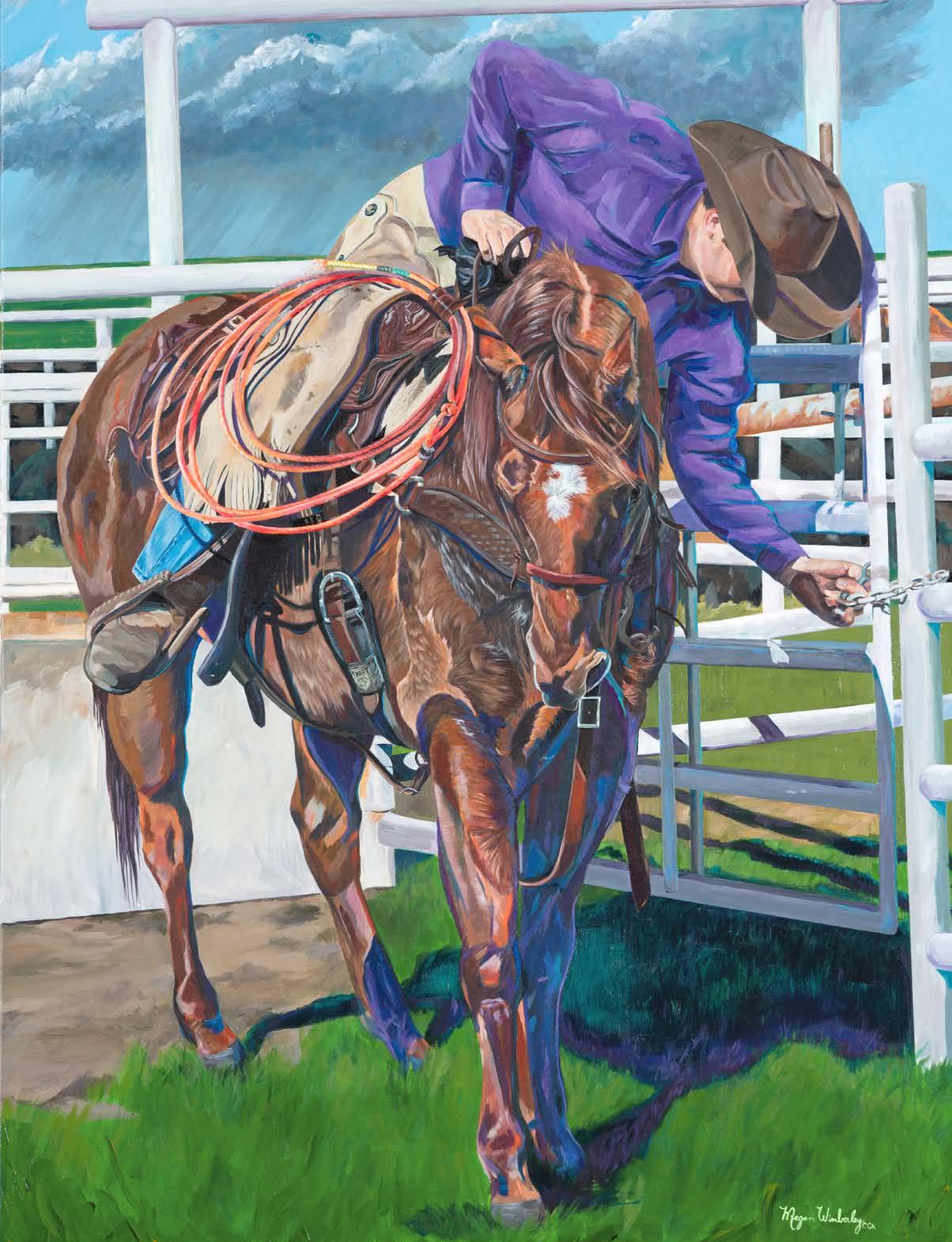

Q: Can you give our audience a little bit of your background? How and where did you grow up, did you grow up in the Western lifestyle, etc?
BY KRYSTA PAFFRATH
A: I was born in a small southern Albertan town called Three Hills, from there we moved to central British Columbia and then later on to northern Alberta where I’ve been for nearly thirty years. Wherever we lived, I spent my time in the woods playing by myself. Sometimes all day, sometimes the nights as well in a tree fort my Dad built for me. Several things occupied my playing time consistently: pirates, and cowboys. As you can see from my work those two obsessions have never left me. I still have pirate and cowboy running in my veins. My photoshoots are still almost all largely inspired by movies about pirate ships and ranches and old time western gunfights.
Q: Has your style of photography changed at all since you started your business? If so, how would you describe your style then compared to now?
A: My journey started accidentally, I picked up a camera for holidays with my wife and kids in the mountains. After bringing that camera along on one trip I sold it. And bought a better one! And I found every horse and cow and took photos of them. The western in my veins was still pumping just as hard as always. I learned about lighting, composition and editing. And one fine winter day, a couple asked for a photoshoot, and that was that. I became a portrait photographer overnight.
Q: What inspires you as a photographer?
A: Story. Story. Story. And light. For me
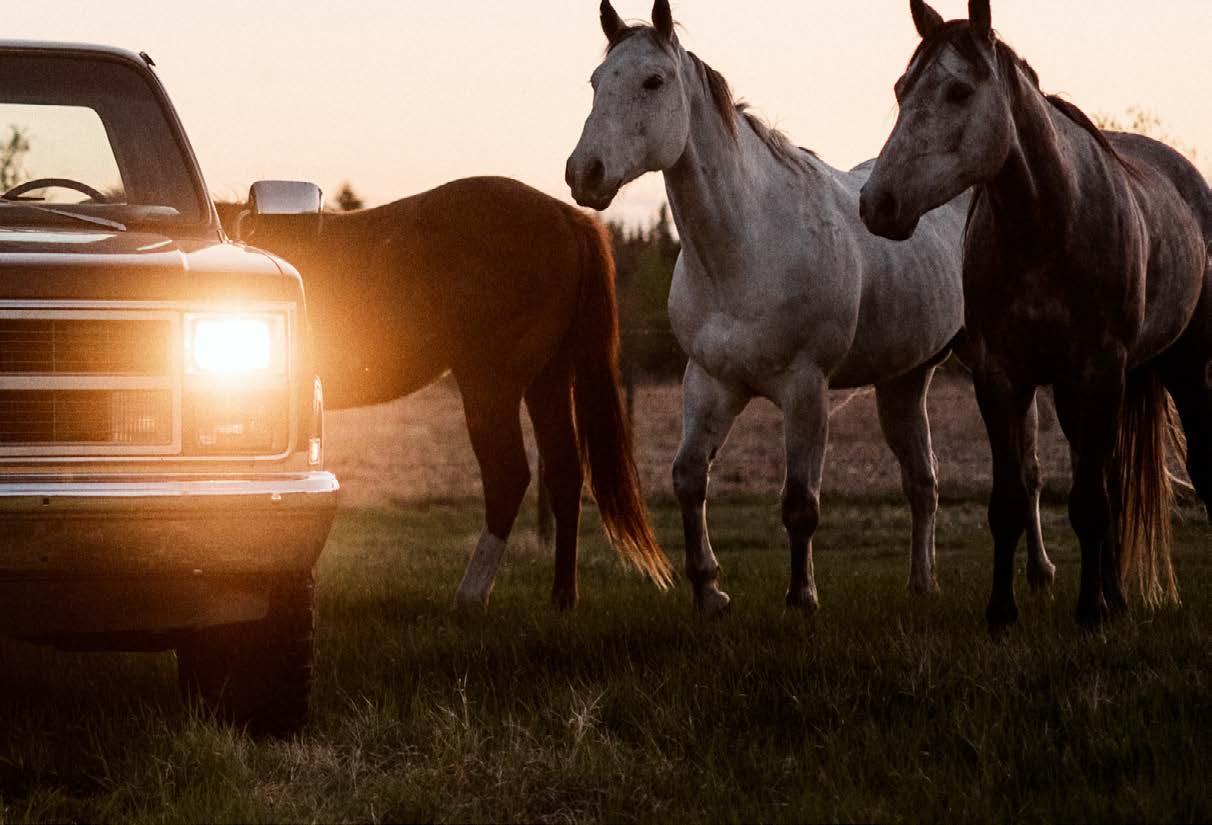
everything is about the story, put that story in some good light, and all the work is done. There, you know my secret!
Q: What do you want people to feel when they look at your photography?
A: I hope my work gets people excited about the story. I always want to have images that look like they are stills taken from a movie scene. I want people to see the story and get lost in it for a little bit.
Q: Can you describe the moment or moments you realized that you could make a living doing something you’re passionate about?
A: It’s been a slow realization for me. Jordan Peterson wisely said a dream combined with small achievable goals is a plan. Get on it and don’t look back for an entire year. And then look back and see where you’ve
gotten after one year of daily steps towards that goal. You’ll surprise yourself. And he was right. When I looked back, that’s when I realized maybe more things were possible than I had even thought at first.
Q: What is something you wish people knew about being a professional photographer?
A: Two things: be ready to be rejected and to work hard to make an image that makes an impression, AND, your vision is far more important than the camera you use.
Q: What is your “why”? Why is it important to you to capture and share the western lifestyle?
A: Western is timeless. And it’s connected to reality in some hard ways. And I love that. I love taking an ordinary day to day
scene and turning it into a photograph that makes people stop to look for a second and a third time, and then buy it and hang it on their wall. I love that it’s real and it means something.
Q: Do you have any closing thoughts about you or your business that you’d like our audience to know?
A: I want to tell the stories of the cowboys and cowgirls who have lived and are living the lifestyle that people often only see in movies, and somehow help in keeping the western tradition alive. And I hope when you look through my work that you can’t help but get drawn into the story.

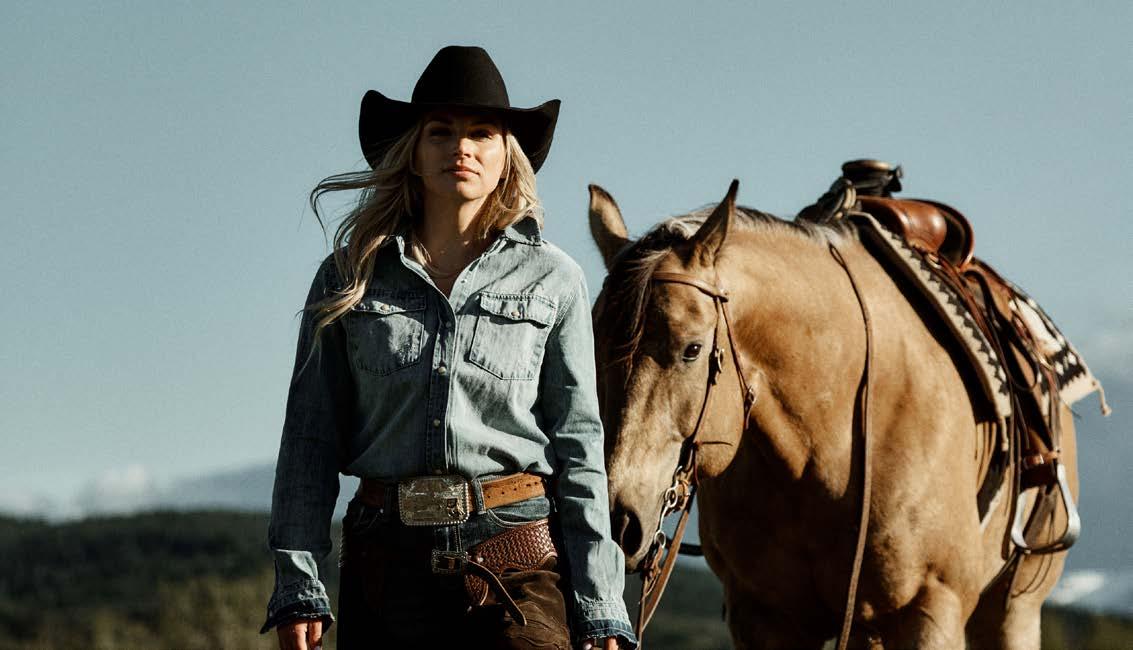







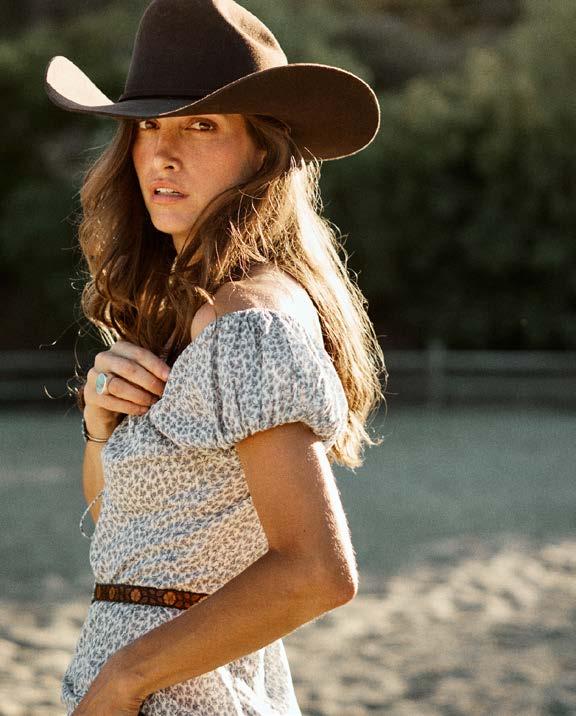
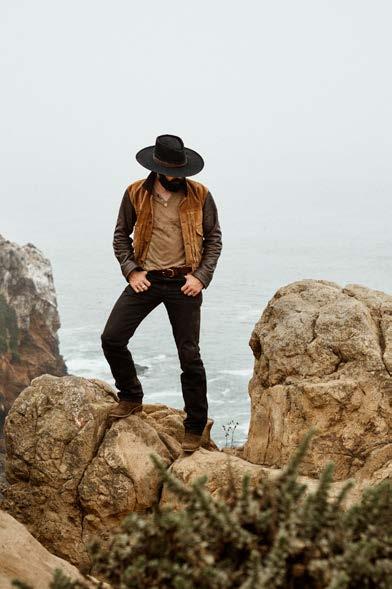

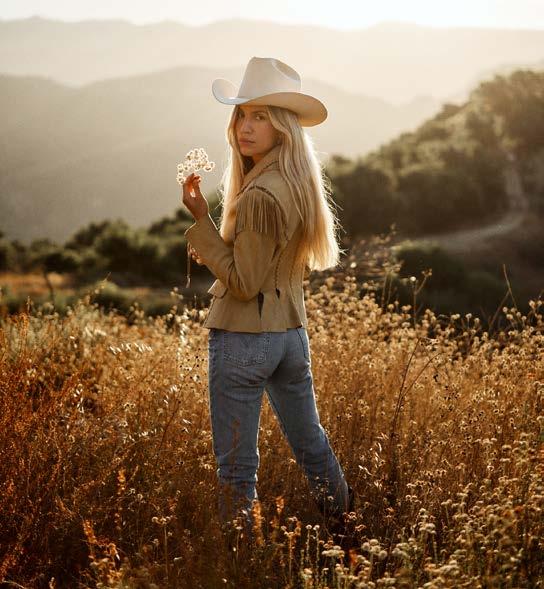

BY KRYSTA PAFFRATH
Acre and Rust Clothing Company is a farm lifestyle clothing company with designs that honor the close community and rich heritage of agriculture. We aim to create and design apparel that is not only attractive and high quality, but also nostalgic and thoughtful. We want people who wear our clothes to feel a sense of pride knowing they are honoring the farming culture in America. We strive to give back through spreading awareness of issues farmers face and supporting organizations that focus on farmers’ physical and mental health.
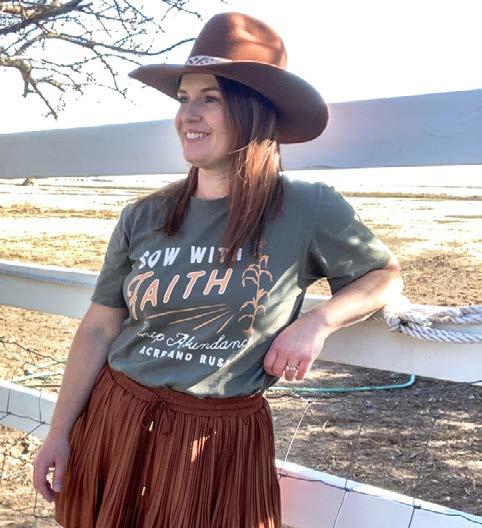
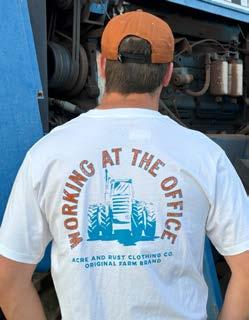

What did the journey to launching your business look like?
We are a husband and wife team, a farmer and former teacher, working to build a family and a business. Ty, the designer, wanted to use his creative talents to show his passion for farming and agriculture. Acre + Rust has been in business for 3 years. Launching Acre + Rust has been a journey of successes and failures. We have asked a lot of questions and learned by watching others. Those failures have led us to learn more than we ever could from a success, but we are farmers at heart and we don’t give up easily.
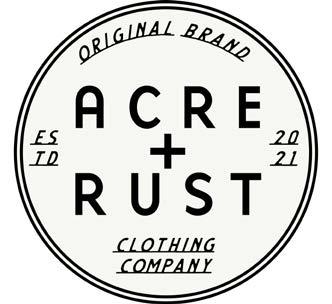
What is something you wish the general public knew about the ag/western industry?
We want to not only bring more awareness to agriculture in general, but to bring awareness to the struggles that farmers face. Most do not realize how dangerous this job is, how skilled you have to be, and how mentally taxing the business is. One of the biggest changes we’d like to see in the farming community is to have a bigger focus on mental health and a holistic approach to agriculture. This could be something as simple as acknowledging the ways in which farming failures occur to everyone, and that our identity is not tied to the success or failure of a farming business.
THE FOUNDERS OF
Acre and Rust are on a mission is to celebrate and honor the farming way of life. They seek not only to raise awareness about agriculture in general but also to highlight the struggles that farmers face. Many people do not realize how dangerous farming can be, how much skill is required, and how mentally taxing the profession is. One of the significant changes they hope to see in the farming community is a greater focus on mental health and a holistic approach to agriculture. This could be as simple as acknowledging that farming failures happen to everyone and understanding that a farmer’s identity is not tied to the success or failure of their business. Their designs and products aim to shine a light on the wonderful crops and animals they care for and to celebrate the people who make up the agricultural community.
Follow on Instagram @acreandrust and learn more at www.acreandrust.com.


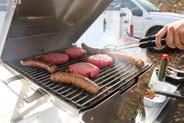
with the TG Series Grill!

Experience the ultimate in tailgating versatility with the American-made TG Series Grill, your compact, durable solution for grilling, griddling, and more. Transform your race day with ease and enjoy a variety of foods, from morning pancakes to wood-fired pizzas, all with one robust, portable grill.


GRILL SHOP NOW PIZZA OVEN GRIDDLE


DON’T JUST HOST A TAILGATE—DOMINATE IT WITH THE TG SERIES GRILL. Made to move and built to last, the TG says goodbye to bulky grills and hello to space-saving solutions and motion control technology.
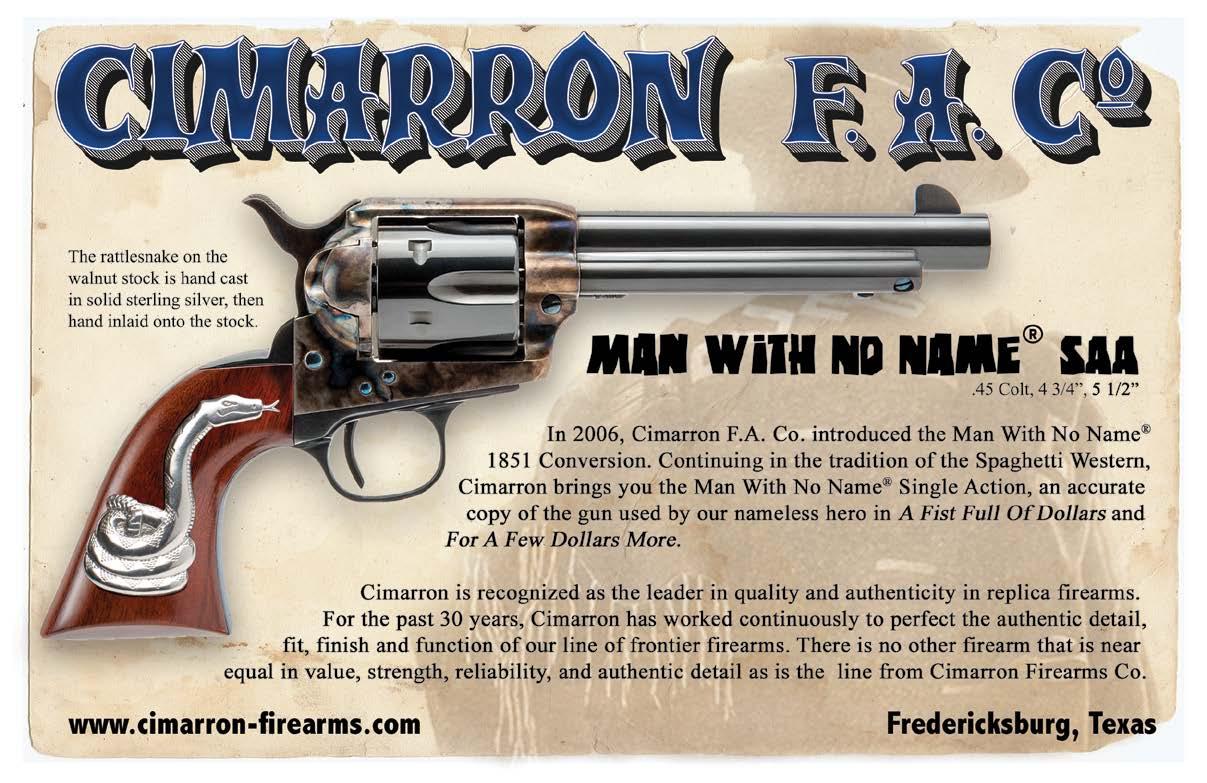
BY: ROB LANG
People will always tell you to be careful when working with your family since it strains relationships. Powell, Lily & Ellie Balkcom, known as The Castellows, prove that working with family can be very rewarding and fun. They started making waves on social media in 2023, garnering views and gaining momentum. Their debut EP, “A Little Goes A Long Way,” was released worldwide on February 9, 2024. They recently moved from their family farm in Georgia to Nashville and have a vibrant tour schedule. Yet another career milestone, they made their Grand Ole Opry debut on August 20th.
Q: What did your big break look like into the music industry and what has the journey been like so far?
Ellie: I was in the deer stand with one of my friends and he said that we should start posting our stuff on social media.
Powell: We’re so thankful. I was talking to the girls the other day, thinking we all had different career paths and never thought we’d be doing this. We feel thankful and blessed to be here even though it’s not what we thought or had intended for our lives.
Q: What were your career paths going to be if you hadn’t gone down the music path?
Ellie: I studied management information systems and international business in college.
Lily: I got my pilot’s license when I was 17 and just wanted to fly planes.
Powell: I studied agriculture in college and have a family farm back home.
Q: Did you grow up playing music?
Powell: We grew up singing and playing in church.
Lily: Our grandmother is the musical one in the family.
Powell: She has been leading worship in her church ever since she was 15, and she still is.
Q: What do you each like to do for fun?
Ellie: I like to read a lot. I just finished Sense and Sensibility. I have already read Pride and Prejudice, but I aim to read all of Jane Austen’s books by the end of the year.
Lily: I’m a big movie watcher, the best movie ever is Smokey & The Bandit. I watched Twilight last night.
Q: You are experiencing a meteoric rise in popularity, what are your career goals?
Ellie: We did our first headlining tour this spring. Our goals are to keep consistently writing songs and getting better as singers and players. We play on all our records. We want to play bigger shows, write better, and play for more people.
Q: Who would you want to either tour with or open for?
Lily: It’d be cool to open for The Chicks. That’d be fun. I’ve heard they put on a great show. Chris Stapleton or Dirks Bentley would be fun.
Ellie: The little amount of traveling we’ve done for being touring musicians. We’ve come to realize the country is countrywide. There are country people everywhere! And it’s super cool to go to some random place you’ve never met before and be like, these are my people!
Q: Do you look at yourselves as role models?
Ellie: Absolutely. Anyone with a platform should look at themselves as a role model whether they want to be one or not. We take that very seriously. We want to be role models for young girls.
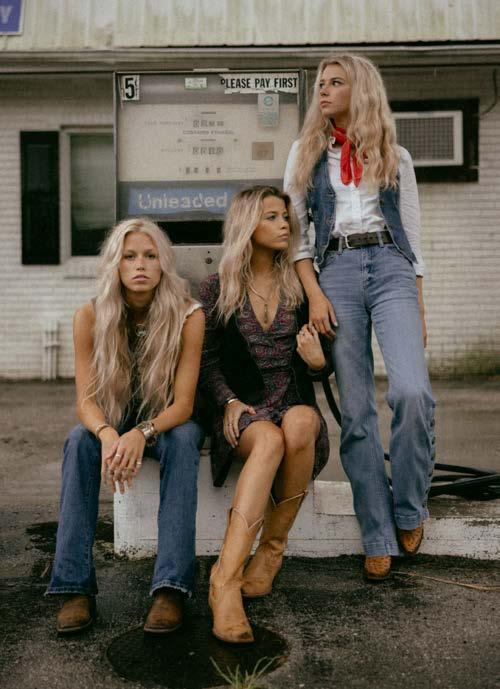
Powell: And our faith is important to us. Like, we want to be good role models of our faith. It’s encouraging when we play shows and there’s sisters in the crowd. They’re encouraged by us, working together and playing together. So it’s just really important for us. Lily: Or mothers who have daughters. They want their daughters to be encouraged by us. I think that is super sweet.
Powell: It is very humbling. It motivates you to want to do better and be better and grow our relationship as sisters. There’s something to that. We need to be held to a high standard, even though our platform is not huge.
Visit the website thecastellowsmusic. com to see their tour schedule, hear their music, and learn more about them.
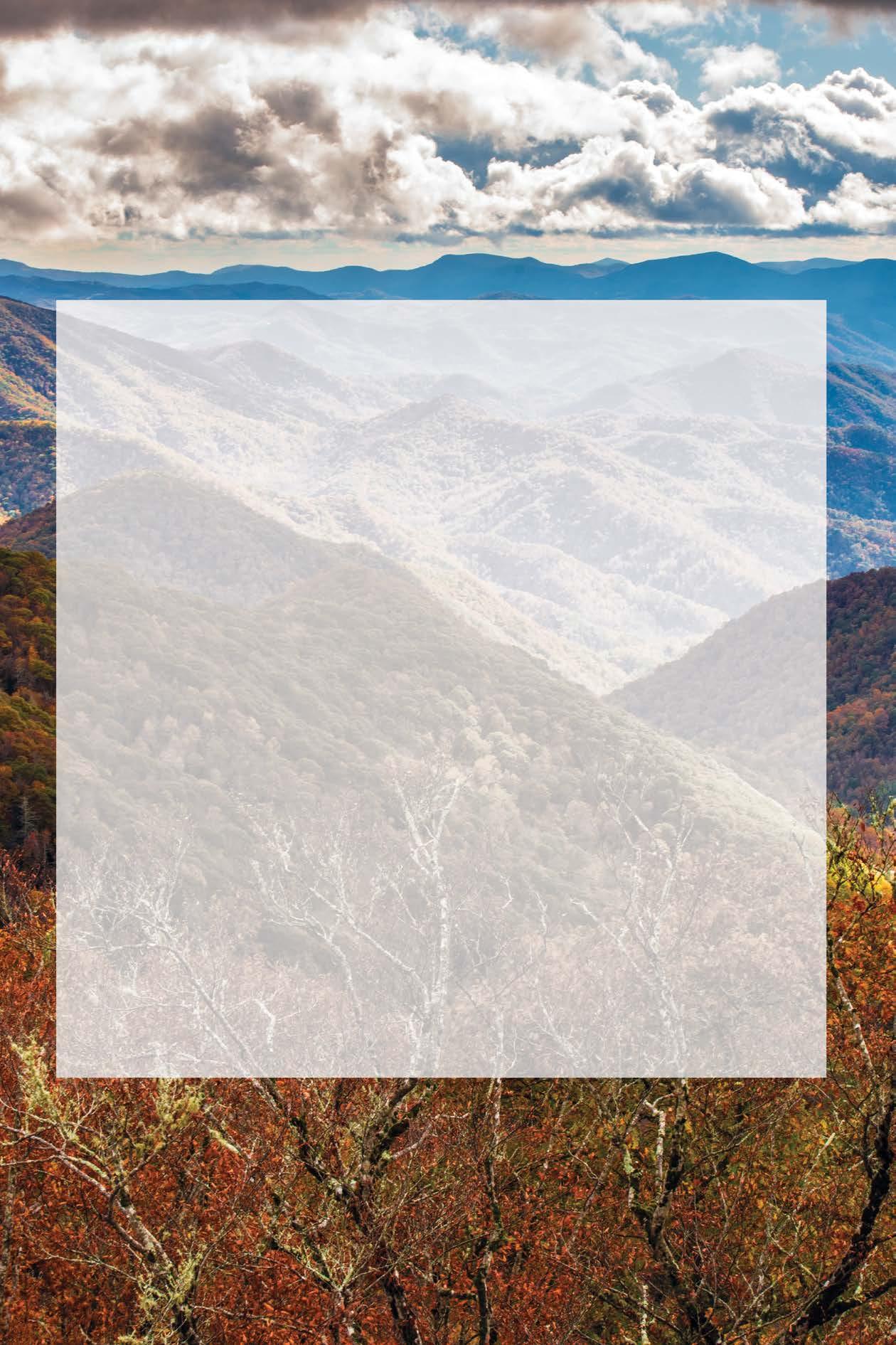
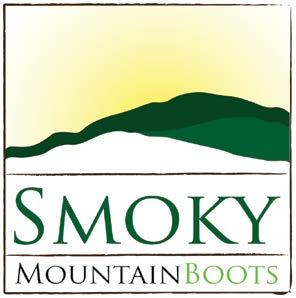
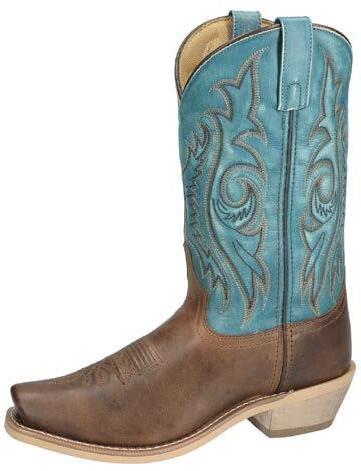


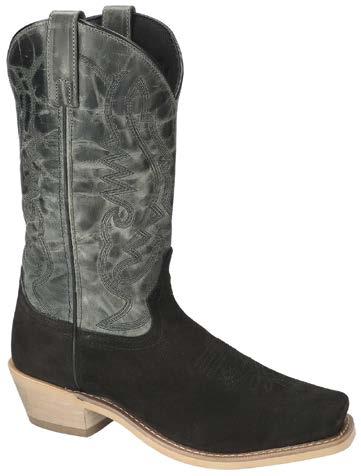
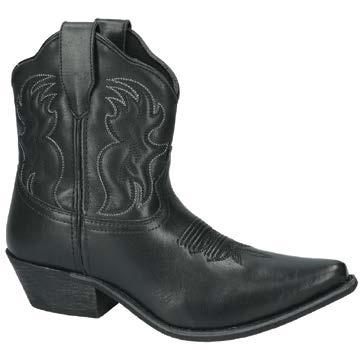
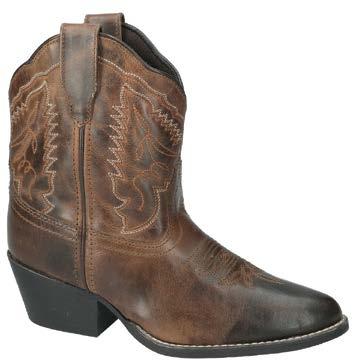
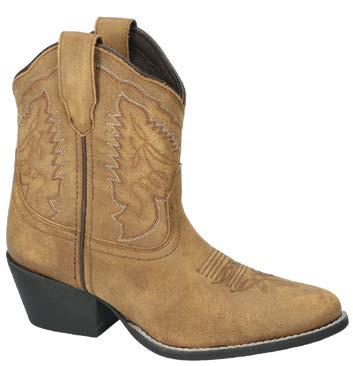


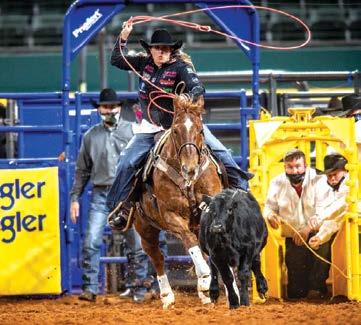

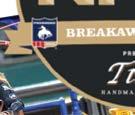

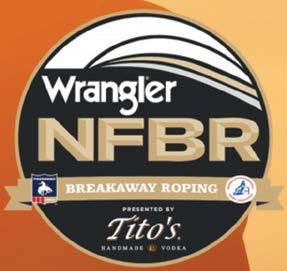

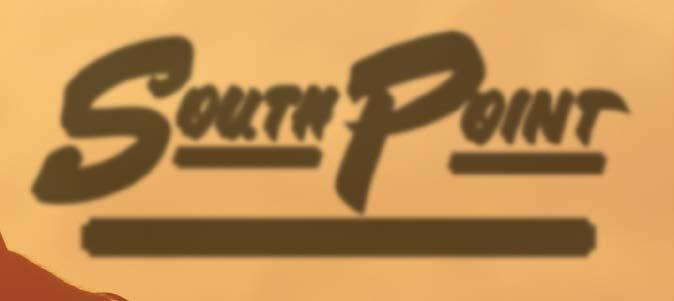


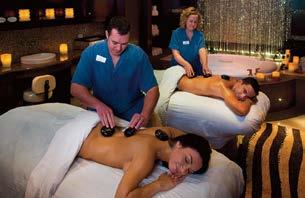
4,600-Seat
Priefert
